An amazing week in Spain: Madrid, Seville and Barcelona Itinerary
You know the cliche: a person studies abroad in college, discovers their love for traveling, and never stops talking about how good the croquetas were in Barthelona? Well, I hate love to admit that person is me. Since the time I studied abroad in 2012 in Salamanca, Spain, I returned to Spain three more times and will probably return a bunch more. Out of all the places I have visited in my short life, Spain has a special place in my heart because it was what had awaken my travel soul.
In this amazing, all you need to know guide, I bring you the following:
1) Essential logistics of traveling to Madrid, Seville, and Barcelona – the perfect trifecta for an awesome week in Spain which will show you 3 different sides of the country
2) A detailed guide on what to expect, what to do, where to stay and which tourist places are actually worth it, and which you should say adios baby to
3) And finally, a map and downloadable itinerary that you can blindly follow for the best time ever!
I always make my itineraries after I have visited the place so I can optimize for things I wish I did differently. When I am no expert on a particular topic, I always reference other travel bloggers that did a better job than I can at recommending an activity.
Now without further fluff, let’s get to your one-week in Spain itinerary!
Note that you may encounter some affiliate links in this post. I appreciate any link clicks and bookings through there 🙂
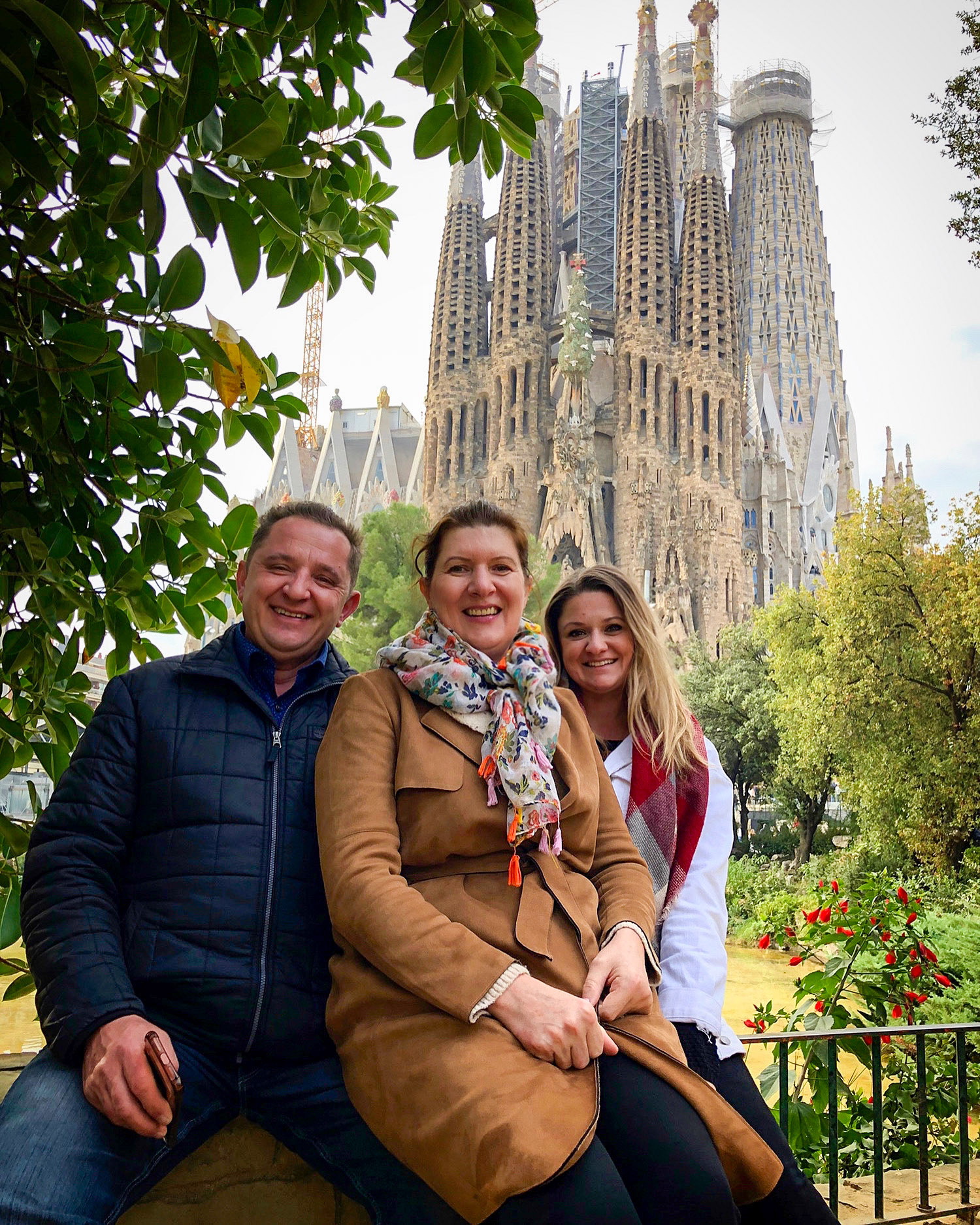
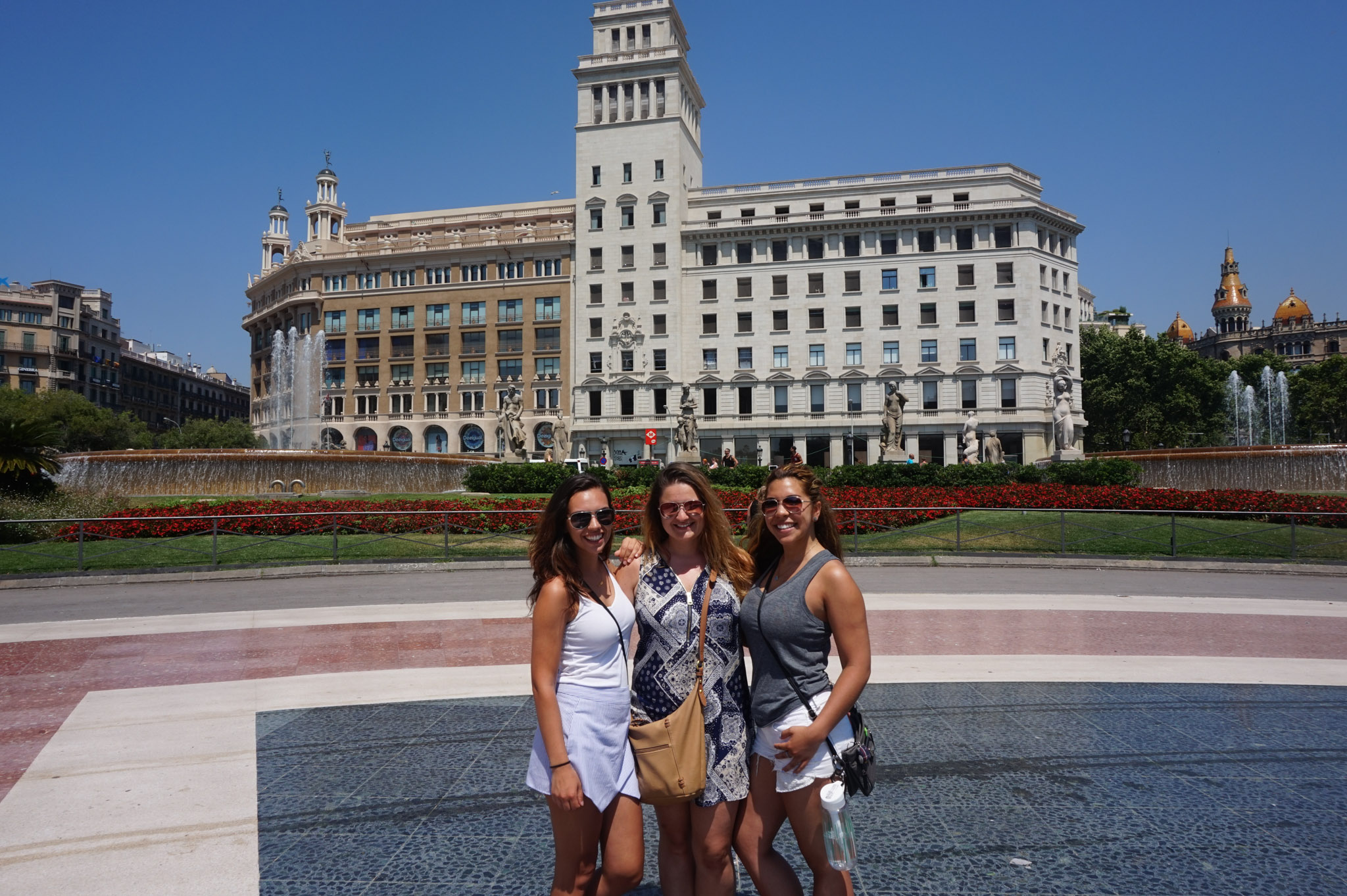

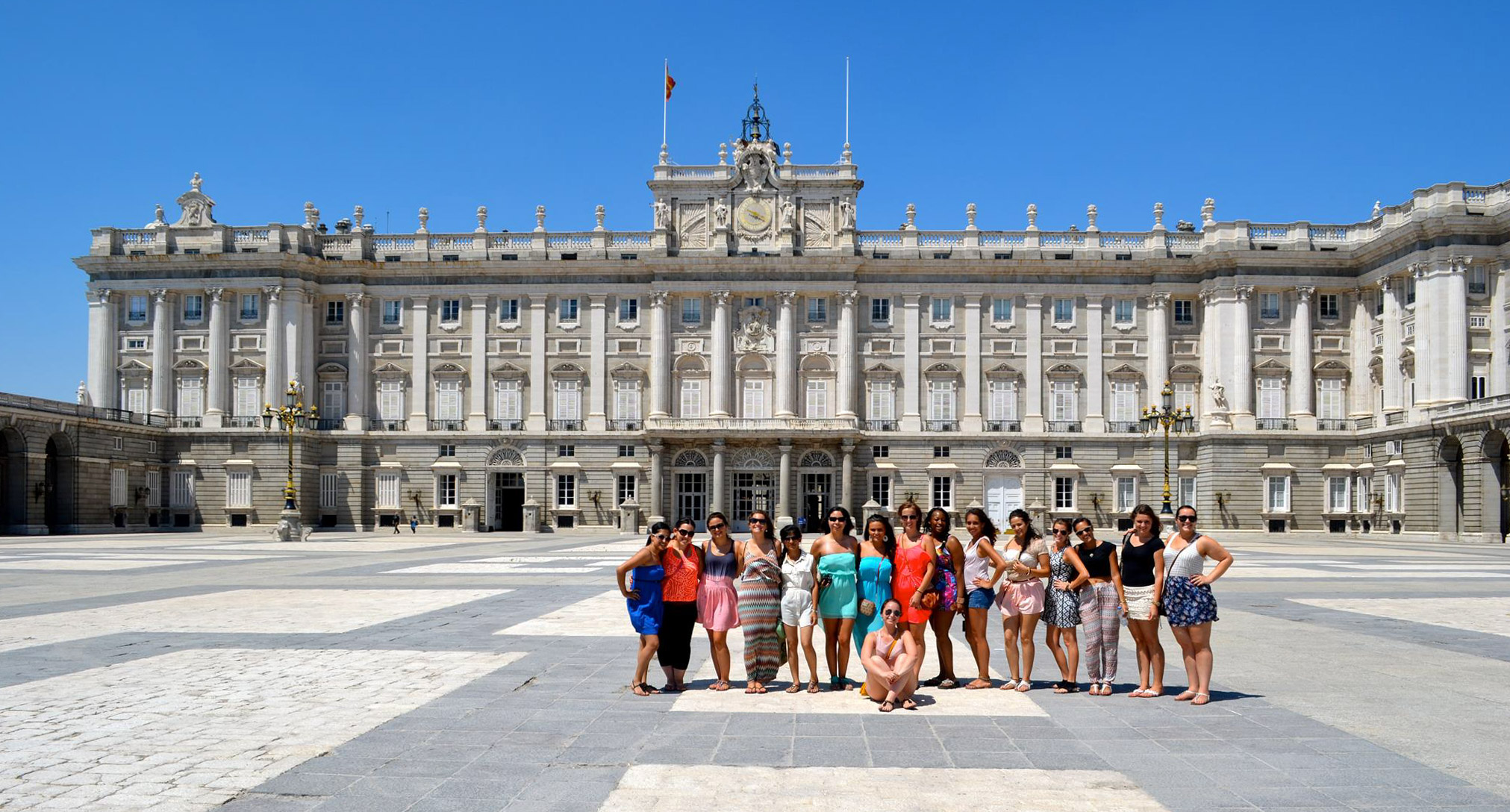


But first, some Spain travel logistics
Useful things to about before traveling to Spain
- The currency in Spain is the euro. Rather than exchanging dollars or any other currency at the exchange booth or at the airport, I simply withdraw some euros directly from the ATM (most banks do have a fee for this but it’s usually less than the booths) and then use my no fees travel credit card for everything else when I’m there.
- In Spain though, most places accept cards. In countries that do so, I always prefer to use a good travel cards that have no transaction fees, offer purchase protection and rack up points for my future plane tickets.
- Spain is generally not an expensive country but cities like Barcelona which have a lot of tourist attractions can get pretty pricey if you choose to visit a lot of them.
- While in some cities you will come across English speakers, knowing basic Spanish is a total must when traveling there. Barcelona technically speaks Catalan but everyone understands Spanish.
- Omg don’t get me started on petty theft there. It’s a huge issue.
- Each of Spain’s regions feels like a different country sometimes. That’s why from time to time something in the news will pop up about a region wanting independence.
- If you ever get a chance to visit the northern Basque region you will really see that there.
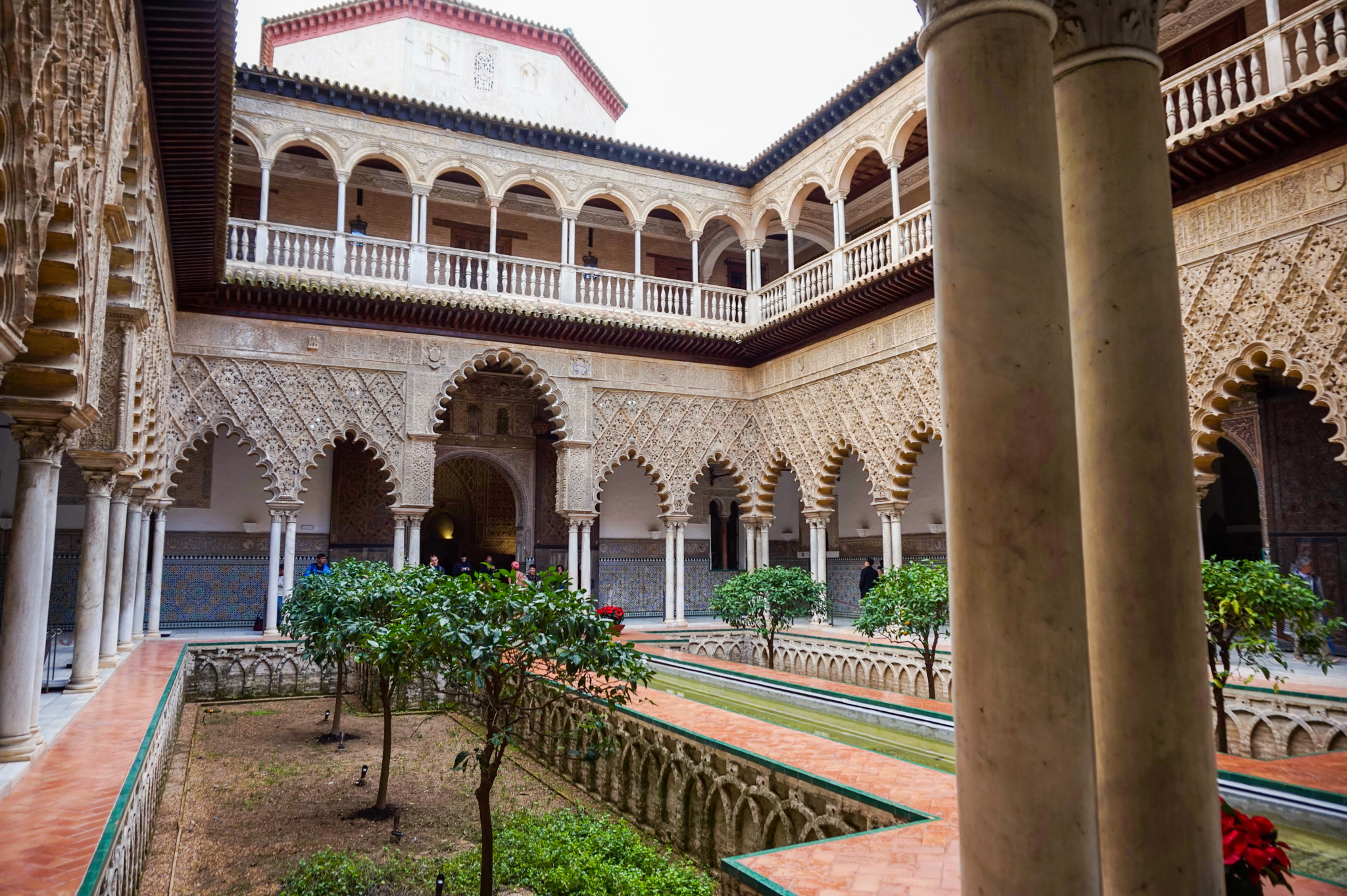

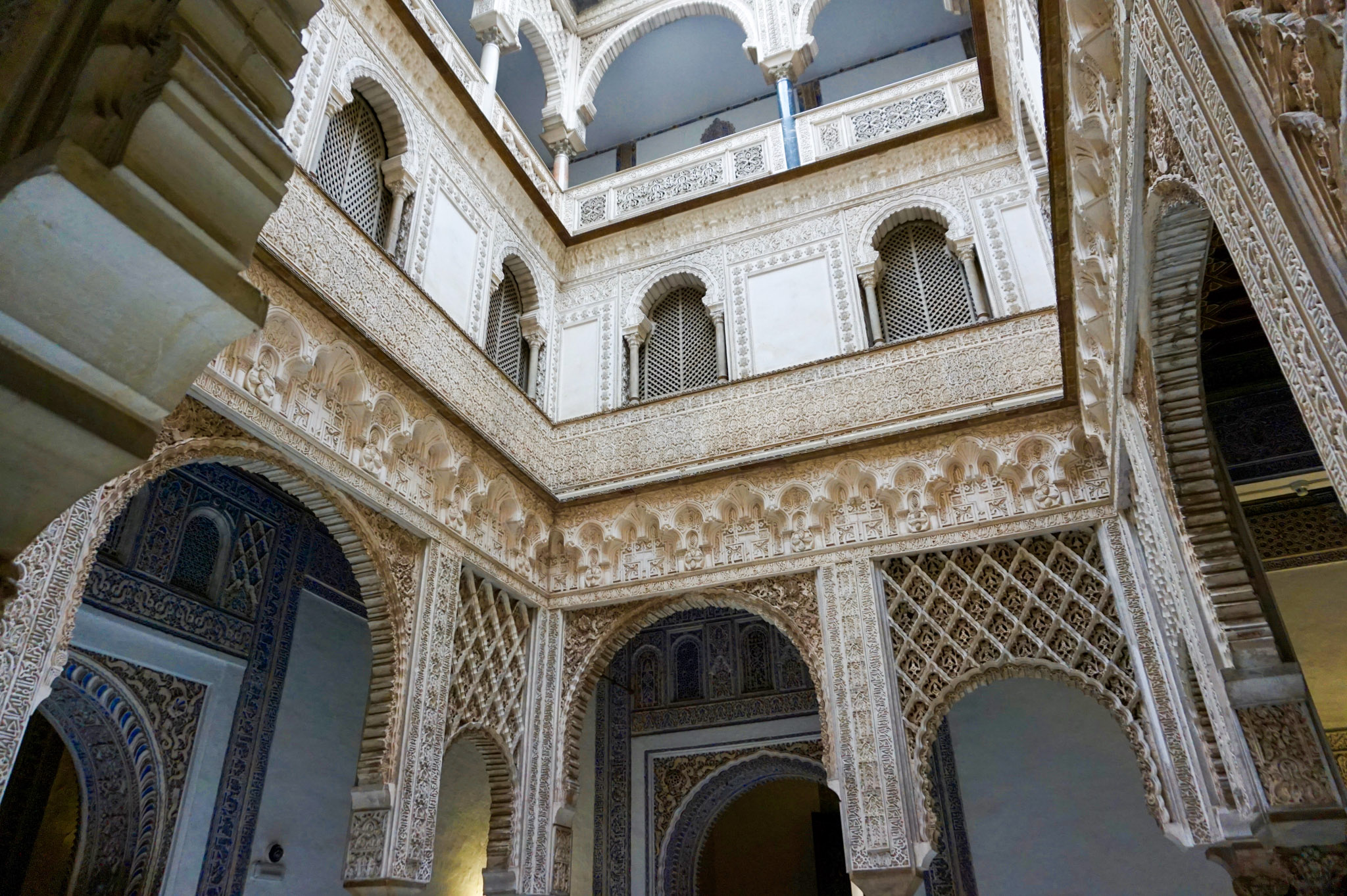

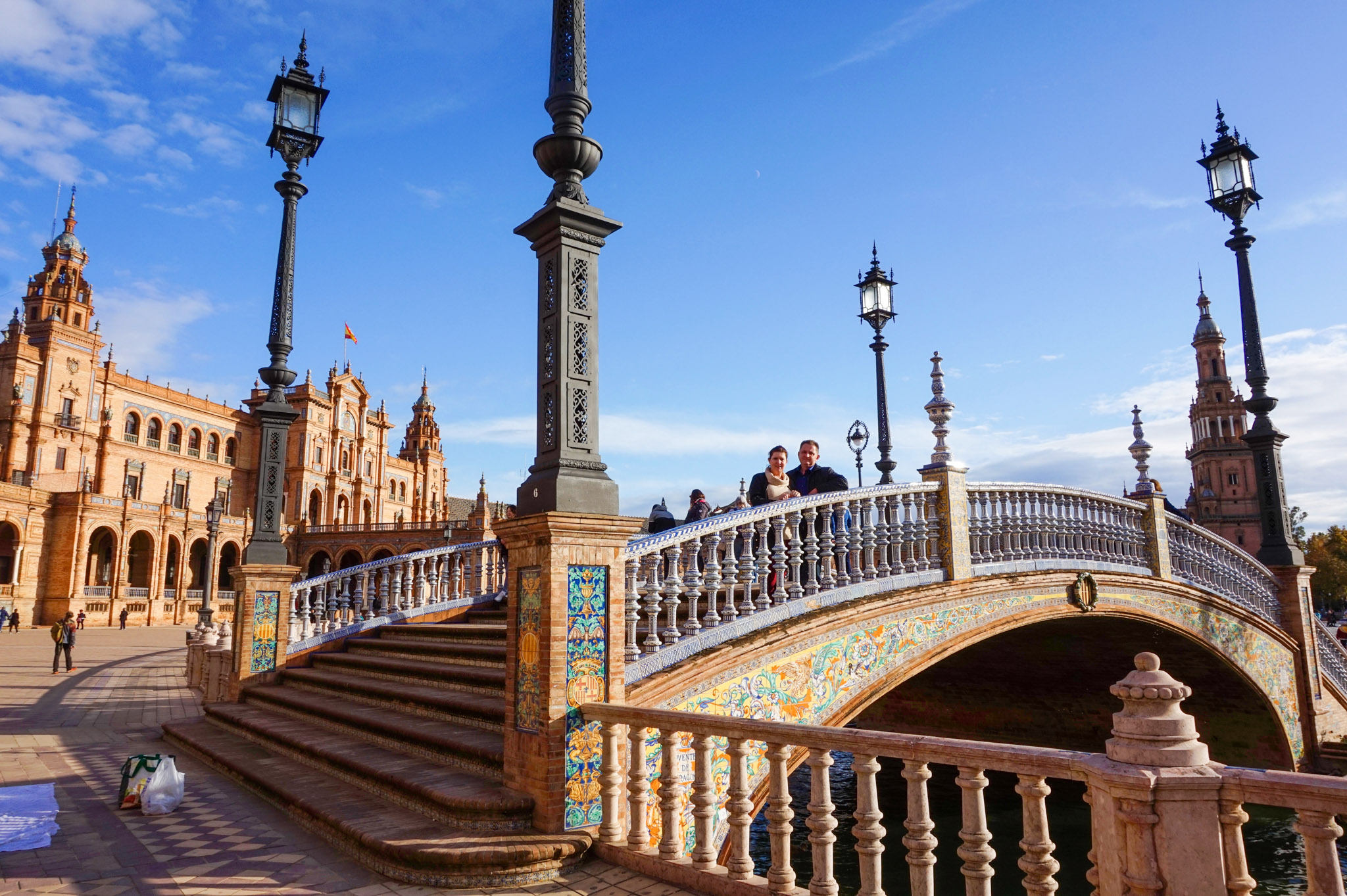

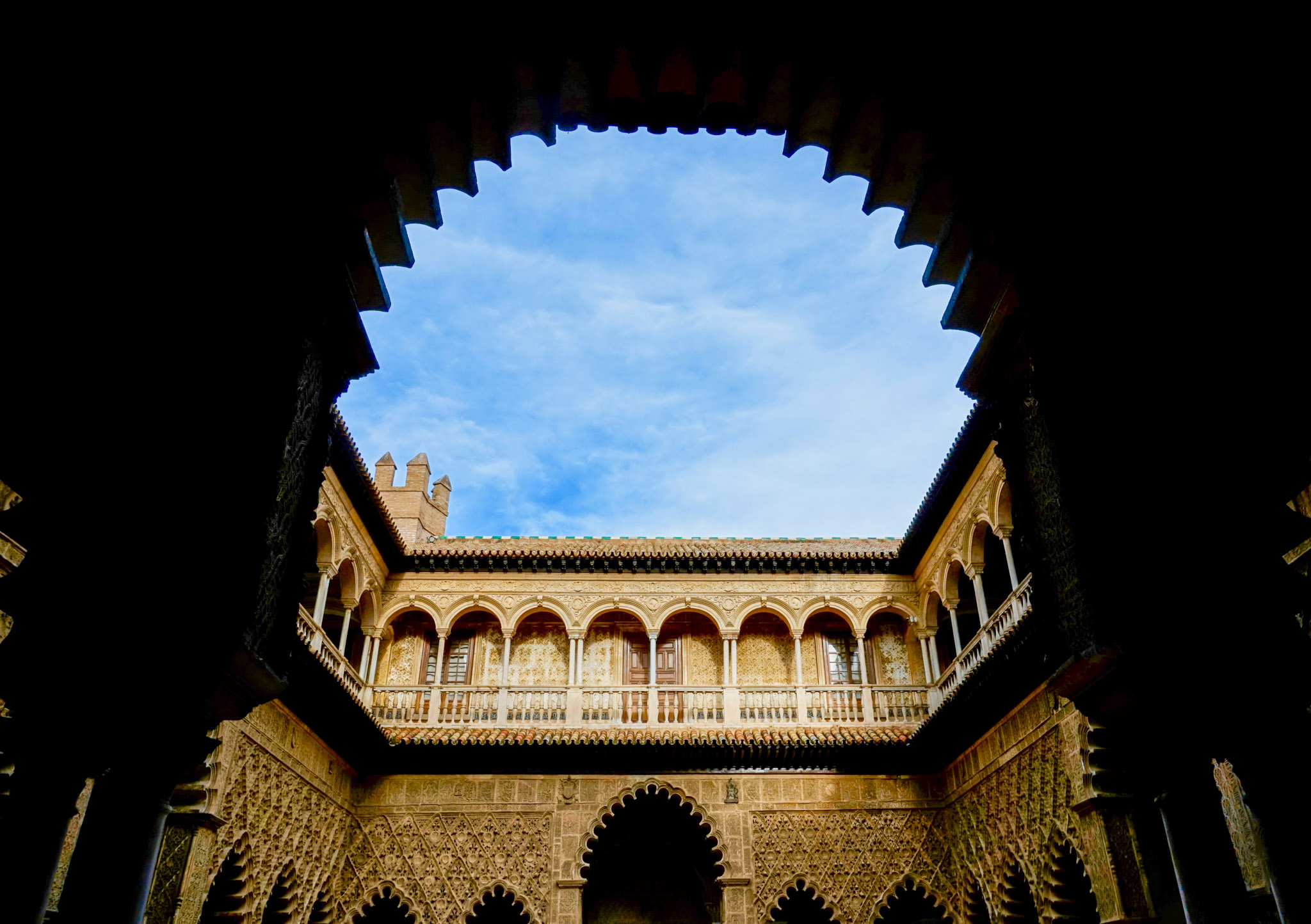

Best time to go to Spain
When I studied in Spain in mid-July, I was sweaty for the entire time I was there (I did get a nice tan though). The second time was a little better, a late June trip was more tolerable in terms of the sun and heat. My most recent trip was in November and even though the weather was pleasant, I personally prefer a little bit of warmer weather there.
So I’ll say this if you like heat, May, June and September months will have great weather and fewer tourists. If you want to save on flights and accommodations and chilly weather doesn’t bother you, October, November, and then March and April will be better for you.
If you’re heading to Spain, check out my Ibiza itinerary as well!
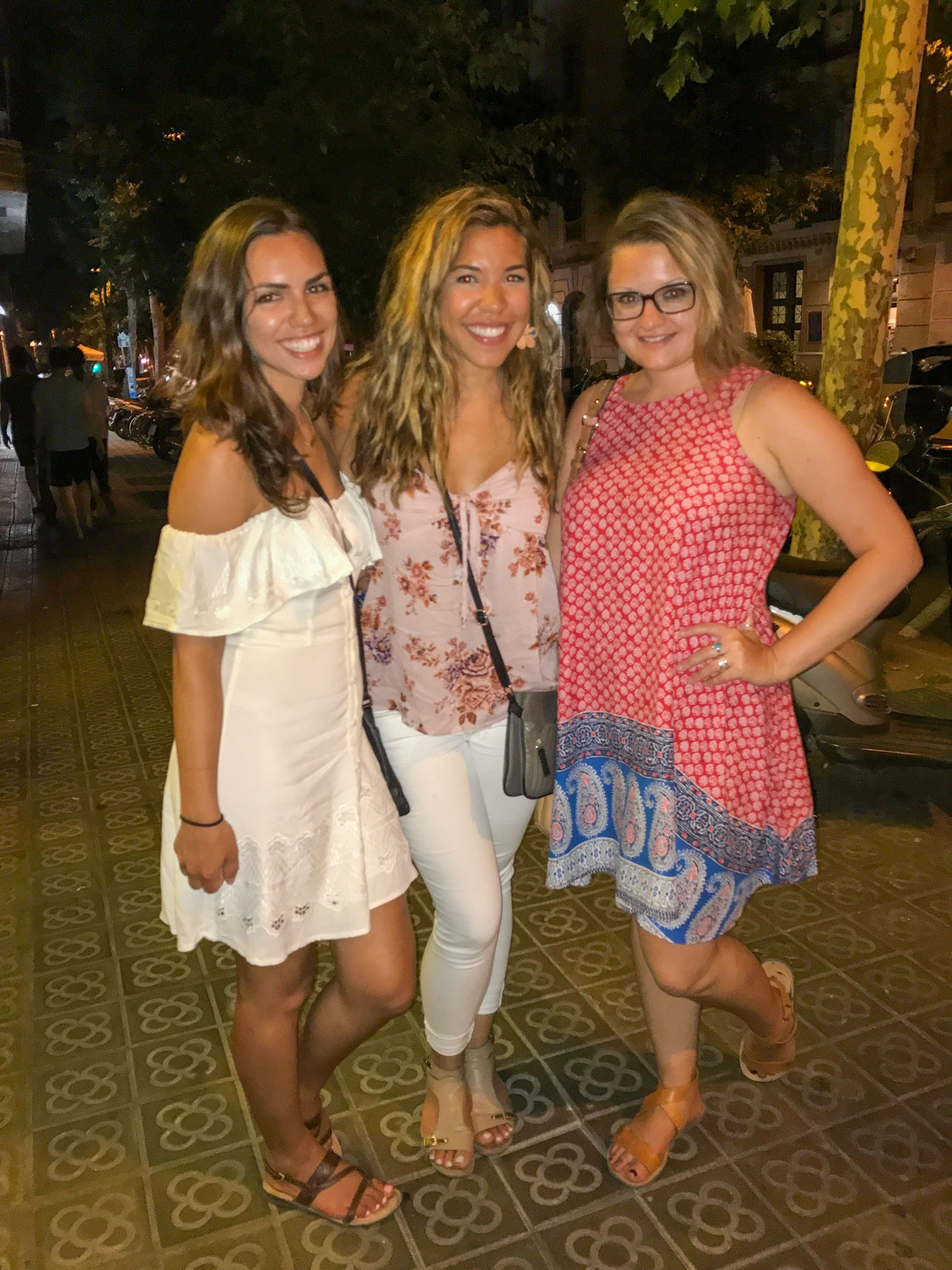

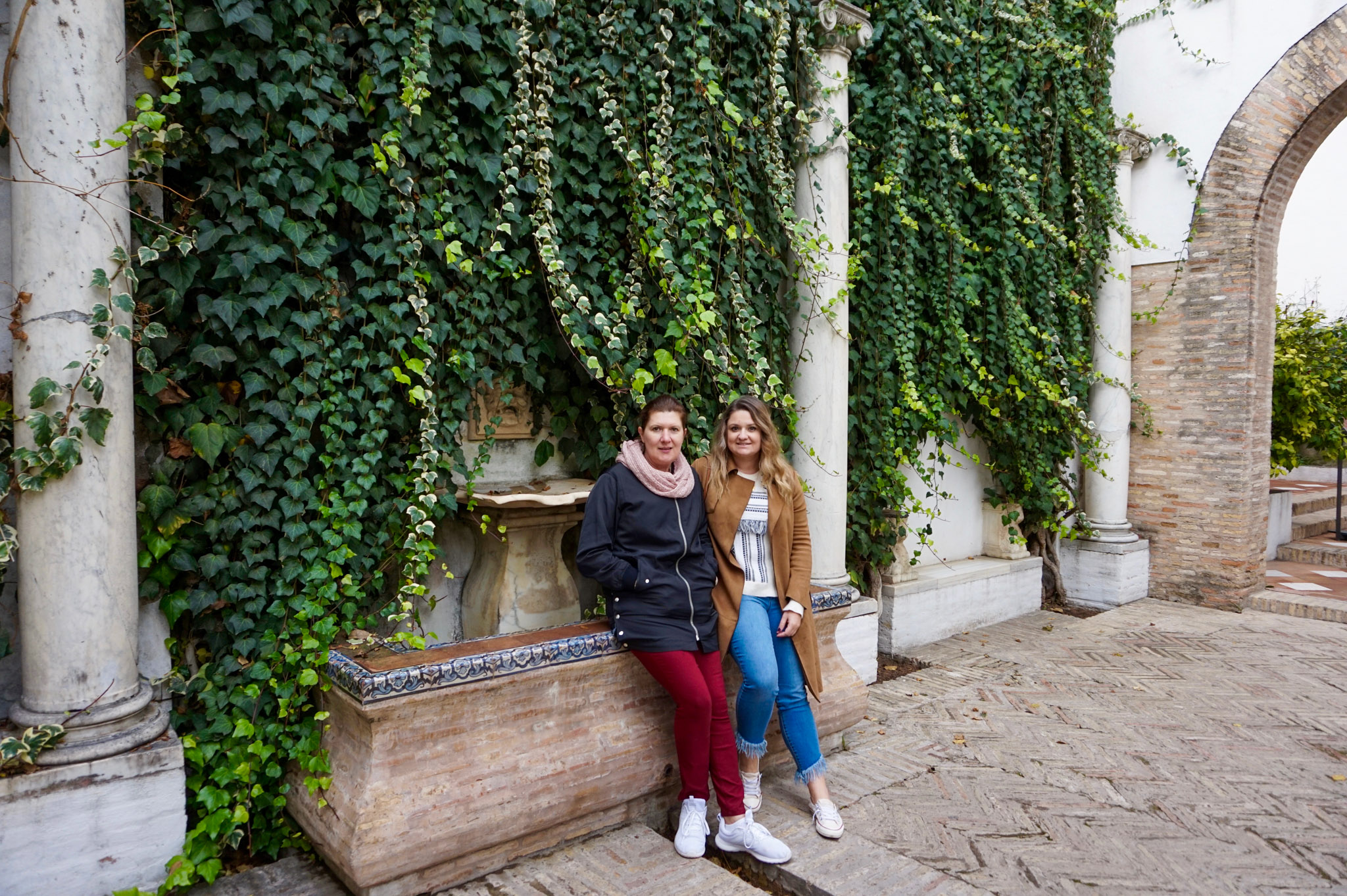


How to get to Spain
If you’re flying from the US, most likely you will be going into Madrid’s Barajas Airport and/or Barcelona’s El Prat. Here is a little trick for you, use the multi-city feature on Google Flights and create your combinations. You’d be surprised how cheap these trips can end up being. If you have the flexibility, often (not always) booking from Wednesday to Wednesday has the best prices. Here is an example of how affordable ($332!!!) a one-week nonstop flight from NYC into Madrid and out of Barcelona could be in late May:
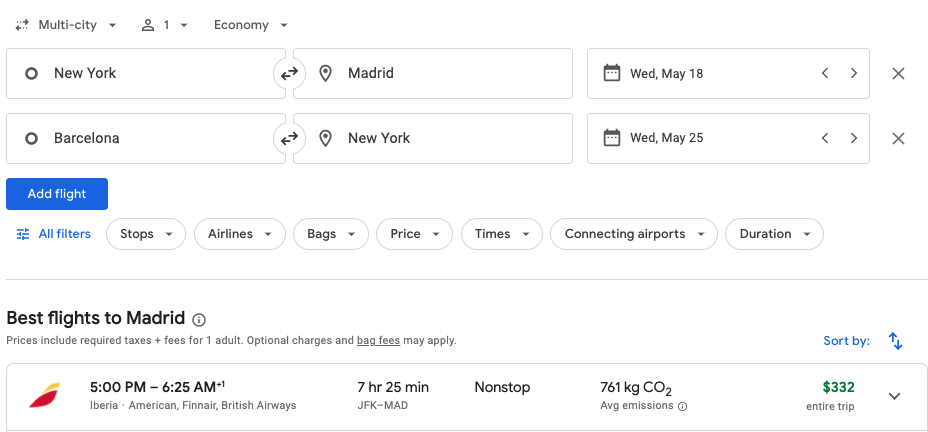

Transport between cities
Flights between cities are super cheap so before hopping on a train, check if you can fly there instead for $20. BUT note that cheap flights usually come with no included luggage so if you want to save some money, pack light. Trains are also always an option.
Within Madrid and Barcelona, utilize the metro. It will get you from point A to point B in no time and you will not need to spend a ton of money on taxis and uber. From the airport though, if you’re traveling with a group, you might save more on an Uber. Seville has a smaller metro but I never used it since most places are walkable.
If you were traveling to the countryside, I would recommend renting a car. I will have another post on a road trip through Spain’s north coast. But traveling through Madrid, Seville, and Barcelona, public transportation will be way more convenient than worrying about parking.
People in Spain
During my study abroad, I got to live like a local for a little bit and interact with real people who live in Spain. Let me tell you that almost every single individual I have met there was genuine, sweet, and welcoming to me. As a tourist though, the story might be a little different. When you’re traveling in very touristy places, you might not get as warm of treatment there. Spaniards are straightforward and no-nonsense when it comes to the service industry or any other interactions. Don’t be a stereotypical tourist (aka don’t be an asshole), learn basic phrases in Spanish and you will be totally fine.
Safety in Spain
In terms of safety, I couldn’t tell you how many stories I have heard and also experienced petty theft firsthand on of one my trips. When you enter the metro, and I am not exaggerating, treat your belongings as your children. Don’t get distracted for even one second. Especially in Barcelona, your hand shouldn’t leave your backpack or purse at any given time.
My best friend’s purse got robbed in a matter of a 30-second oversight inside a crowded metro. And the worst part is that we were super aware of how bad theft is and those little shits still outsmarted us. Aside from small robberies, Spain is a super safe country so don’t fear.
Must-try foods in Spain
At the very very very minimum, I list the foods that you should absolutely try when visiting Spain. There are SO many more dishes than this and the list grows even longer when you add regionality to it. However, here is a super basic list for you of foods that you should sample in your Spain itinerary:
- Paella: This classic dish originally from Valencia is a Spanish staple. Paella has a rice base with either meats or seafood additions. Since it is very popular it is easy to encounter now so great versions of it in the more touristy areas. Make sure to find local restaurants for good paella.
- Croquettas: These little fried breaded snacks are one of my favorite foods in Spain. The most famous kind is a Jamon (ham) one but they come in many variations. I love them all.
- Patatas Bravas: Another gem of your tapas selection is a good dish of patatas bravas or little potatoes with some delicious aioli or other sauce on aside. A must-try in Spain.
- Tortilla Espanola: Or Spanish omelet which is made of eggs and potatoes, and sometimes onions. It is a very traditional dish in Spain.
- Chorizo: A pork sausage that can be spicy! It’s a great appetizer dish.
- Jamon Iberico: Iberian ham is a cut of pork leg. It’s very tasty and special meat that is can be very expensive outside of Spain.
- Pulpo: Octopus dish often served on the tapas menu.
- Gambas al Ajillo: Garlic shrimp is also another seafood staple dish.
- Pan con Tomate: This is a super simple concept food, a hard bread with smashed tomatoes. It is also a perfect appetizer that goes with many meals.
- Churros: There is nothing better than a thick hot chocolate along with some hot churros! Make sure to try these for dessert.


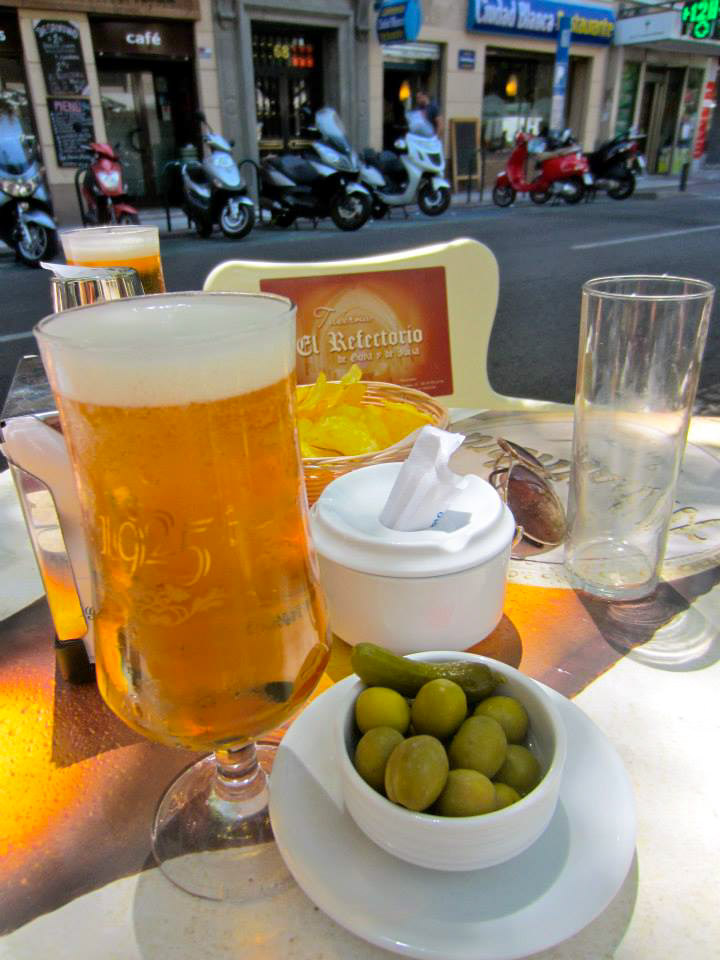

The perfect itinerary for an amazing week in Spain
A week in Spain is barely an introduction to the country but that should in no way stop you from booking it. The most beautiful cities in Spain are the local hidden gems but before you venture off to those, you need to see the big guys first.
The Spain itinerary I planned below will show you three very different cities located in three very different regions:
1) First, 2 days in Madrid, which has a more cosmopolitan version of life in Spain
2) Then 2 days in Seville in Andalusia in which you can’t miss the Moorish influence
3) Lastly, 3 days in Barcelona in Catalonia from which you will distinctively remember Gaudi’s style
As you travel through these places, you will see how unique each region is and appreciate each of them in its own way. You can do this itinerary in the opposite direction too, as transport between these cities is super easy.
Madrid Itinerary
Transport in Madrid
Arriving at Barajas Airport in Madrid, you won’t be too far from the city center. A fixed taxi fare could work for a couple of people but my suggestion is to take line 8 metro or C1 train to Atocha Station (2.60 euro per way). When you’re in the city, the metro will take you anywhere you want to go. The whole system is honestly super impressive. The metro map looks a little intimidating at first but once you get on a couple of rides, you will master it in no time. The city created a cute metro map too for tourist attractions:
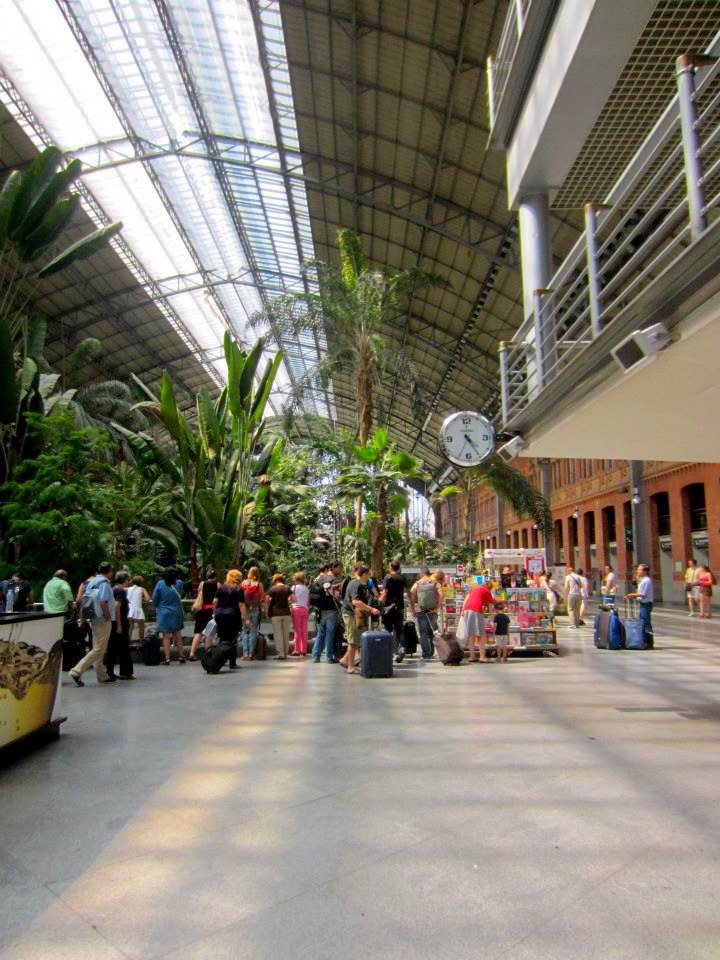

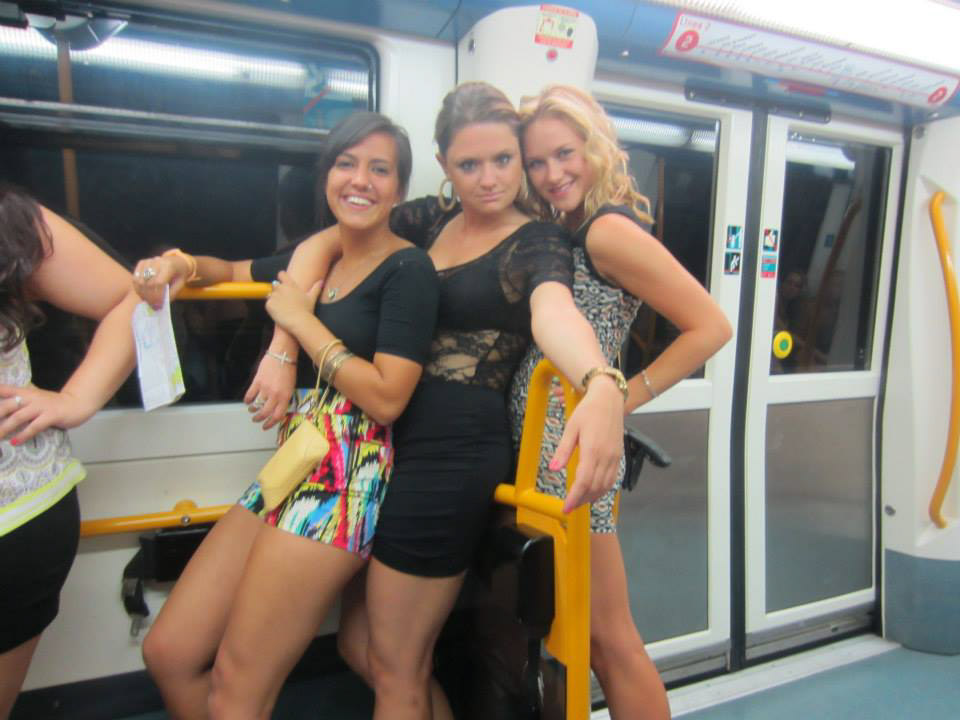



Where to stay
There is certainly no shortage of hotels, hostels, and Airbnbs in the city so book one depending on your comfort and budget level. The last time I stayed in Madrid, I really wanted to be in an apartment right in Plaza Mayor with some good balcony views. I made my dream a reality but the apartment wasn’t the nicest one I have stayed in.
Bojuee
$400+
Mid-Range
$200-$300
Budget
$200<
Day 1:
Now let’s get to the actual Madrid itinerary for the first portion of the trip. You will likely arrive early morning from the US direction so drop your bags off at your accommodation (even if check-in isn’t ready), freshen up, and get some coffee to prep for a full day ahead.
Morning Bite and Plaza Mayor
Although it is a pretty touristy spot, I still recommend grabbing a quick bite at Mercado San Miguel. There are many stands with snacks and drinks. My favorite has to be the Aperol Spritz booth too. It’s the perfect introduction to the city from a touristy angle. As with any heavily popular place, make sure to watch your belongings here. After you grab a snack, take a 2-minute walk to Plaza Mayor, the main plaza in Madrid. Although I wouldn’t say that this is my favorite plaza I have visited, it’s still nice to see.






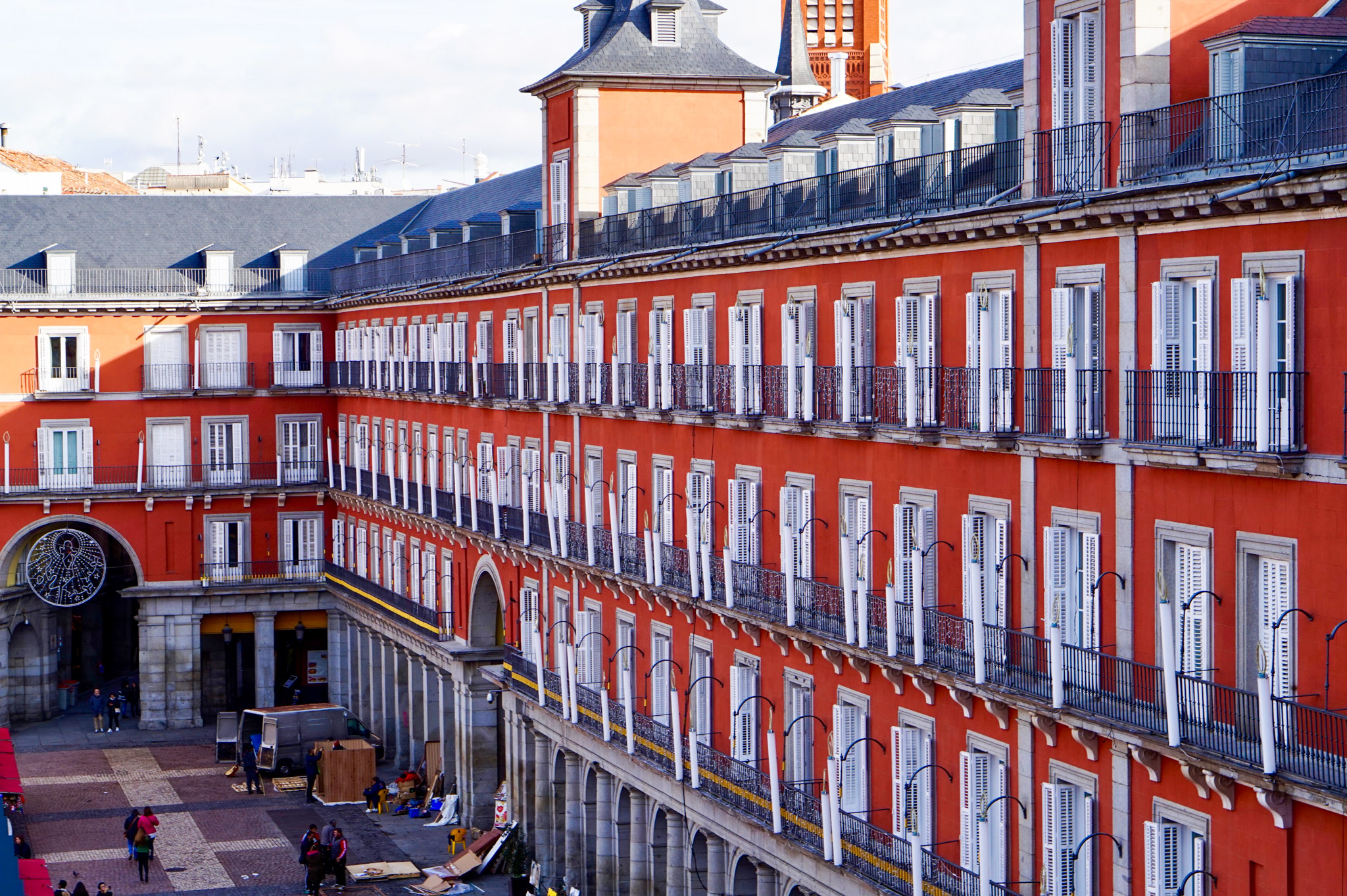

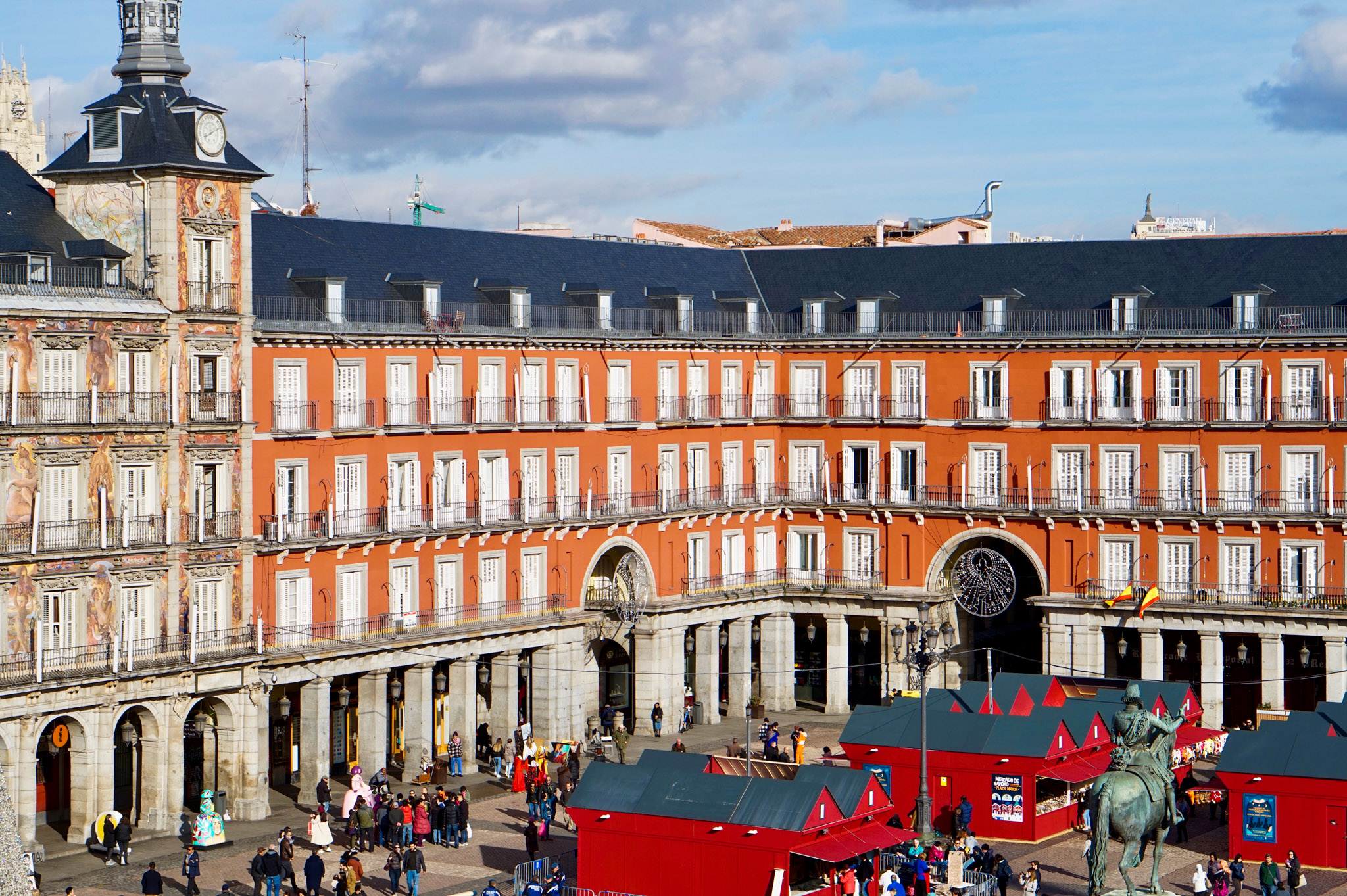

Royal Palace and/or Campo del Moro
The next stop for the day will be Almudena Cathedral. It’s a beautiful church right next to the Royal Palace which you’ll be visiting next. There are guide tours to go into the palace and you can see a limited amount of rooms when you get there. I remember it being very grand and I personally loved learning the history behind it.
However, if visiting palaces isn’t one of your favorite things to do, you might not enjoy this part. Instead, you can head to the beautiful Versailles-inspired gardens located in the back of the palace or Campo del Moro. The entrance is located on Paseo de la Virgen del Puerto, which is a short walk away. It’s a free park perfect for some afternoon relaxation.







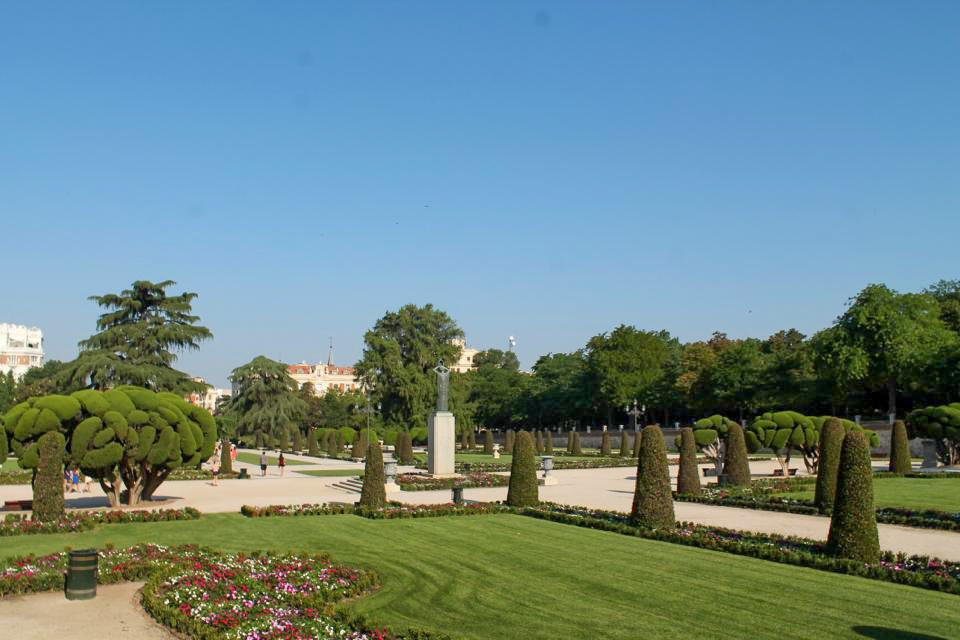

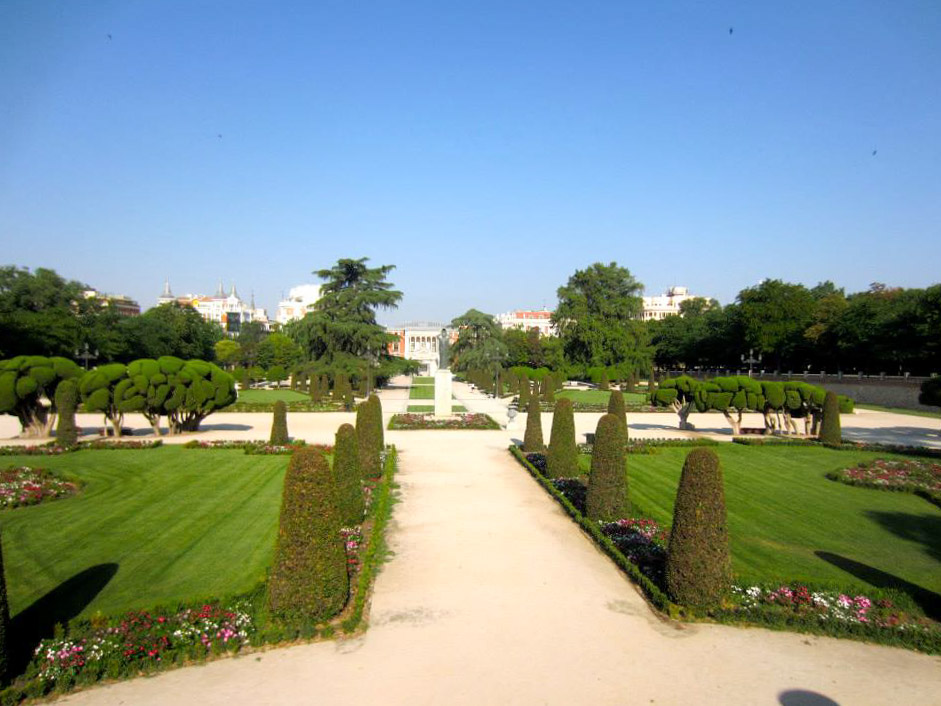

Afternoon Wrap
Coming back, you can walk along Calle Gran Vía, the main shopping street in Madrid. Pretty touristy and one of the more popular places in town. Next, a short detour off Gran Via will be the famous Chocolatería San Ginés. The churros there dipped in thick chocolate are out of this world. After this part, I’m sure you’ll want to rest for a little so head back to the hotel for a little siesta. Don’t worry, Spaniards eat dinner super late so you don’t need to rush to your dinner reservations.










Dinner and Flamenco maybe?
One option for dinner is booking a dinner and flamenco night in one. It is a popular activity in town but since you’re going to Seville (Flamenco originated in southern Spain), I’ll keep it as an open option for you which city you’d like to do it in. I desperately wanted to stay away from the main tourist traps and found a less-known restaurant called Cafe Ziryab which had a show on the day of my visit along with a dinner option. It was ok but certainly not the best flamenco show I have seen (the best was actually at a complete hole-in-a-wall in Granada). So I’ll say this, sometimes forcing yourself into trying not to be a tourist will leave you with a subpar experience. If you’re going to do this, do it right and book yourself a night at a place like Cardamomo Tablao Flamenco.
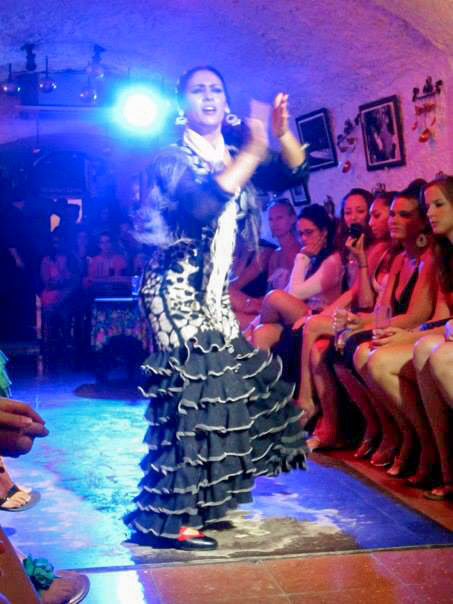

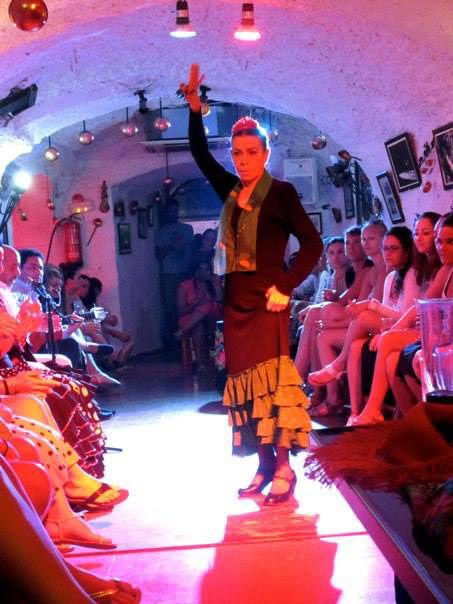

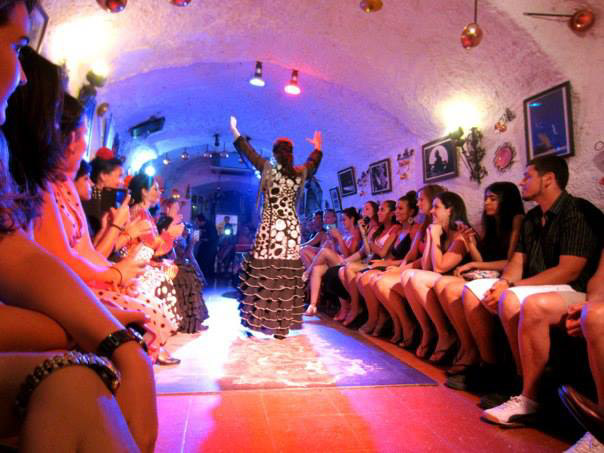



Day 2:
Morning at the Museum
Normally I’m a person who enjoys museums but isn’t crazy fascinated by them to the point where I have to go to one in every new city I visit. In Madrid though, I have to say that I was simply speechless when I explored not one but two of the world-famous museums. I plan to visit another time in the future because let’s just say that the artwork there is like nowhere in this world. Visiting two museums in one day may be a little much though so I’ll let you choose which one vibes more with your soul.
Museo Prado is the more classical art option with artworks by artists like Diego Velázquez, El Greco or Francisco Goya who were simply brilliant. Reina Sofia houses most of the 20-century art with artists like Picasso, Salvador Dali, and Joan Miró. My favorite painting there was the Guernica by Pablo Picasso which I wanted to see for years. Overall I’ll say that either of these museums is worth paying a visit if you’re in Madrid. They’re really impressive and magical. Entry to Prado is 15 euros and 12 euros to Reina Sofia.
Retiro Park
One of the most beautiful parks in the city is El Retiro and both of the museums mentioned above are located super close to it. It’s a pretty big park and even has a pond on which you can rent a cheesy object to paddle. This park is amazing to see in the summer. Make sure to check out Palacio de Cristal and the lake. There are so many more places located within it so you can spend the rest of the day here exploring if you really wanted to.
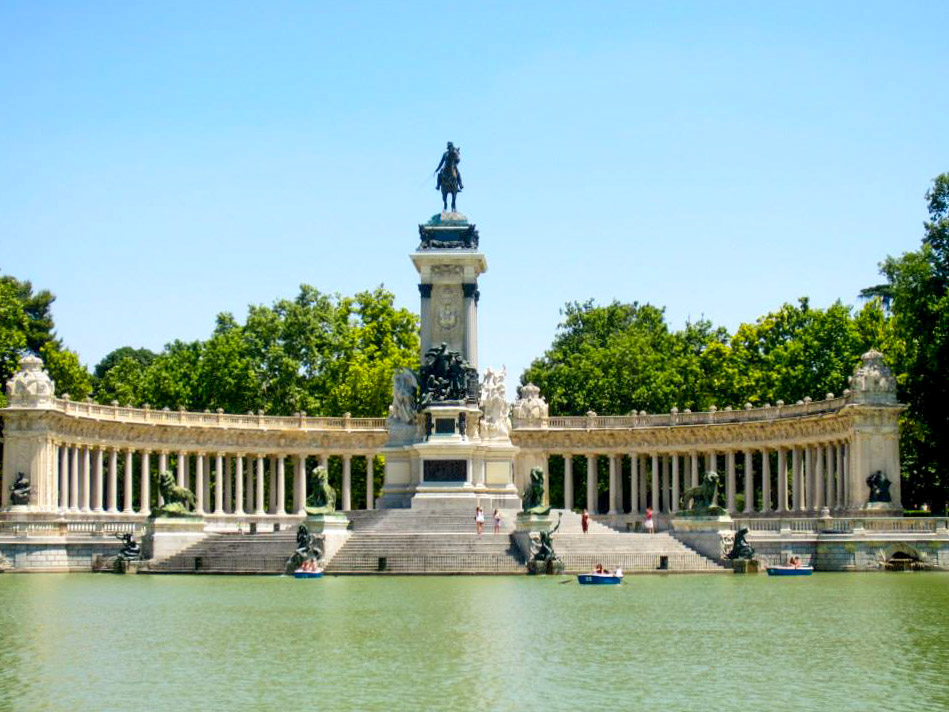

A little party never hurts
After a full day of exploring, head out for some tapas and then for a little party. When in Spain, you simply need to go out. Here are some party areas for your nightlife activities:
- Huertas: is an area of Madrid popular with young people
- Malasaña: a hipster, bohemian party vibe
- Chueca: a lively gay neighborhood
- Salamanca Neighborhood: a more boujee vibe for nightlife
I personally partied at El Doblón, a super cool club loved by a friend who lived in Madrid. The whole place looks like you’re inside of a ship and you probably won’t find a single tourist there.
Additional Options
If my suggestions above didn’t vibe with you, here are a couple more places to choose from:
- Santiago Bernabéu Stadium: Tour the home stadium of Real Madrid will be a treat to visit for any soccer fanatic.
- Matadero Madrid: A former slaughterhouse that is now an art space for multiple exhibitions and cool hang-out space. Check out their website for current exhibitions.
- Las Ventas Bullring: Like it or not this is still a thing in the Spanish culture, you can tour this place if you want to or even see the fight live. Personally not my thing.
- Food Tours: I love love love food tours, it’s the best way to see a city! There are many vendors to choose from in most cities and I honestly have not taken one yet that has failed me. They can be pretty pricey but you get food, drinks, and a small history tour. I always go for the mid-range prices as the cheapest ones have more people and suffer in quality. The really pricey ones are usually not that different from the midrange ones either. TripAdvisor reviews are reliable for the most part.
Here are some food picks from the locals too.
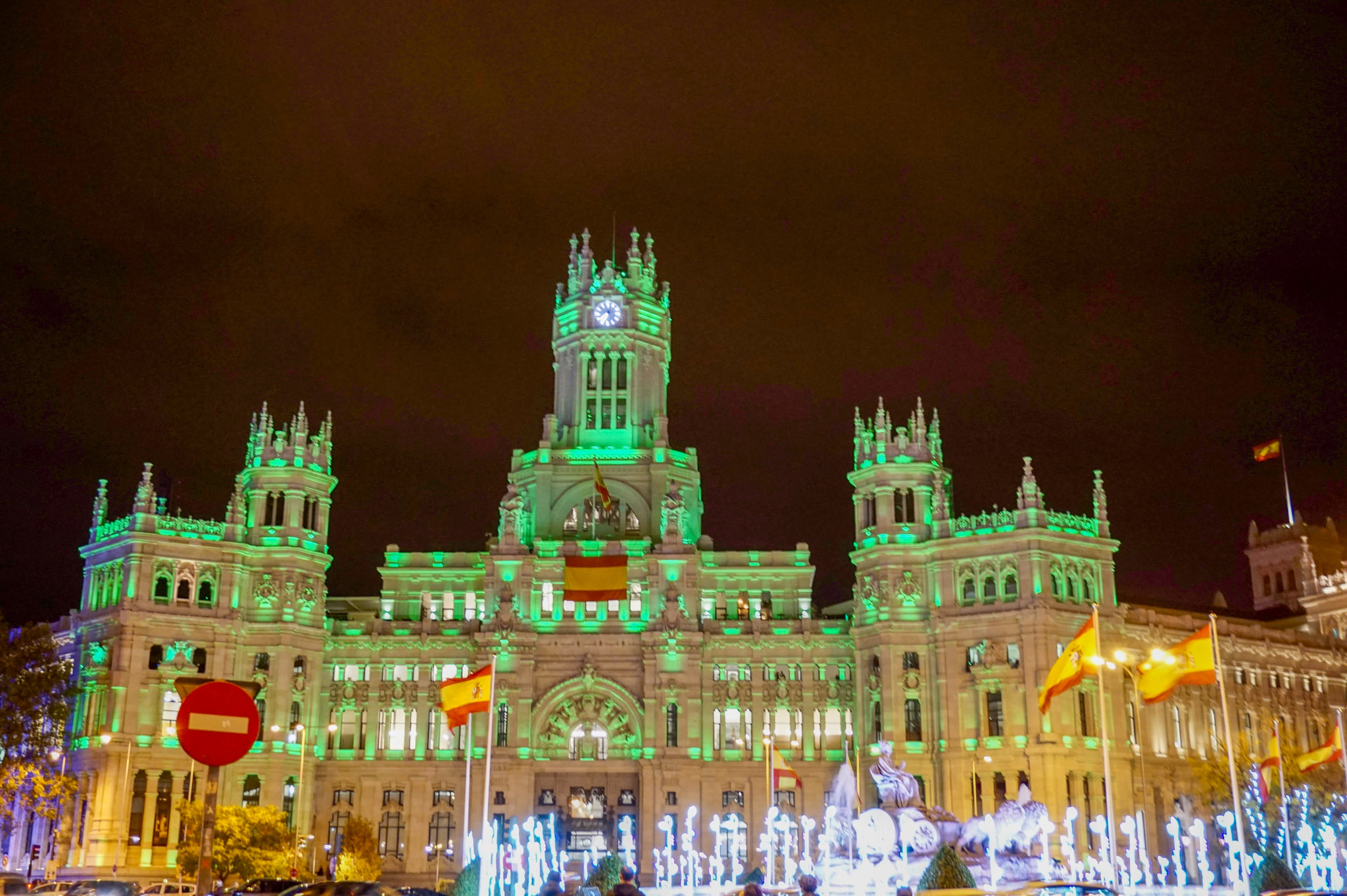



Seville Itinerary




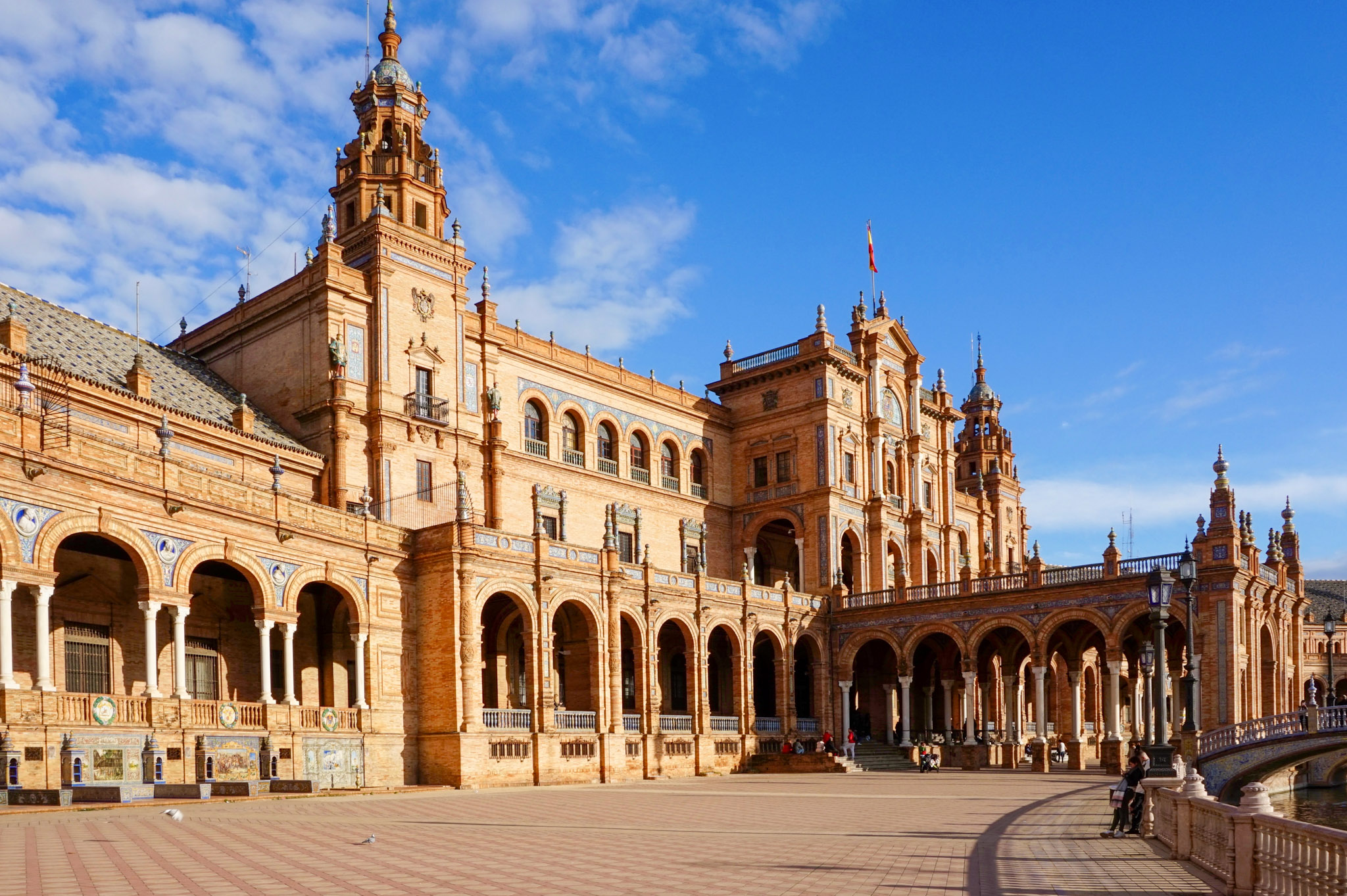



Transportation Logistics
To get to Seville from Madrid, you can take a 1-hour flight or a 2.5-hour Renfe train from Atocha Station. Depending on the time of the year, they can have similar prices with the added flight luggage cost. I recommend arriving as early as you can in order to maximize your time in the city. Although the city is not that small 2 days in Seville is enough to see the major highlights of the city.
From the airport, you can take a Line EA bus to Plaza de Armas for 4 euros or you can take a flat rate taxi for about 20 euros there too. Within the city, most of the places of interest to you will be within walking distance. There is one metro line and some tram services too.
Where to Stay in Seville
With limited time I recommend staying central to everything in Centro or Barrio Santa Cruz. That way you won’t have to worry about transport. Airbnb is always a good option, the one I stayed at was nice but I had issues with check-in so I won’t recommend it to you guys. You can grab a nice one between $60-$120 a night price and some even have crazy views of the points of interest.
Bojuee
$400+
Mid-Range
$200-$300
Budget
$200<
Check out amazing hostels in Seville too!
Day 3 in Spain:
Plaza de España
Start your Seville itinerary with this super grand place, Plaza de España. Despite looking like a historical structure it was constructed only in 1928 for an Expo event. There is so much detail in this plaza and each nook has something beautiful in it. The middle of the plaza has a pond on which you can rent a small boat and spend some time enjoying the surroundings from that angle. Catch an impromptu Flamenco show too!


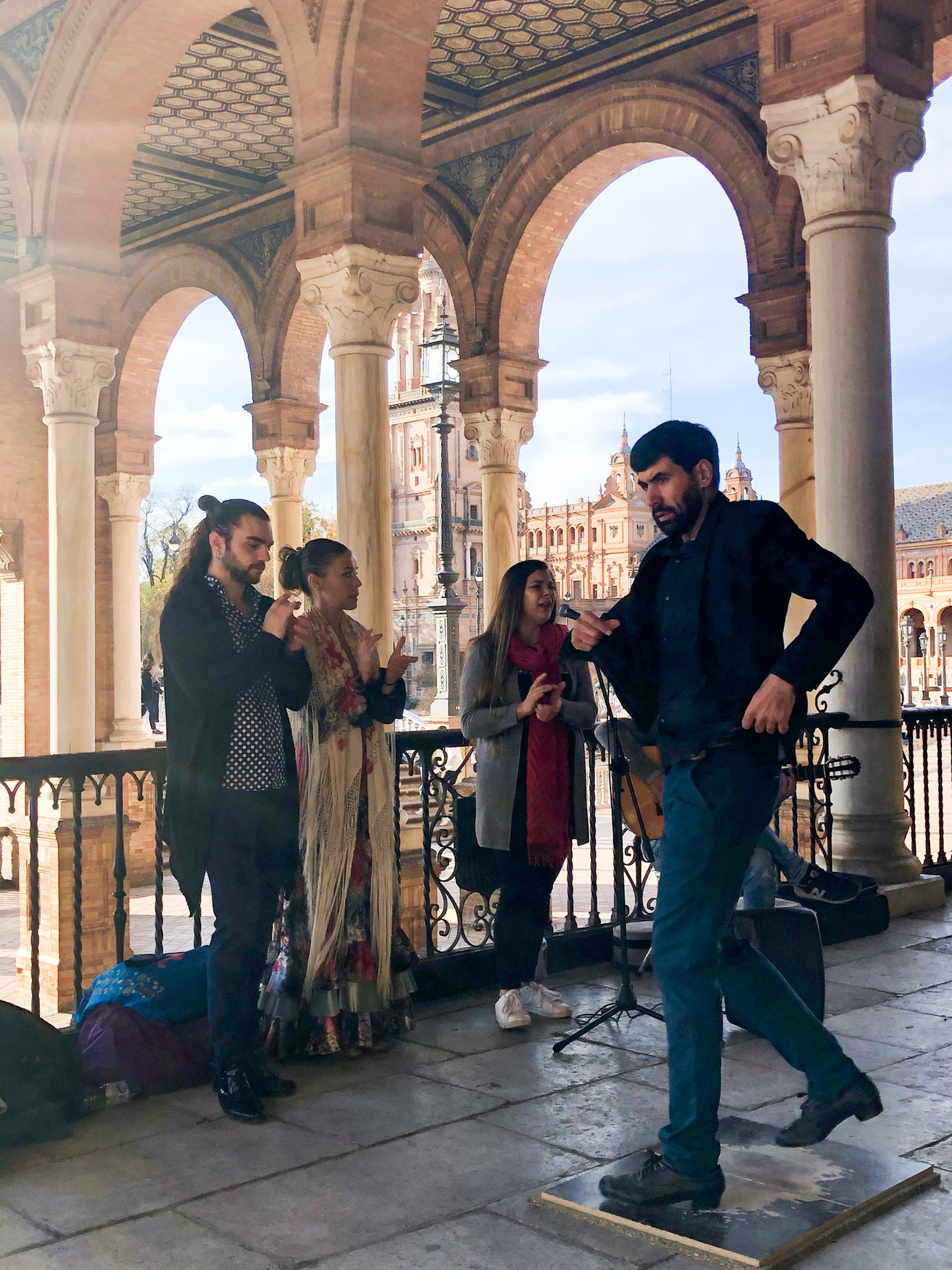





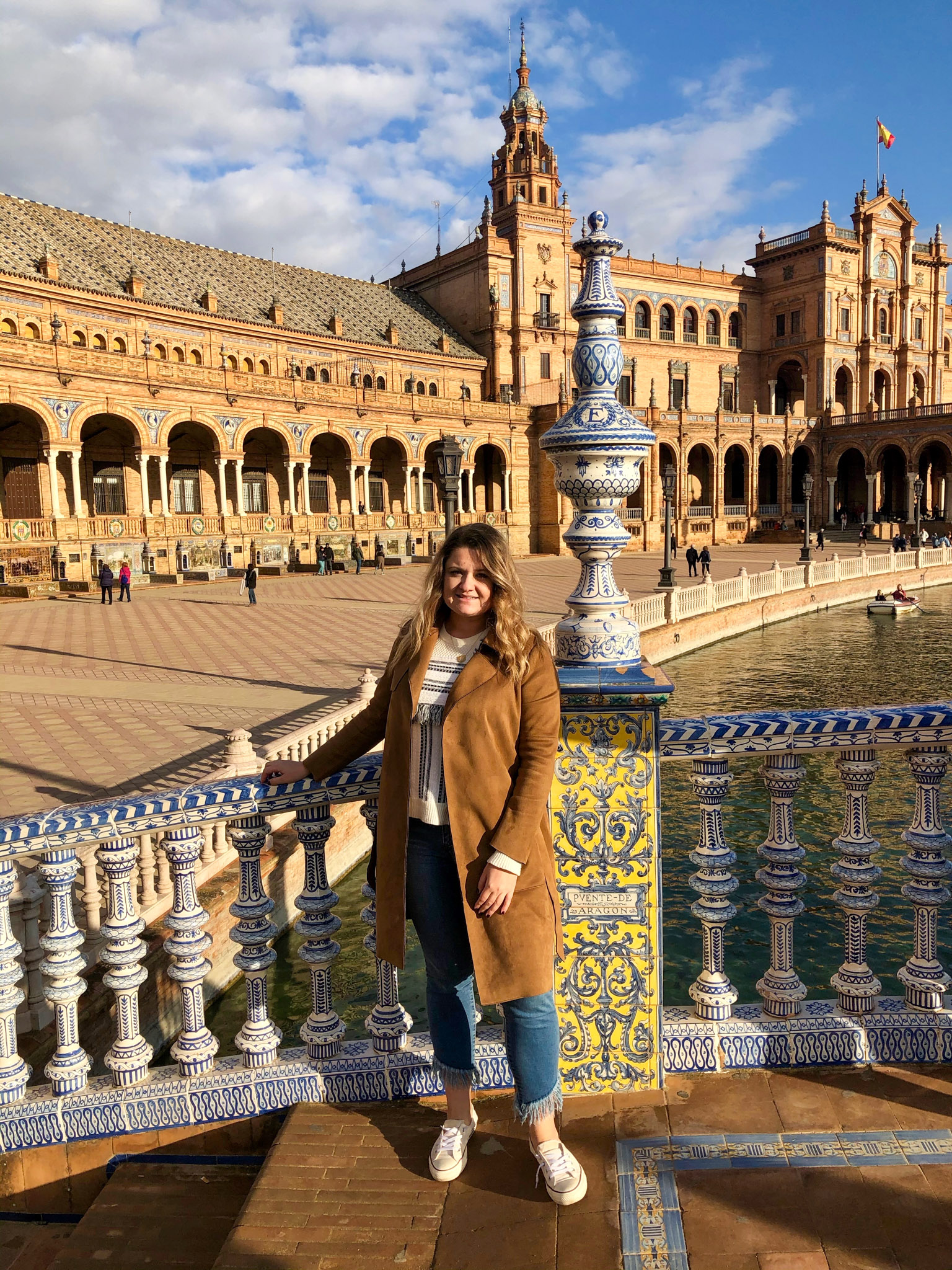



Parque de María Luisa
Connected to the Plaza, you will find the stunning Parque de María Luisa. I loved strolling through the little paths and admiring the flowers and trees. In the southern part of the park, you will find Plaza de América which has three important structures surrounding it: the Museum of Popular Arts, the Archaeological Museum, and the Royal Pavilion.




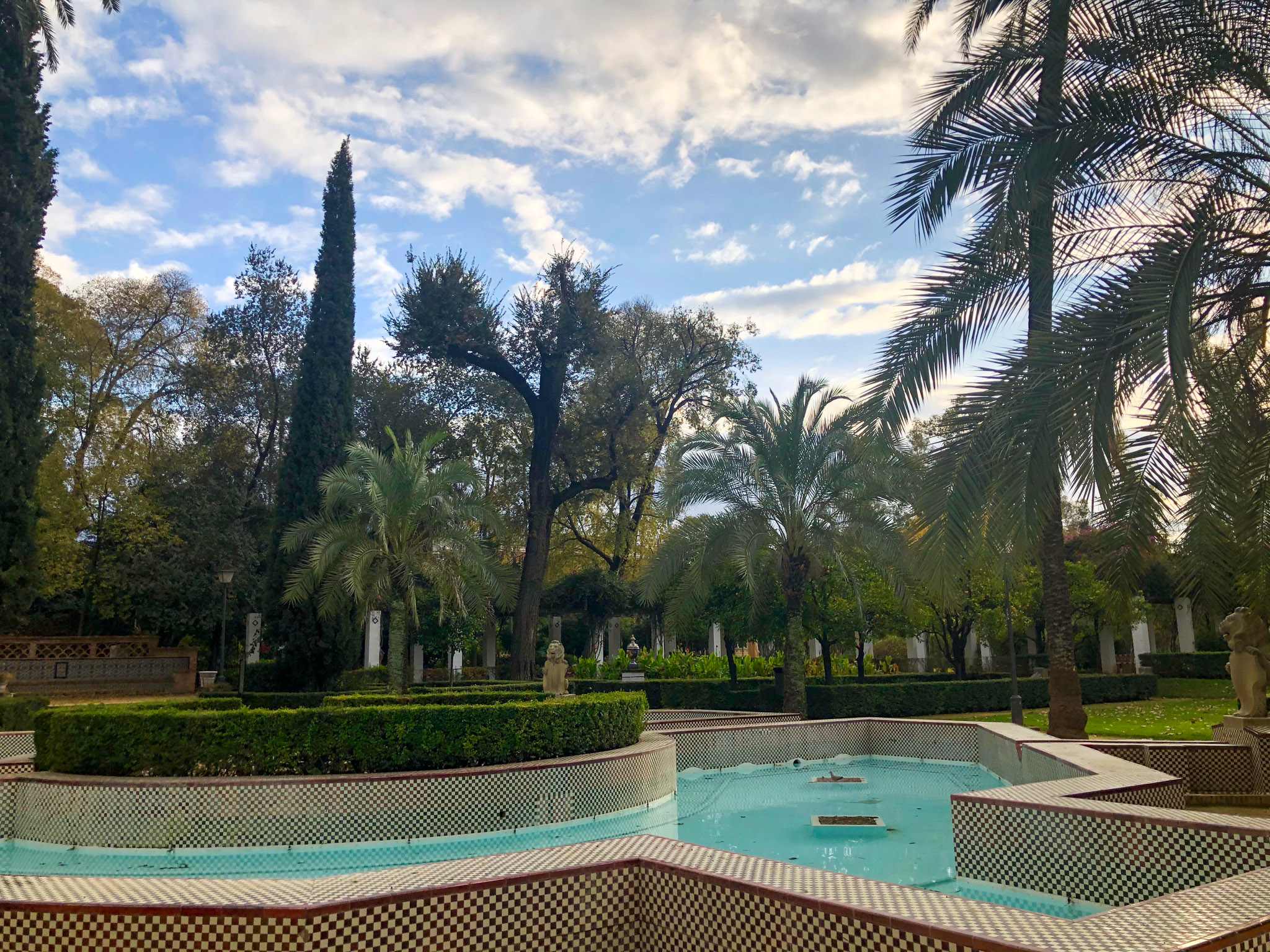

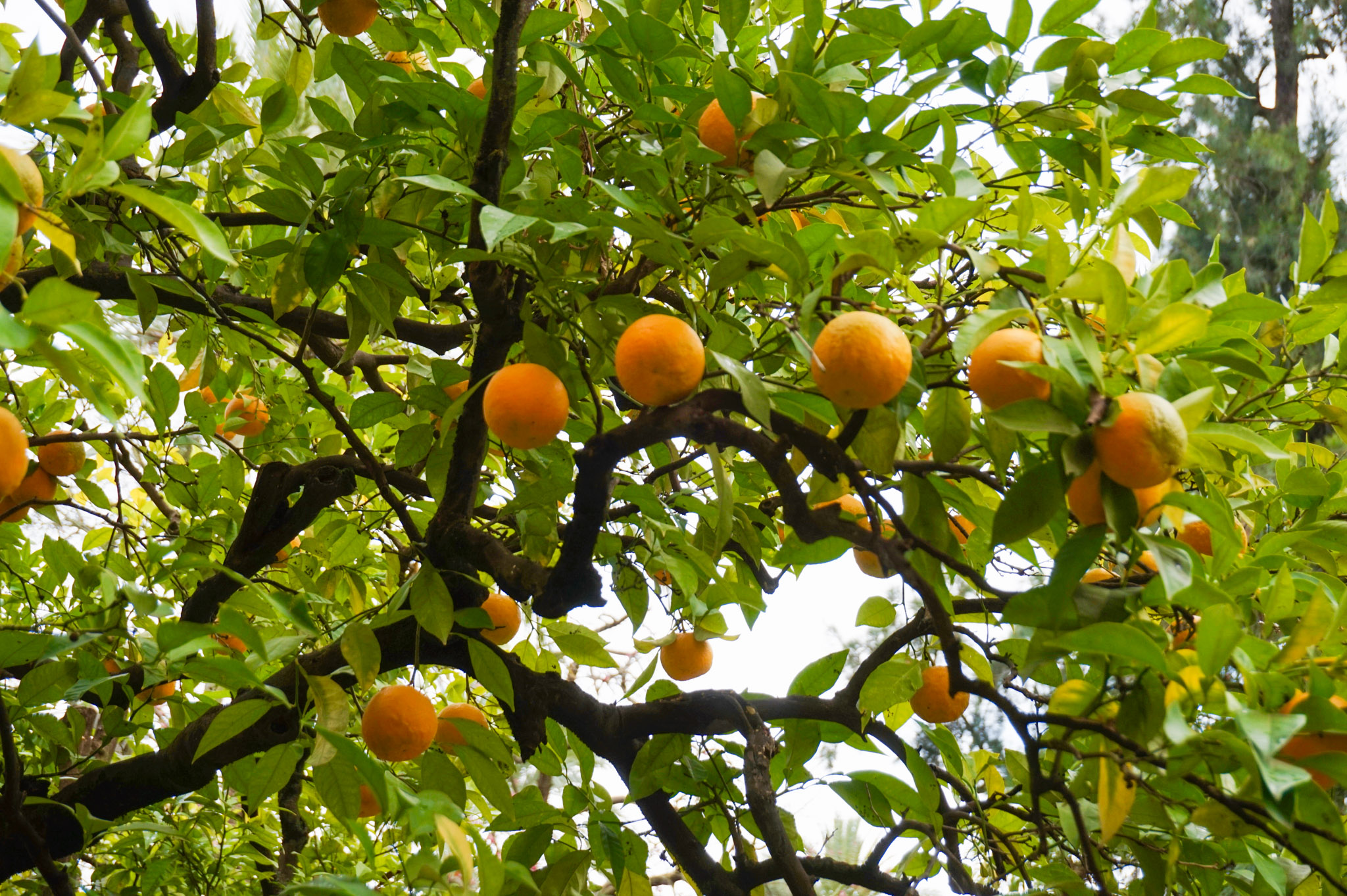

Walk along the river
After the park stroll, you can walk back along the water towards Torre del Oro, a former military watchtower. Some parts of the walk are really nice, others very average. We made a stop at one of the small bars mid-way to grab a quick drink.
Tapas and Flamenco
Tapas are a must in Spain and you should have them every day you’re there 🙂 After a long day, spend the early evening grabbing a couple of these heavenly bites. After, you can see another Flamenco show (if you did or didn’t in Madrid) or just head to rest if this day was already long for you. If you choose to do a show, some will only have a performance while others will include a dinner option too.
I personally didn’t see any shows in Seville since I opted to see one in Madrid. However, I do wish I saw one in Seville too as the smaller city vibes would have been perfect for one. Since I can’t recommend you one, I saw that Stefania has an awesome guide for Flamenco shows (and tapas too) on her blog.




Day 4:
Don’t lose your exploring steam because day 4 will be full of activities for you in the beautiful city of Seville!
Royal Alcázar of Seville
A stunning royal palace located in the heart of Seville is a simple must. Although my personal favorite is Alhambra in Granada, this one is pretty impressive too. Its most recognized characteristic is the Mudéjar style of architecture. CultureTrip has an awesome 1-minute summary of its history which I recommend reading if you won’t be taking a guided tour.
I visited in November so I personally had no trouble with entry queues or tickets. However, I heard that lines to get inside are horrendous in the summer, so I would recommend purchasing an entry ticket ahead of time and heading there for opening hours too.




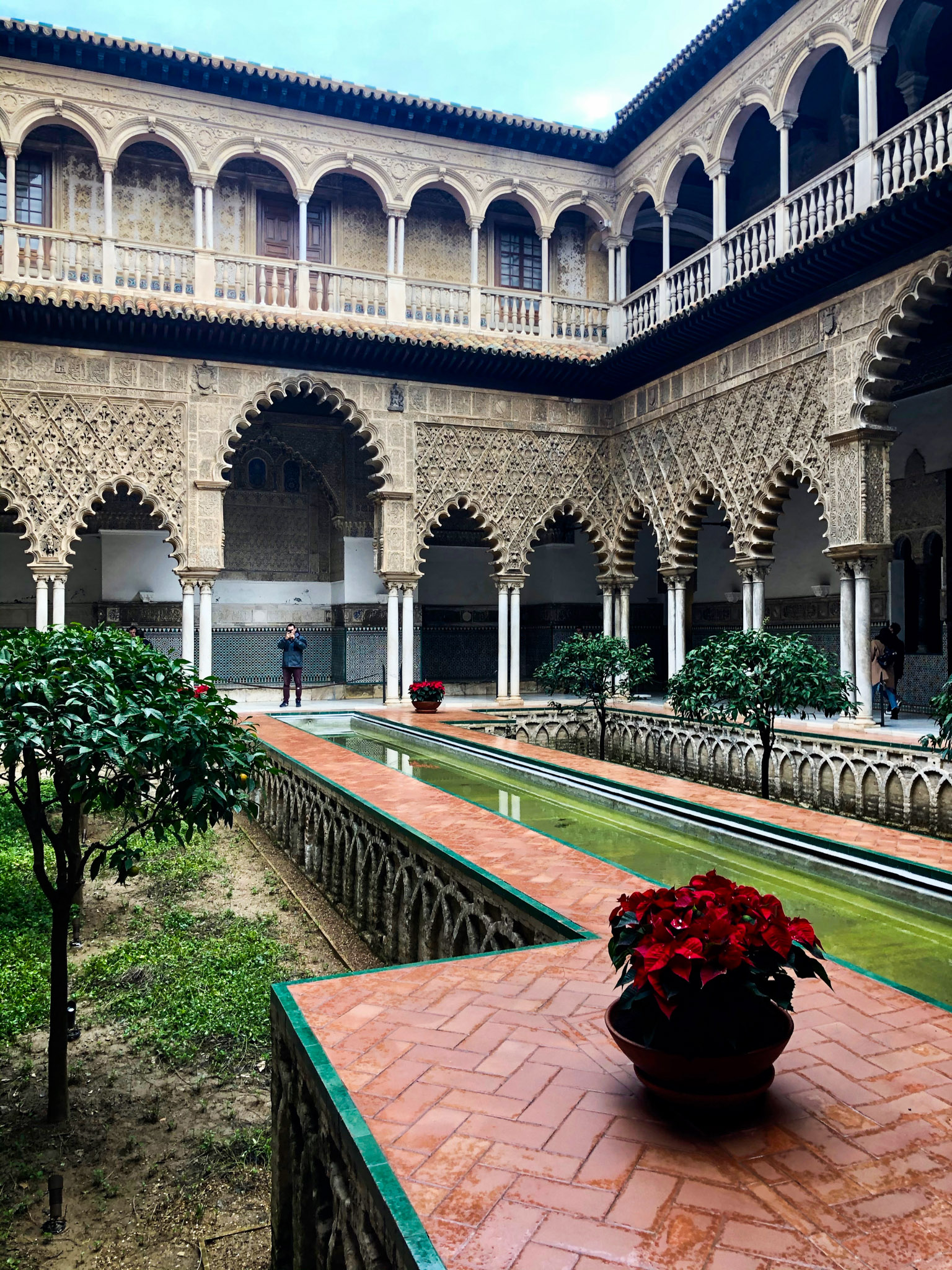

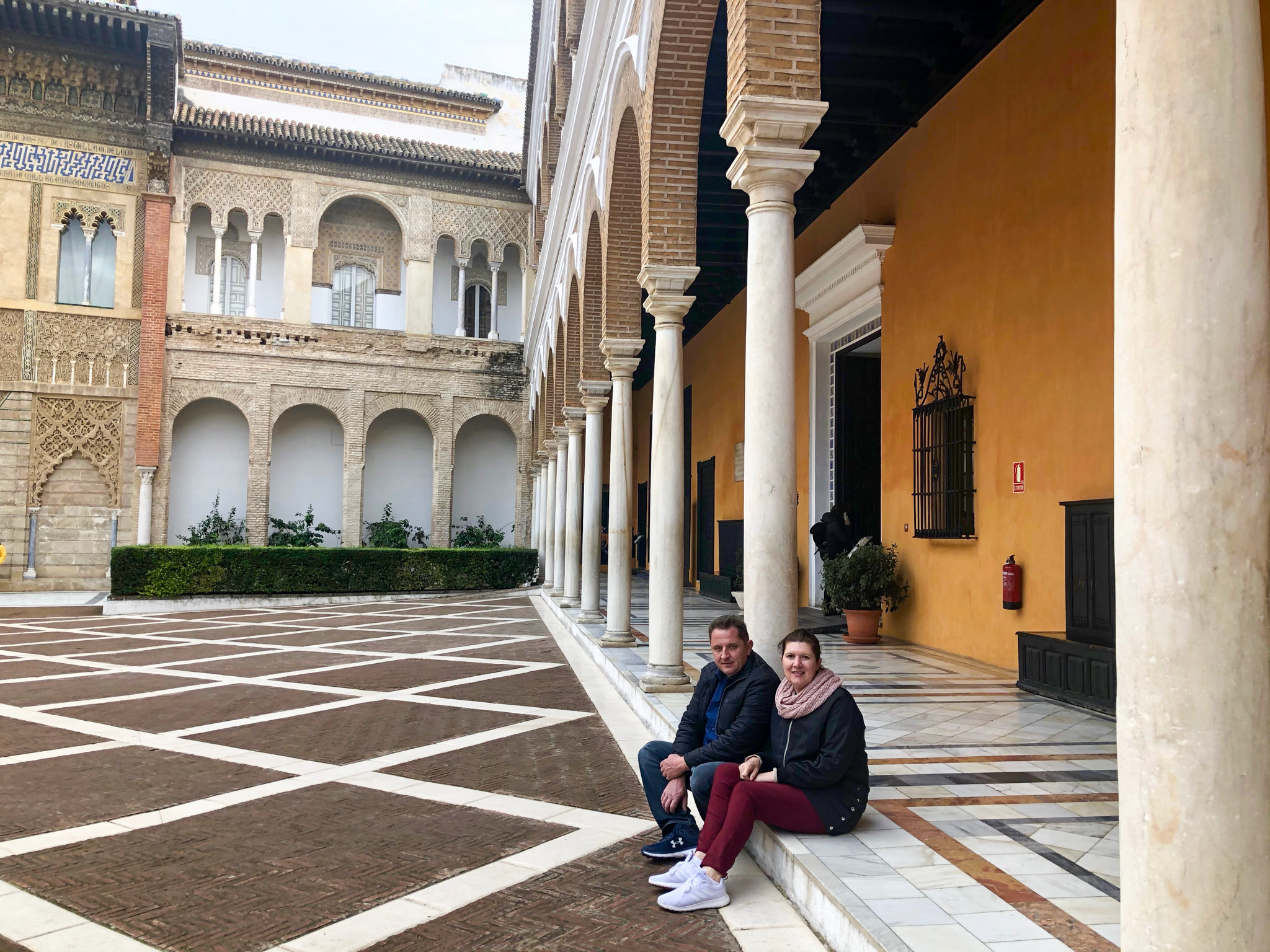




Catedral de Sevilla
Right around the corner from the palace, you will find the largest Gothic church in the world. It’s pretty impressive and worth your visit. The cathedral houses the tomb of Christopher Columbus. Additionally, it has the La Giralda bell tower which you can climb for a bird’s eye view of the city. You will need to purchase tickets for them too.
A nice stop near the cathedral for the early evening is a terrace bar called La Terraza. It’s pricey but it has incredible views of the lit-up cathedral. I recommend stopping for a glass of wine to take a little breather and enjoy the views from above.




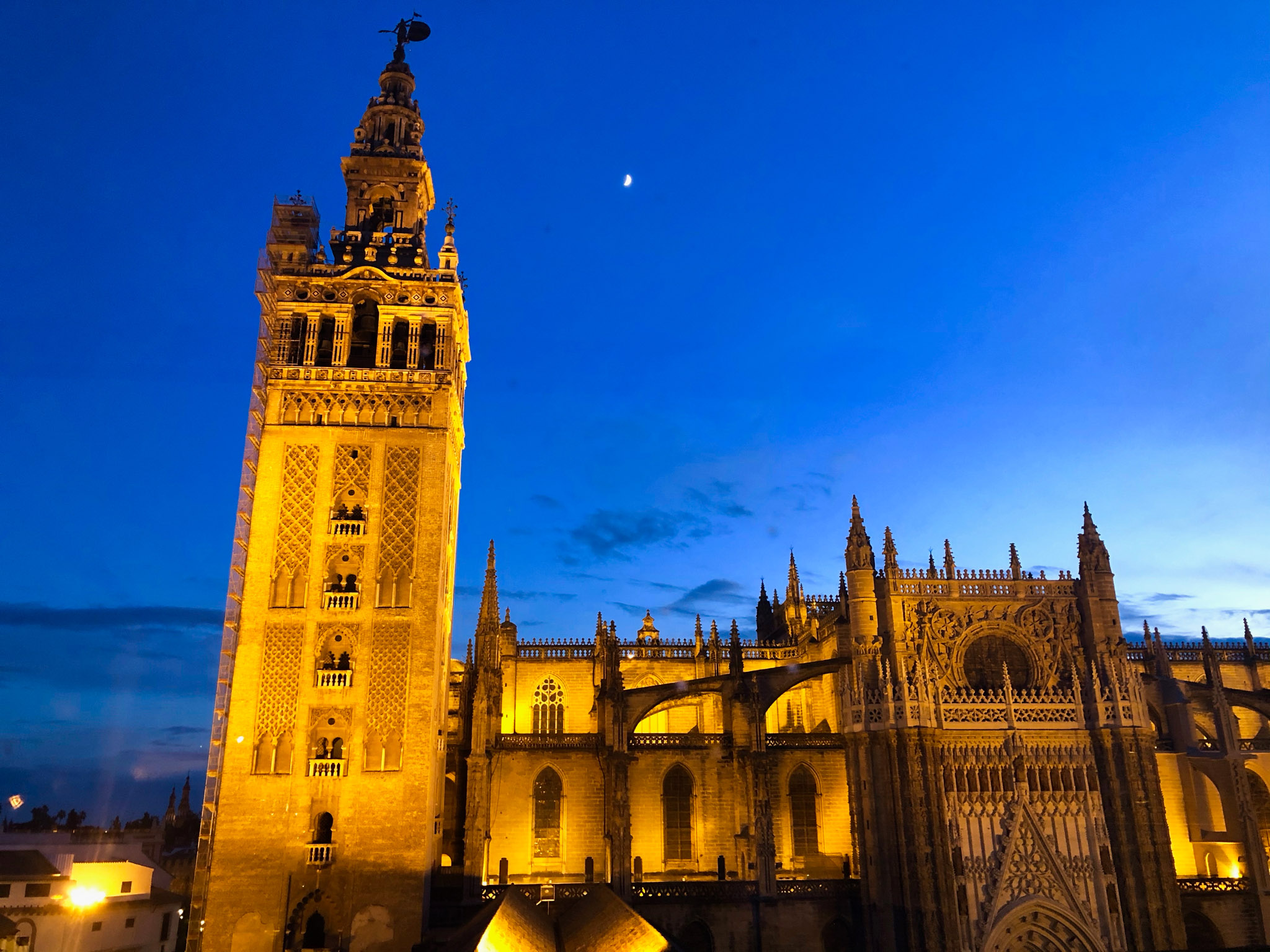

Walk toward Setas de Sevilla
After a morning full of activities, you’ll have one more cool, low-effort spot in the city. From the cathedral walk along the surrounding neighborhoods toward Setas de Seville or the mushroom structure of Seville. Santa Cruz (Jewish Quarter) and El Centro are narrow streets filled with stores, bars, and restaurants. That area isn’t really big so getting lost in the streets and exploring won’t require that much effort from your end. Your destination, the crazy wooden structure, it’s worth a stroll. There is an entry fee to access the top part but you will be rewarded 360 views of Seville. It’s also a great sunset spot!
End the evening with some tapas in the area, there is an awesome spot near the Setas plaza called La Malvaloca which you should visit. For the night, I imagine you will want to rest and relax at your midpoint week in Spain.
Additional places of interest in Seville
Here are some additional spots you can visit during your 2 days in Seville:
- Triana neighborhood: Located on the other side of Guadalquivir, what used to be a working-class neighborhood is now a more authentic area of town you can visit. Start with exploring the local market, Mercado de Triana, and get lost in the streets. Don’t forget to stroll along the river for colorful views of the buildings.
- Art in Seville: Spanish artists speak to my soul for some reason so whenever I am in Spain, I try to add some amazing art stops to my itinerary. In Seville, you have the amazing Seville Museum of Fine Arts where you will find Spain’s popular artists like Velazquez or El Greco. A visit costs only 1.5 euros too. Another stunning baroque-style building dedicated primarily to the artist Velazquez is Hospital los Venerables. Entry is a little more pricey but certainly worth it if you like art.
- A tour: There are two types of tours you should consider in any major cities that you visit 1) a free-walking tour, and 2) a food tour. In Seville, you will find both and if I were you, a tapas one would be first on my list 🙂
- Plaza de Toros: A bullfighting arena that you can tour without attending a bullfight. I know it’s tradition but I personally don’t support it.
For more on Seville food and places to eat, this blog does an awesome job with recommendations.
Barcelona Itinerary
We made it to my favorite part of the week in Spain itinerary! My normal travel philosophy is to always seek new places but Barcelona is one of those cities I don’t mind coming back to over and over again. There is so much to do in the city and the vibe is just everything! Barcelona deserved its own post probably with 5-7 days of activities but for today, let’s focus on a solid Barcelona 3-day itinerary as a good introduction to the city. Keep in mind that in 3 days, you certainly won’t see everything.
Transport to and within Barcelona
From Seville, your easiest option is to take a 1.5-hour flight. Even if you’re doing the itinerary in the opposite way, the high-speed Barcelona to Seville train takes about 5.5 hours and is pretty pricey. From the airport, you have the option of a taxi, bus, train, or metro depending on where you’re staying in the city. I’ve taken the metro each time I visited. Uber is available as of last year but with some past legal issues, you should check on that before you go.
Once inside the city, utilize the metro. It amazes me how large the system is and it will get you pretty much anywhere in the city. I always suggest purchasing an unlimited pass if you’re planning to sightsee a lot because, with each trip at 2.40 euro, the costs quickly add up.
Where to stay in Barcelona
Barcelona has the following main neighborhoods near the tourist attractions:
- Gracia: the trendy upcoming neighborhood filled with bars, restaurants, and cute streets
- Gothic Quarter: touristy city center area but nonetheless stunning area especially for first-timers in Barcelona
- El Born: another trendy neighborhood that’s close to the Gothic Quarter but isn’t as crowded
- Eixample: Gaudi’s works among other major landmarks is all close here. This is where I stayed and although I was happy with this location being central to everything, it didn’t really feel very lively.
- Barceloneta: Close to the beach, this area is for those who want to spend time lounging in the sun. If you’re planning on sightseeing in the city, I wouldn’t recommend staying here as it is not as central to many sights.
During my stays in Barcelona, I stayed at the following locations:
- Yeah Hostel: Amazing hostel for walking tours and a chill atmosphere. I did two tours with them and enjoyed the breakfast and the low-key vibes. It was super clean and the beds were super comfy.
- Kabul Party Hostel: Although this hostel is located off Las Ramblas, it is actually in a little hidden plaza. It’s certainly not for everyone as the party atmosphere can be a little loud but I absolutely loved the rooftop vibes and the organized bar crawl.
- Eric Vokel Boutique Apartments: Very pretty apartments. Great for a family trip.
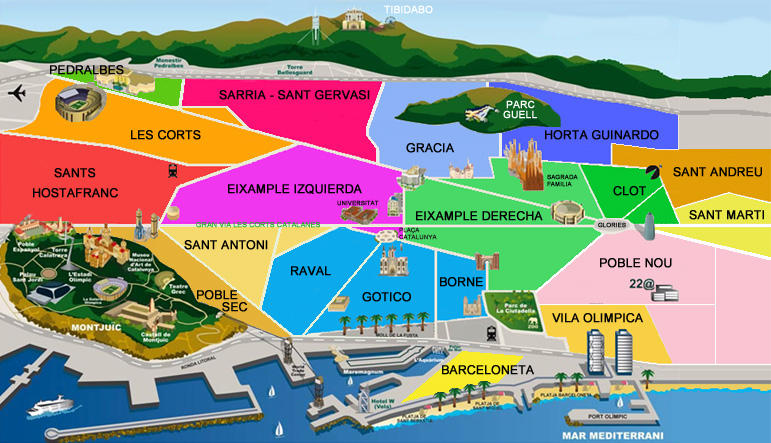

Bojuee
$400+
Mid-Range
$200-$300
Budget
$200<
Things to know about Barcelona
Language: You will quickly notice that all the familiar phrases and signs don’t sound and look like what you’ve been seeing to date. That is because Barcelona speaks Catalan, not Spanish (although most if not all people there speak Spanish so no fret).
Pickpocketing: Omg this city is absolutely notorious for pickpockets. Every single area, especially Las Ramblas and the Metro, are places where 10 seconds of your distraction will cost you your belongings. My friend had her phone stolen next to me on the metro while she moved her hand from her bag for no more than a couple of seconds. So my tip is to always have your hand on your stuff and be extremely cautious of anything you’re carrying. Every time I have been there I followed the rule of guarding my things and watching everyone around me and I am happy to say I haven’t been a target of petty theft. If you look like you’re paying attention and are aware of your surroundings, the stupid thief is less likely to target you.
Las Ramblas: This is a major major tourist trap and I personally don’t see anything cute about it. I don’t know why everyone hypes it up and I guess it is just one of those places you check off your list when visiting Barcelona. There is nothing authentic or local about it, it is rather a long street with chain shops, terrible restaurants, and pickpockets.
Restaurants and going out: As Americans, we always tend to worry about the tipping culture as it’s ingrained in our veins. Tipping in Barcelona is not necessary but if you really liked the service, you are welcome to leave a couple of euros. Dinner here doesn’t start until 9-10 pm and clubs don’t open until after midnight.
Distance: Barcelona is a pretty big city. Compared to Seville or even Madrid, a lot of the sightseeing places are spaced apart so make sure to factor in a 20-30 minute metro cushion for transport!
Antoni Gaudi: An architectural genius in my eyes who had a major influence can be seen all over the city. His work is so unique, detailed, and stunning that you can spend days looking at its complexity and beauty of it.
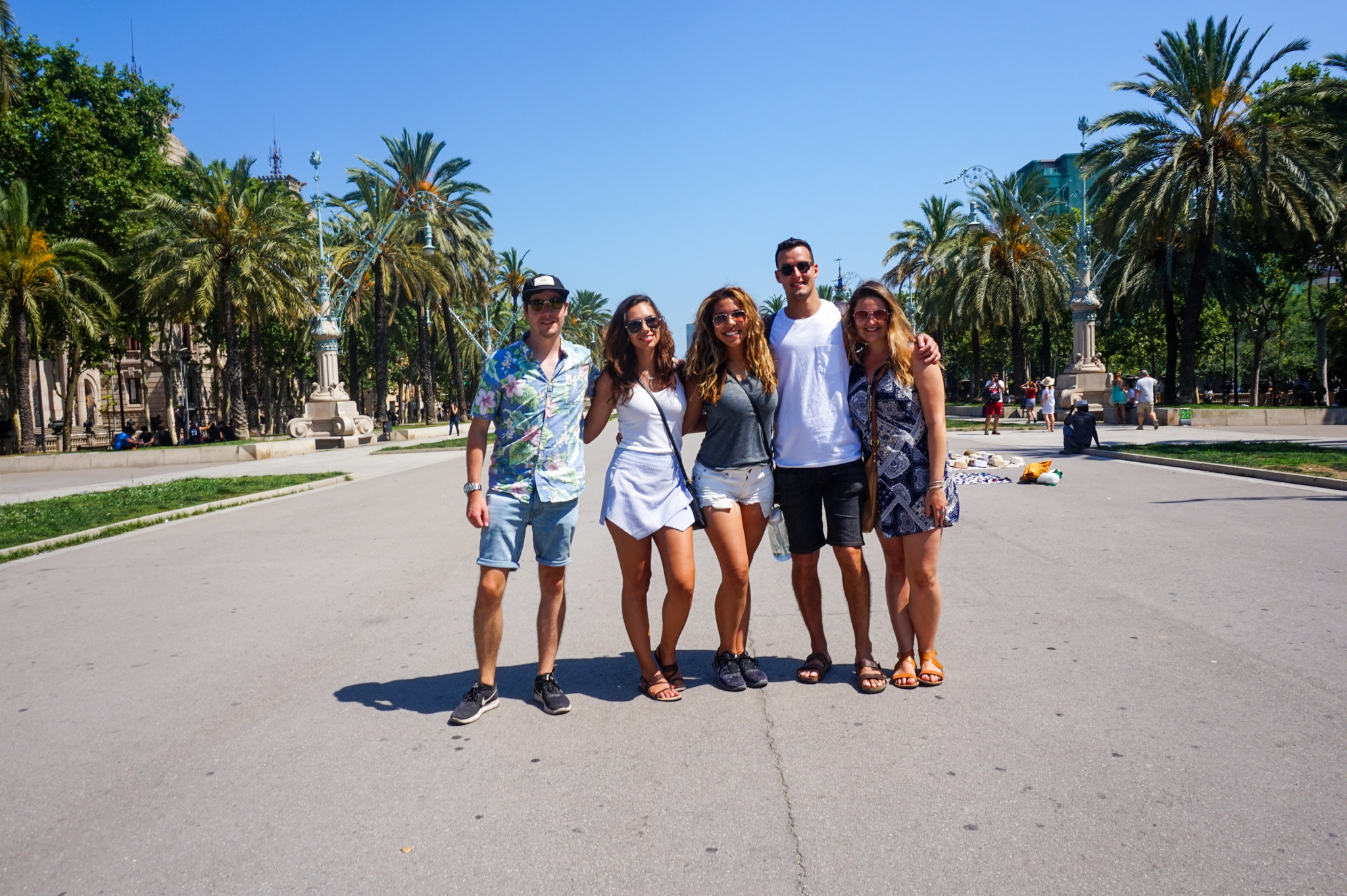

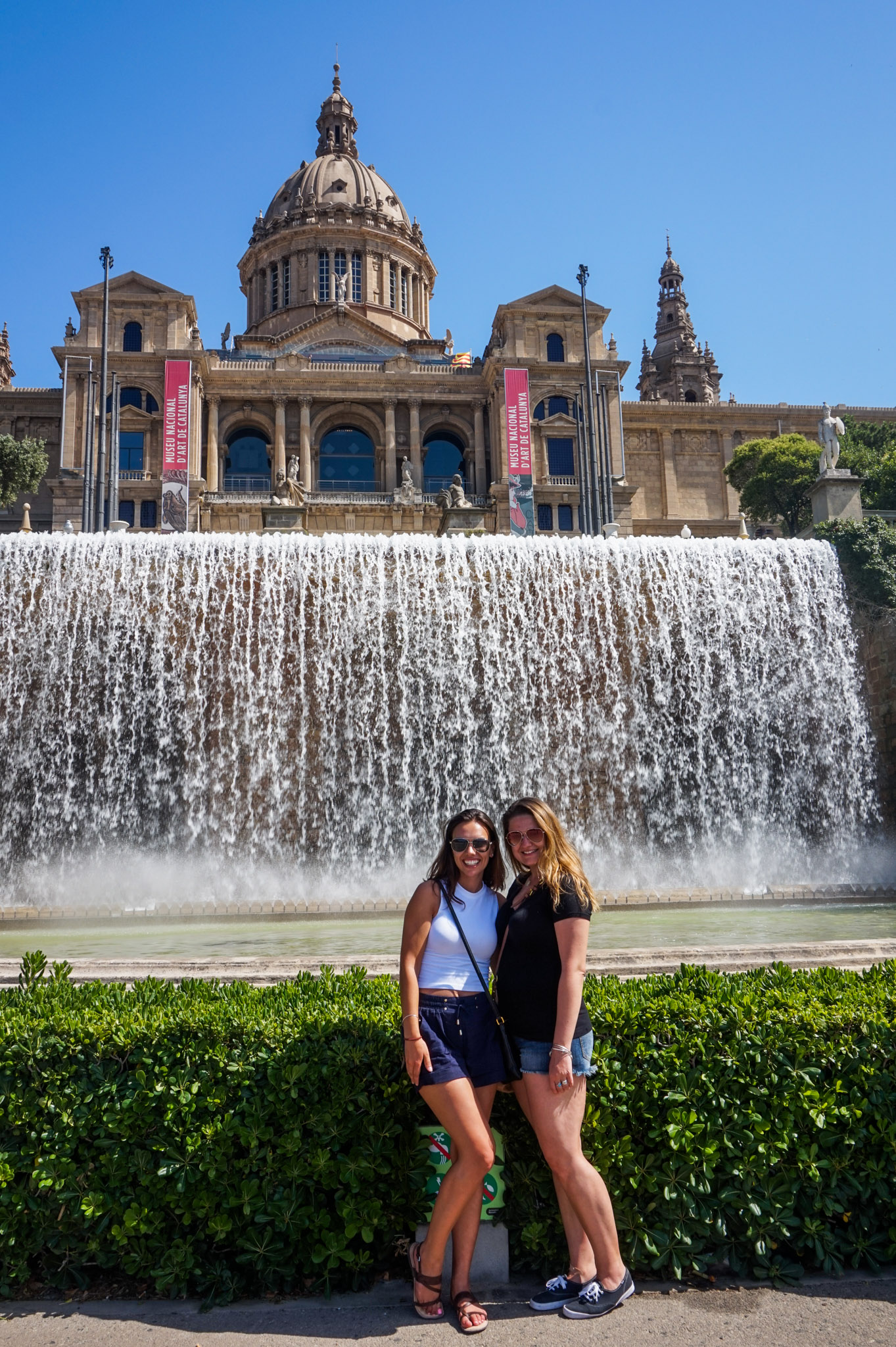

Day 5 in Spain:
As mentioned above, since Barcelona is a pretty big city, although your itineraries might not look as busy as previous ones, they will fill up your day faster than you think. Consider how much energy you have for the day because the next couple of days require a lot of it if you want to see a decent amount of the city. From Seville, try to arrive as early as you can, drop off your bags at the hotel and start exploring one of the coolest cities in the world!
Walking tour
For the Barcelona itinerary portion of your trip, I highly highly recommend starting it with a free walking tour. There are many companies that run it and most have a morning and an afternoon timeslot to start it. Barcelona is a huge city with a shit ton of history worth knowing so I would spend my first afternoon there with someone who could at least give you the gist of what is what.
During a standard tour, you will most likely cover sights near the Gothic Quarter like the Cathedral of Barcelona, Basilica of Santa Maria, Placa de Catalunya, Las Ramblas, Placa Reial and La Boqueria. There will be more stops along the way with small history lessons over a typical 2-3 hour tour.
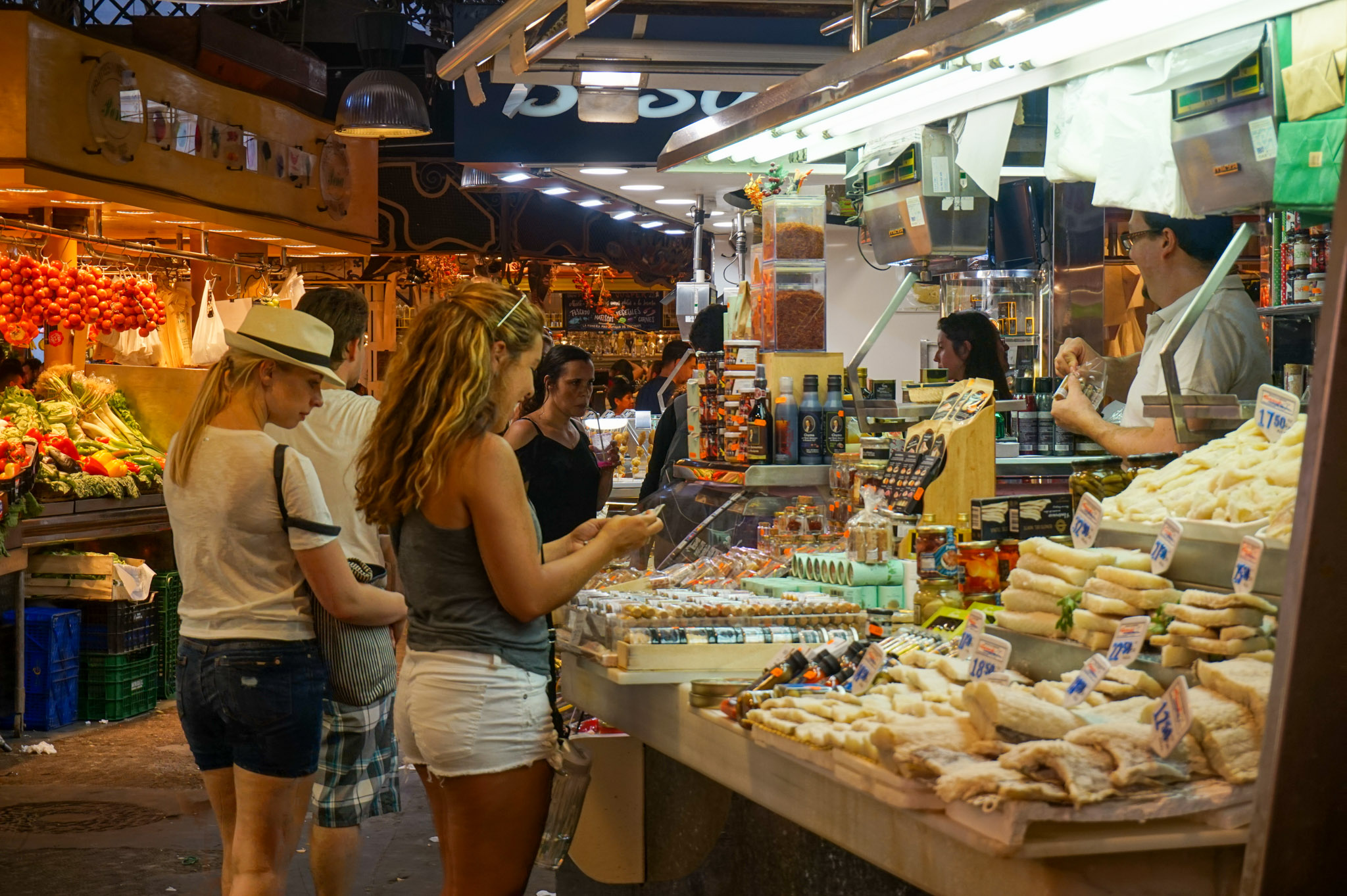

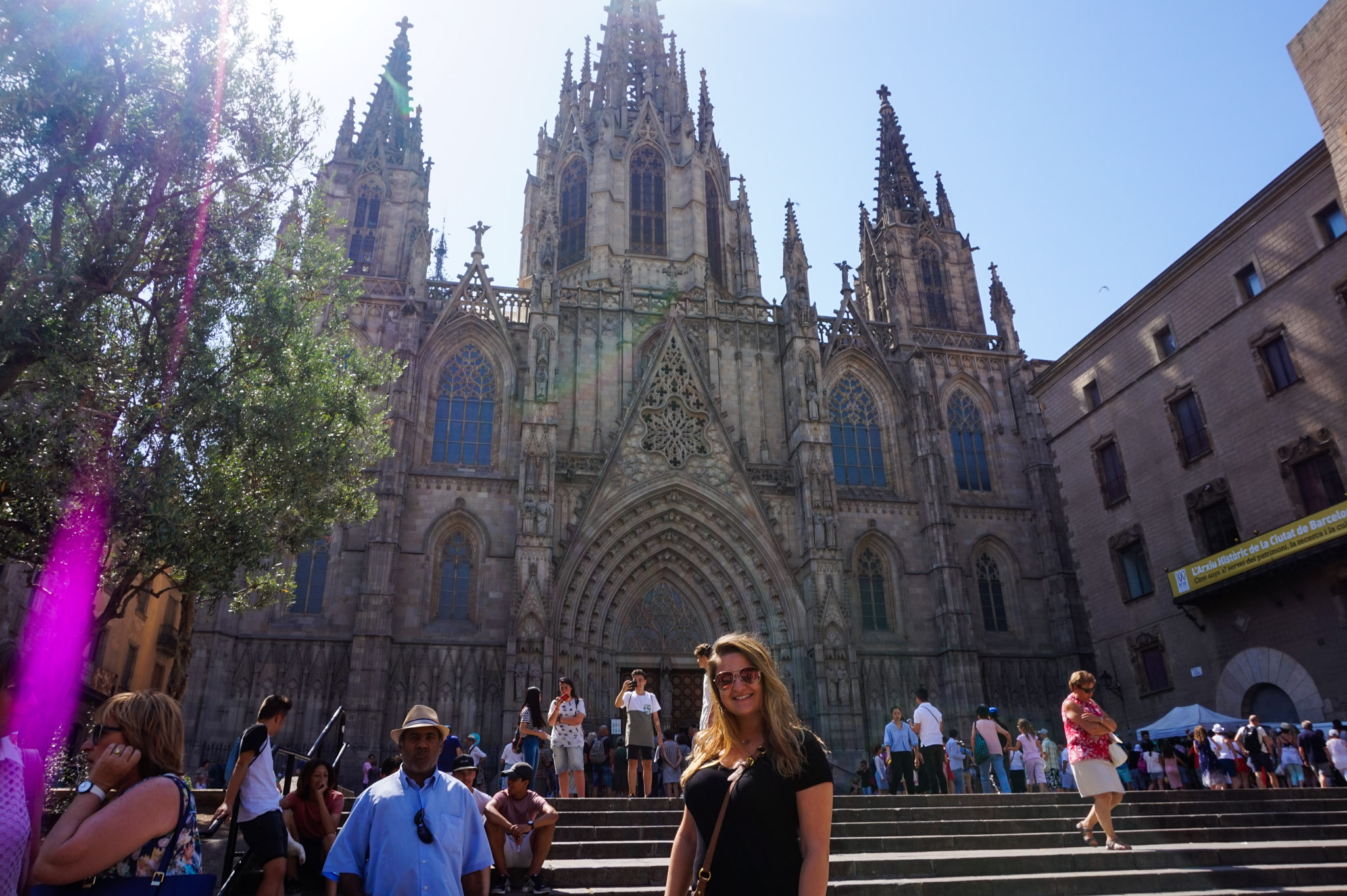

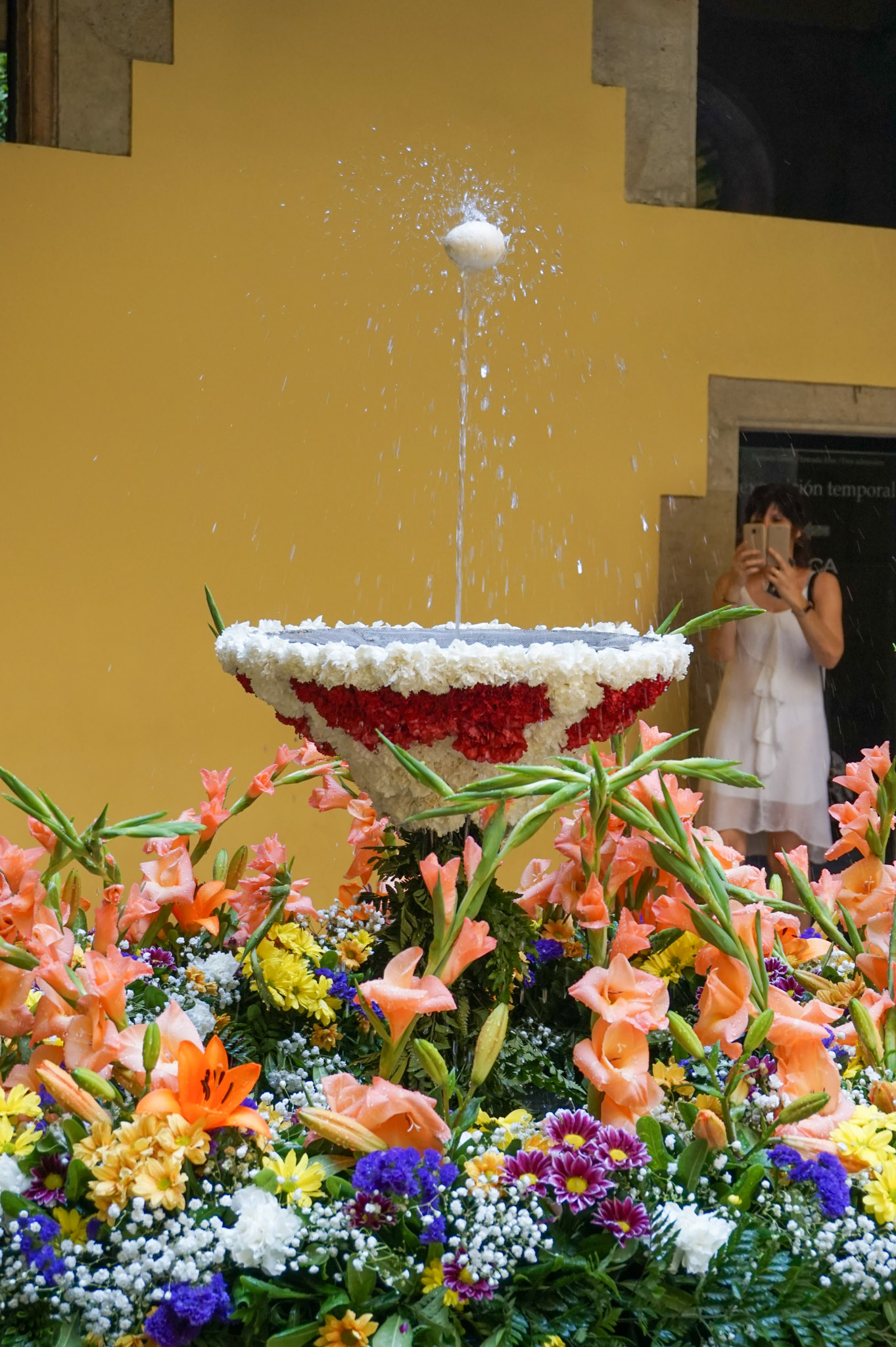

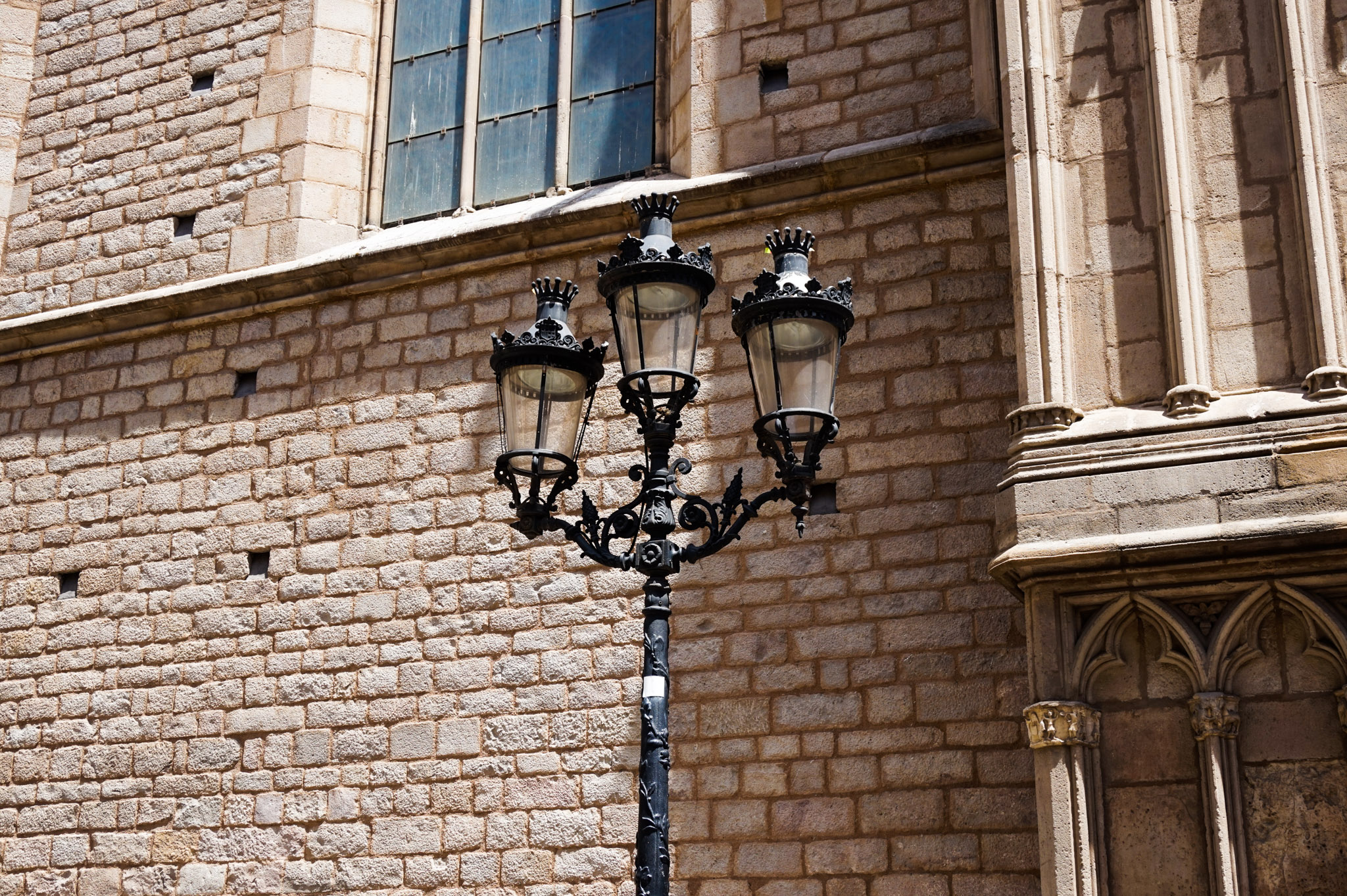

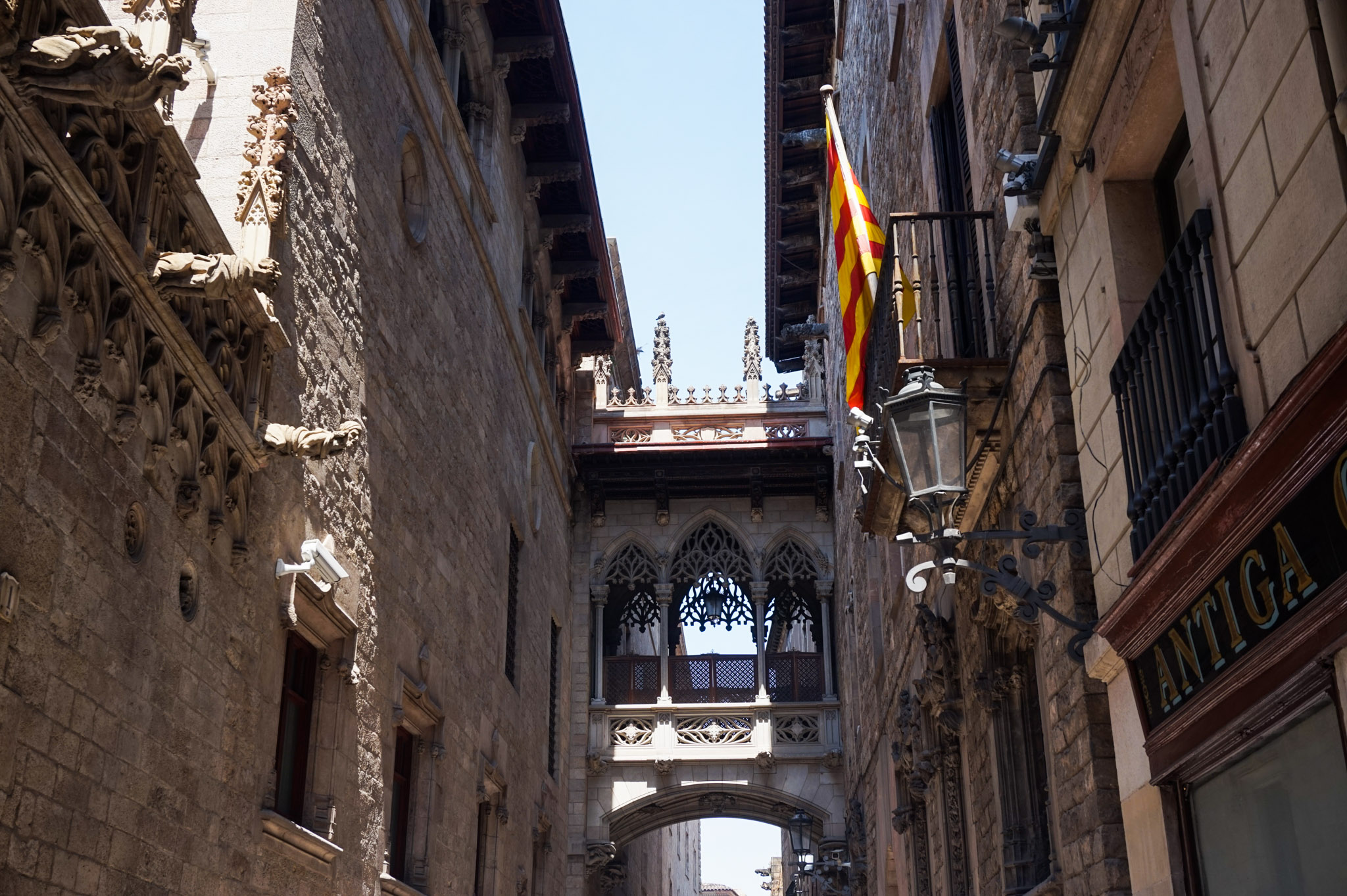

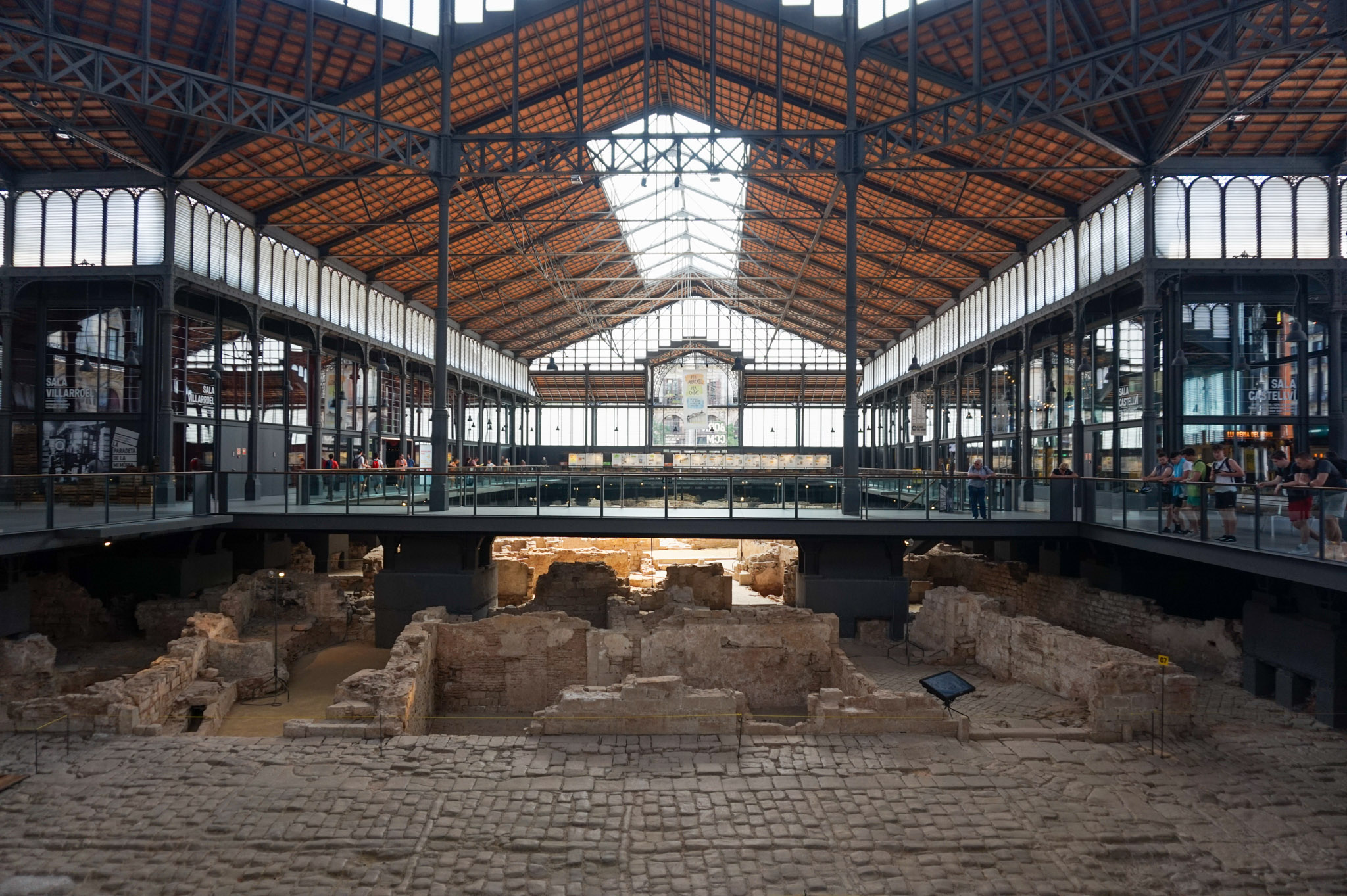

Parc Guell
After an introduction to Barcelona, take it easy for the rest of the day and head over to Parc Guell. It’s such a nice park worth the effort of a 20 min metro ride from the Gothic Quarter. Note that the nearest stop is the Vallcarca Station which is an additional 20-minute walk. Instead, if you don’t want to walk, you can Uber or take bus 24 or 92 there.
The best part is that this park is even more magical during the evening so don’t worry about arriving later in the day but do keep in mind that it closes at 6 pm. Creative Adventurer has an awesome detailed guide about the whole park if you’re interested in the details.
After your park visit, wander around the Gracia neighborhood, the trendy part of Barcelona. You can stop for some tapas there and visit the cute square Placa del Sol. This blog has an awesome guide to the best bars in that area.


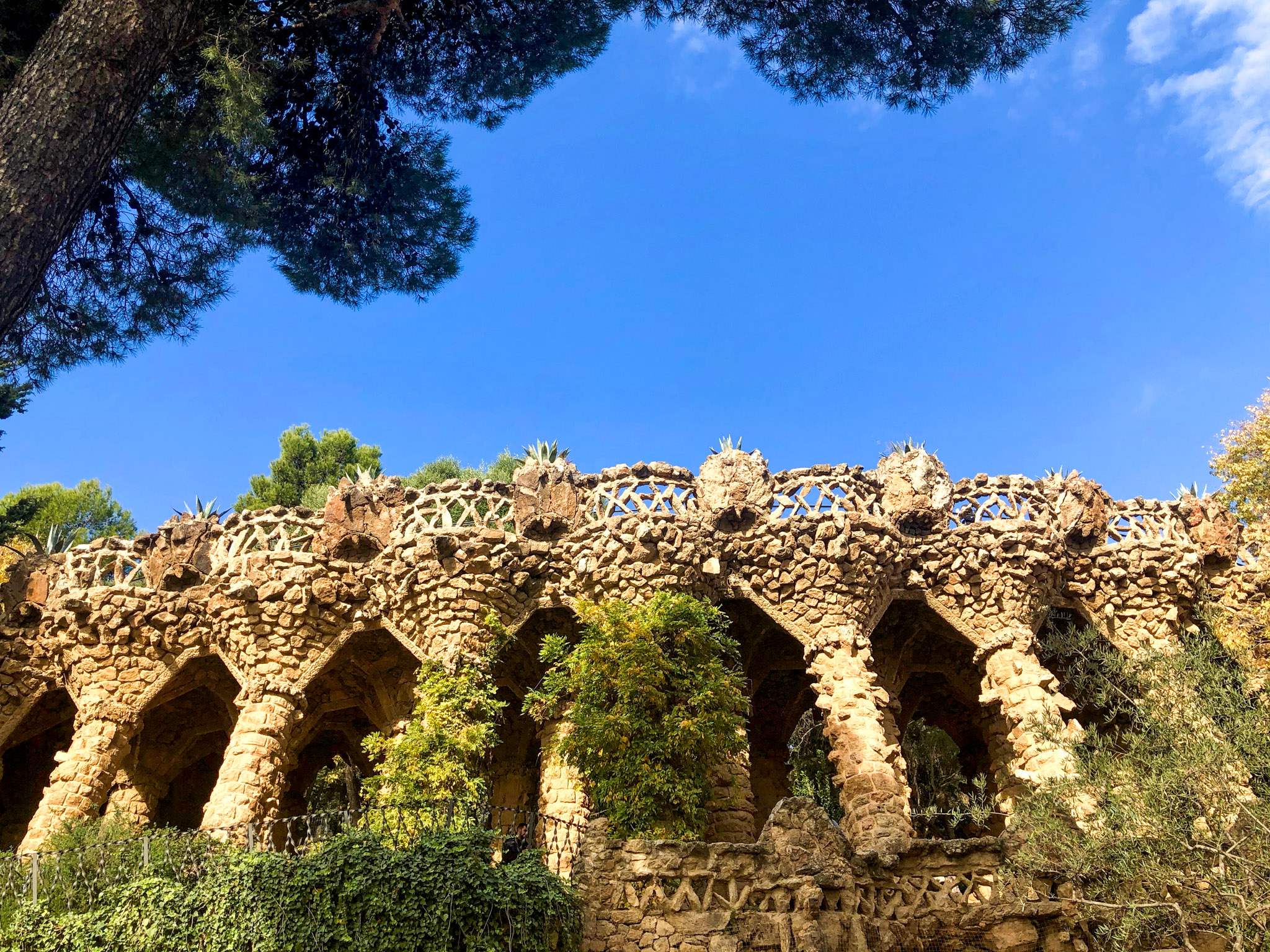

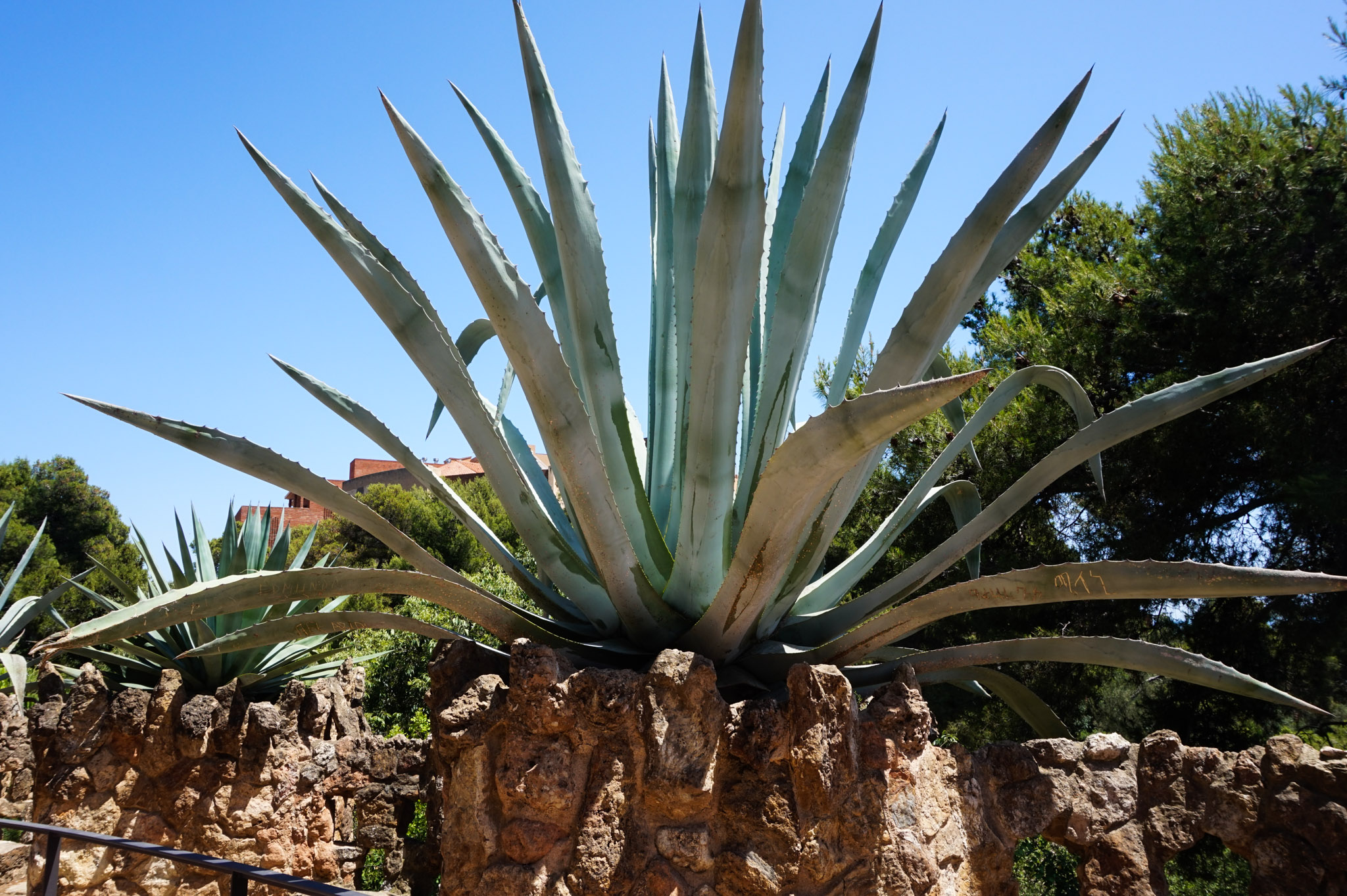

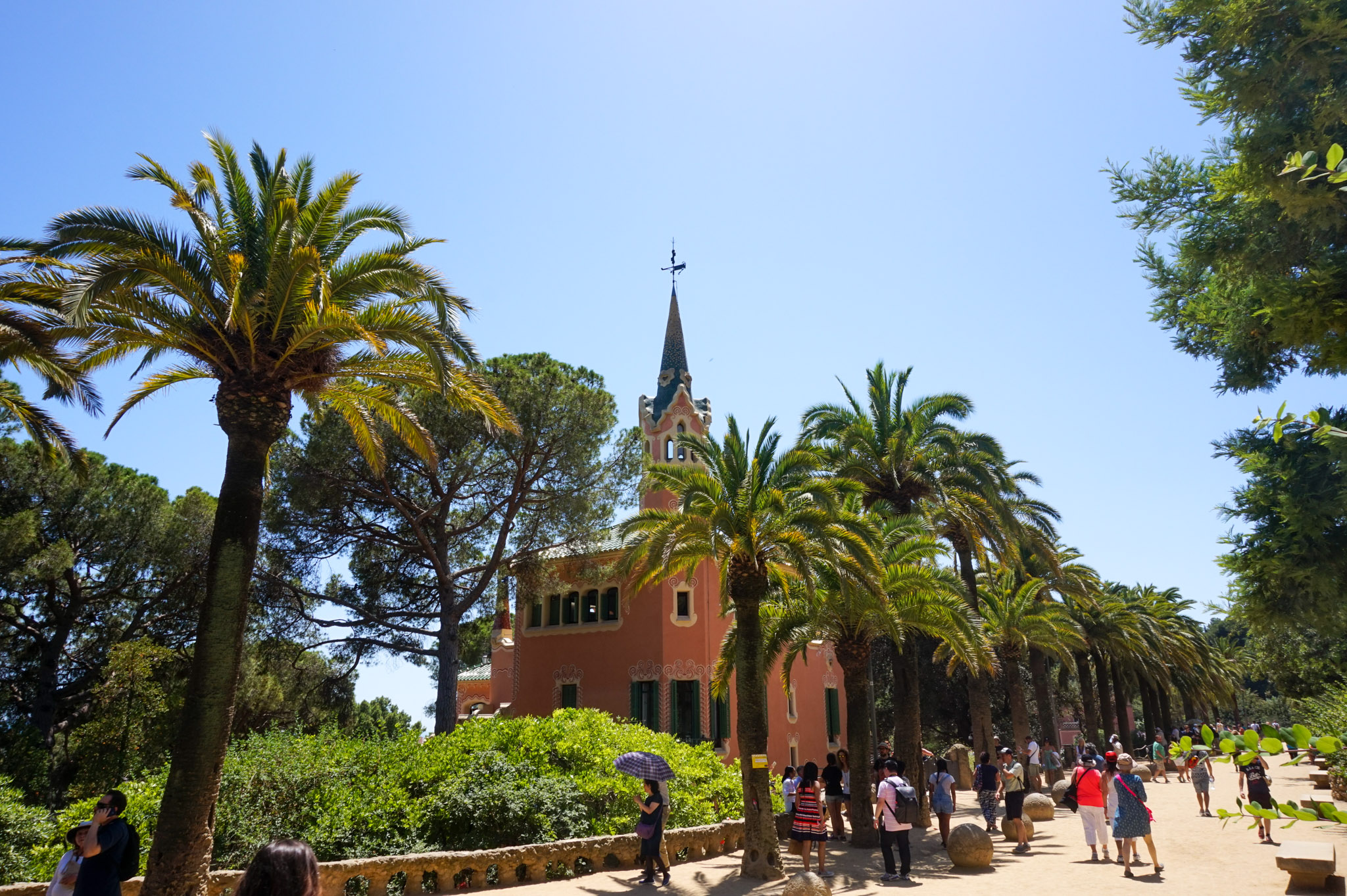


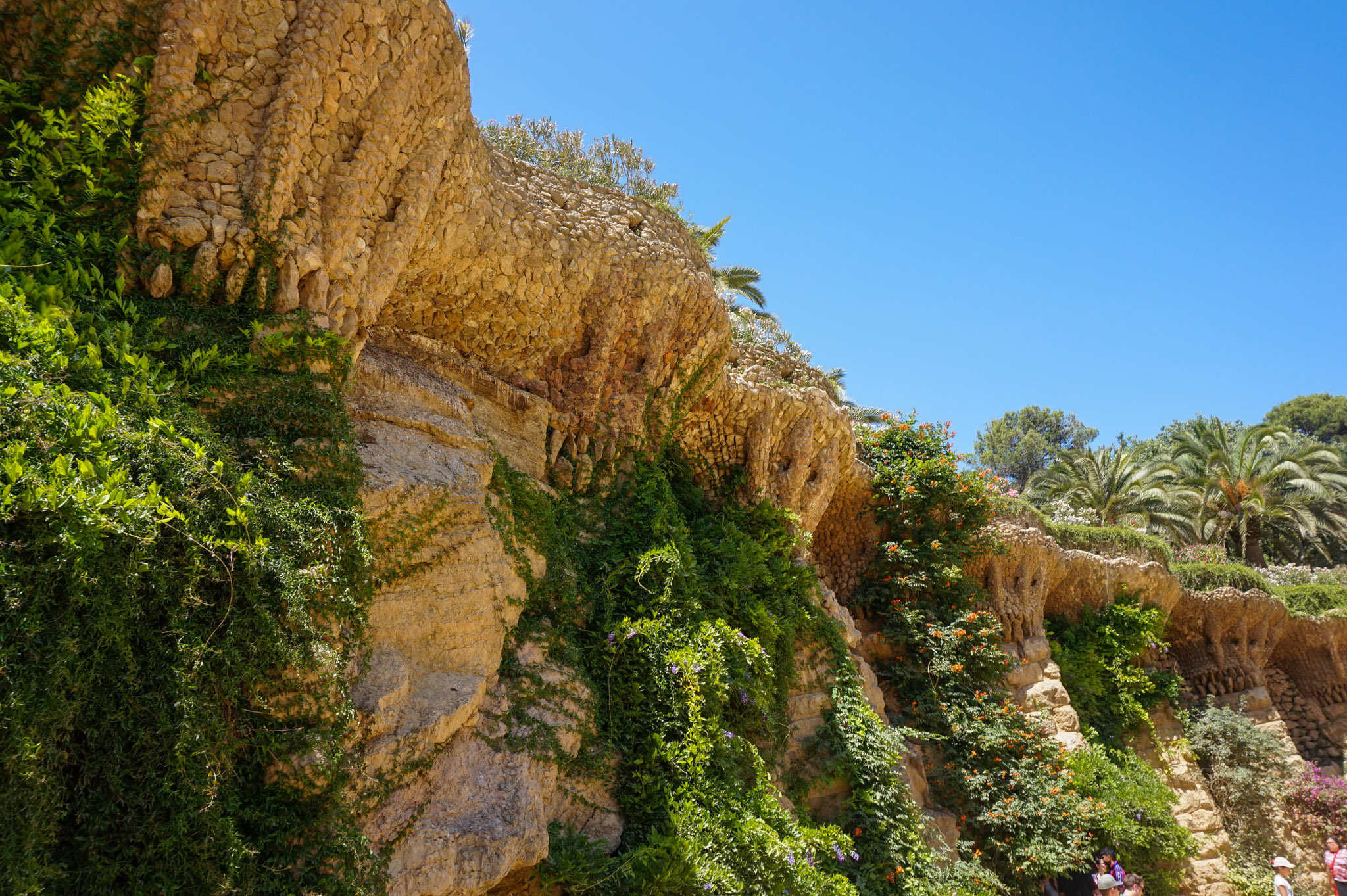

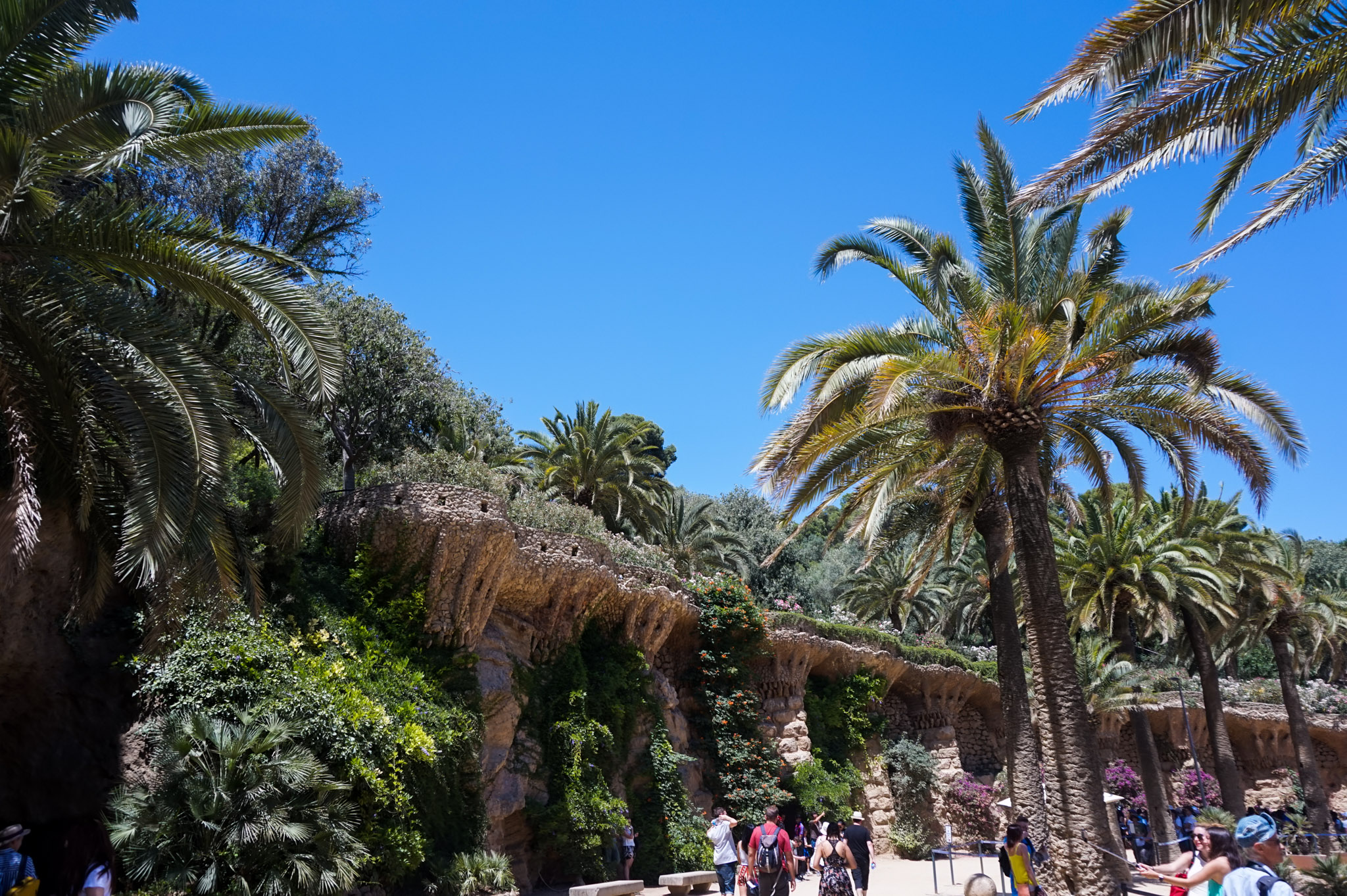

Day 6:
Sagrada Familia
While in Europe, it is easy to get church-ed out, meaning that you’ve seen so many beautiful churches and cathedrals that seeing another one doesn’t even impress you anymore. Well, let me tell you this, Sagrada Familia is unlike anything you have ever seen in your life. Gaudi really outdid himself here and believe it or not, it is still under construction since the late 1800s.
If you only choose to admire it from the outside, make sure to download an audio guide that at least allows you to understand the different parts of it. An entry inside is worth the hefty 26 euro fee and for an additional 4, you can do a guided tour. In high season, these sell out fast so grab them ahead of time.
A good photo spot is Plaça de Gaudí, make sure to walk behind the pond to get a super awesome view of the cathedral.



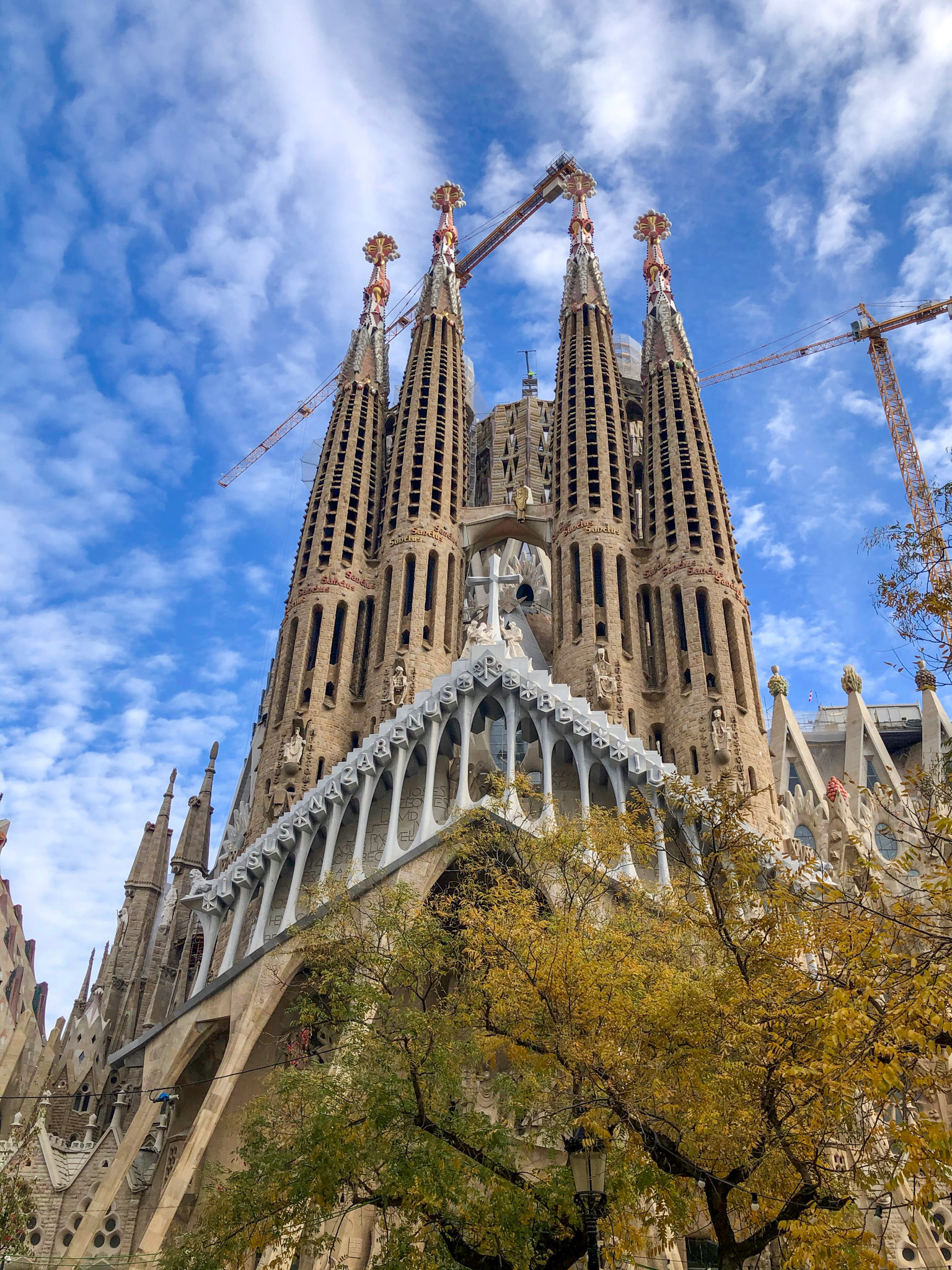

Montjuic
Montjuic is an area on the hills of Barcelona which houses multiple landmarks. Take the metro to the cable car and then make your way up (I personally climbed it in mid-July heat and I don’t recommend you do the same). There are a couple of landmarks there, see a list here, but even if you choose not to visit any, I would simply recommend starting from the top and making your way down to the very bottom of the hill for some amazing views from all angles. You can visit landmarks based on your personal interests:
- Montjuic Castle: A 5 euro entrance fee will get you inside an old military fortress with great views.
- Joan Miro Foundation: If you’re a fan of Miro like myself, don’t miss this museum of his work.
- National Museum of Catalan Art: I didn’t visit the inside of it so I can’t tell you if it’s worth the entry fee but let me tell you that this building is insanely impressive from the outside. As you start making your way down the stairs, don’t forget to turn around at various levels to get a different perspective each time.
- Plaça de Les Cascades: As you walk down, you will notice stunning man-made waterfall structures.
- Magic Fountain Shows: A pretty impressive fountain show right at the base of Montjuic. I was lucky to see it pre-rona during the day and not so lucky when I returned in the fall of 2019 because I didn’t look up the times for it. Currently, it is suspended due to rona but keep your eye on the official website for reopening times.
- Plaça d’Espanya: Your last stop after seeing Montjuic, this plaza is a very important landmark for the city.
Bonus: A less visited place in this area is the rooftop terrace of the Arenas de Barcelona shopping mall. While you can grab a drink or some overpriced apps in one of the super cute restaurants up there, you want to go up to see the panoramic views of the city.


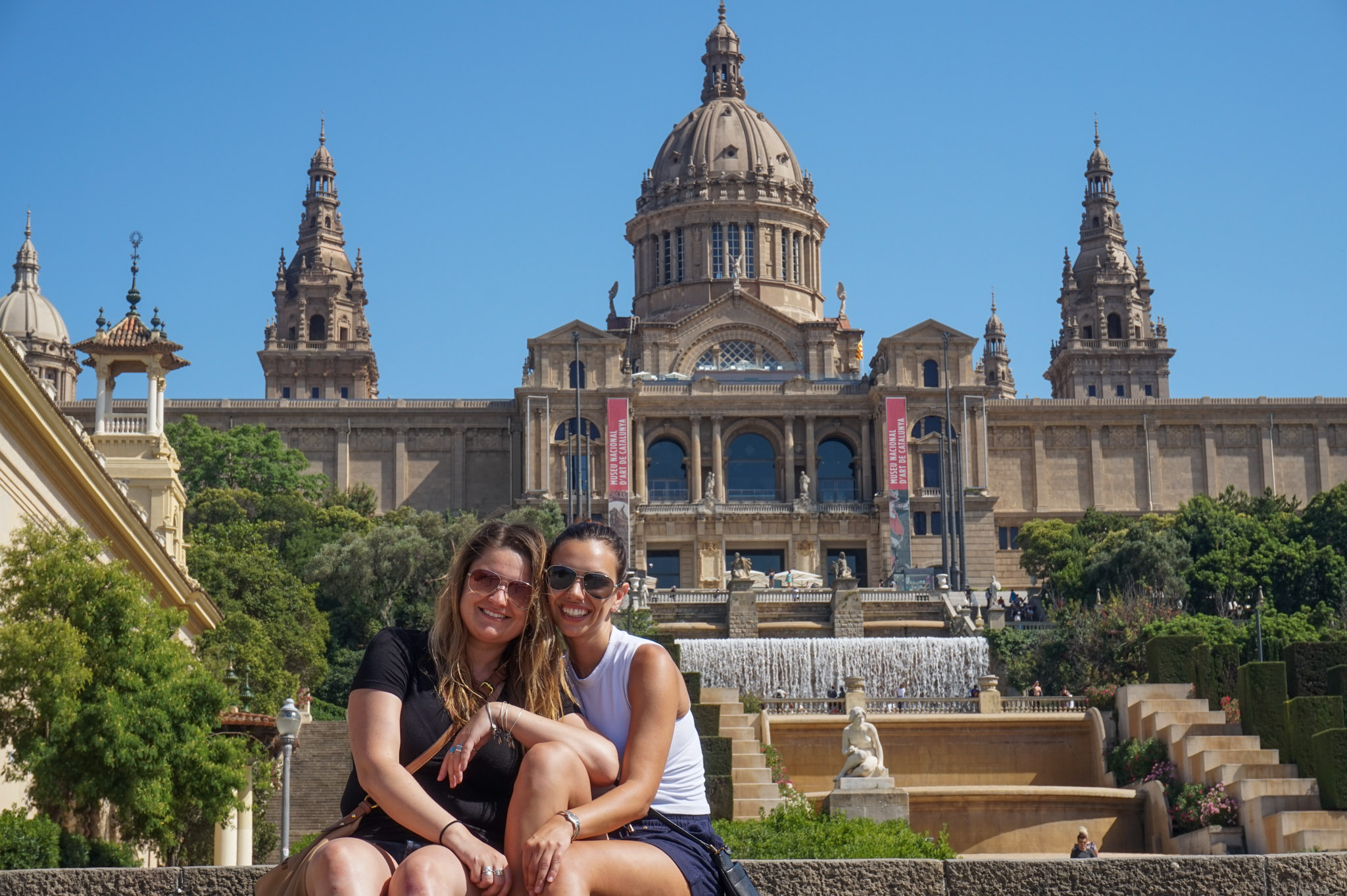

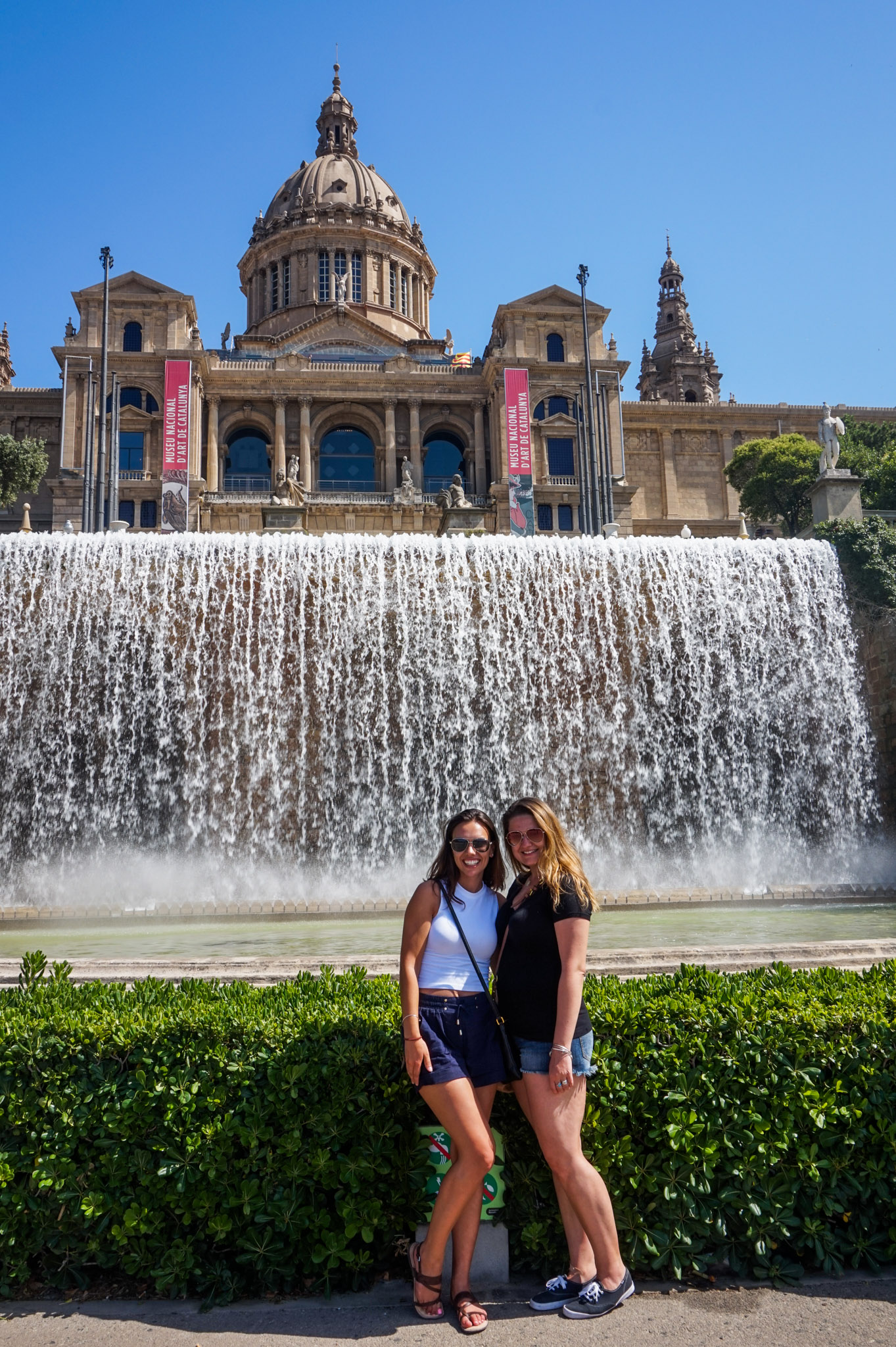

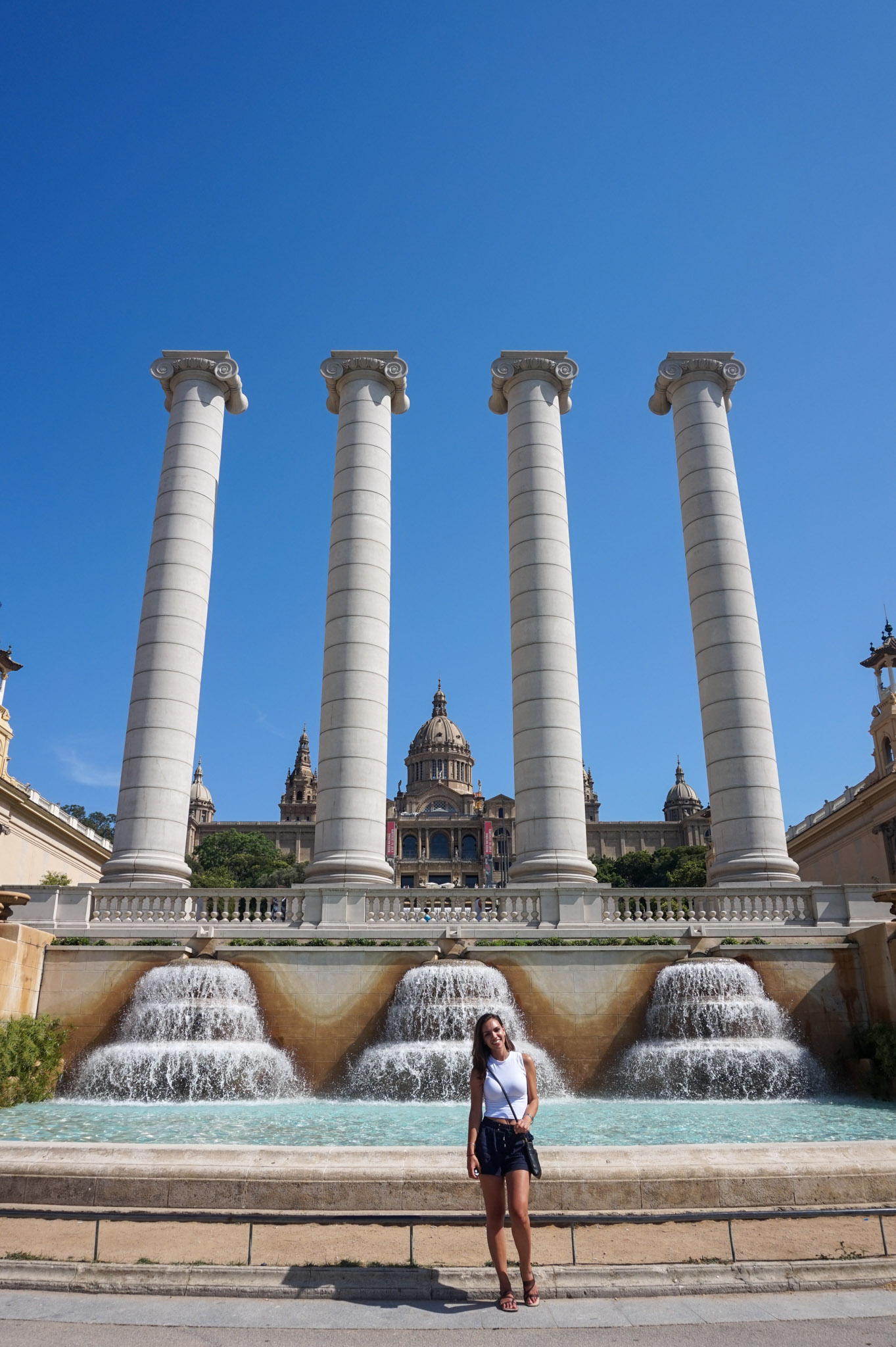

Night-out
When in Barcelona, you need to go out. I experienced my nights out there twice through pub crawls in my hostels. Why? Because it’s nice to have a plan and new friends for the night. Don’t worry if you’re not staying in a hostel though. There are many pub crawls organized in the city and they are the perfect way for a solo traveler to feel a little safer and not worry about choosing a good place to go to.
The only thing you should know about a good night out is that bars don’t end up opening up until late and clubs only get going after midnight or so. They’re open until 6 am so don’t be surprised if you see people grabbing breakfast after a good night out.
Here is a list of places for you from Barcelona Explorers and another from Miss Tourist which also includes an amazing list of her favorite restaurants in the city.
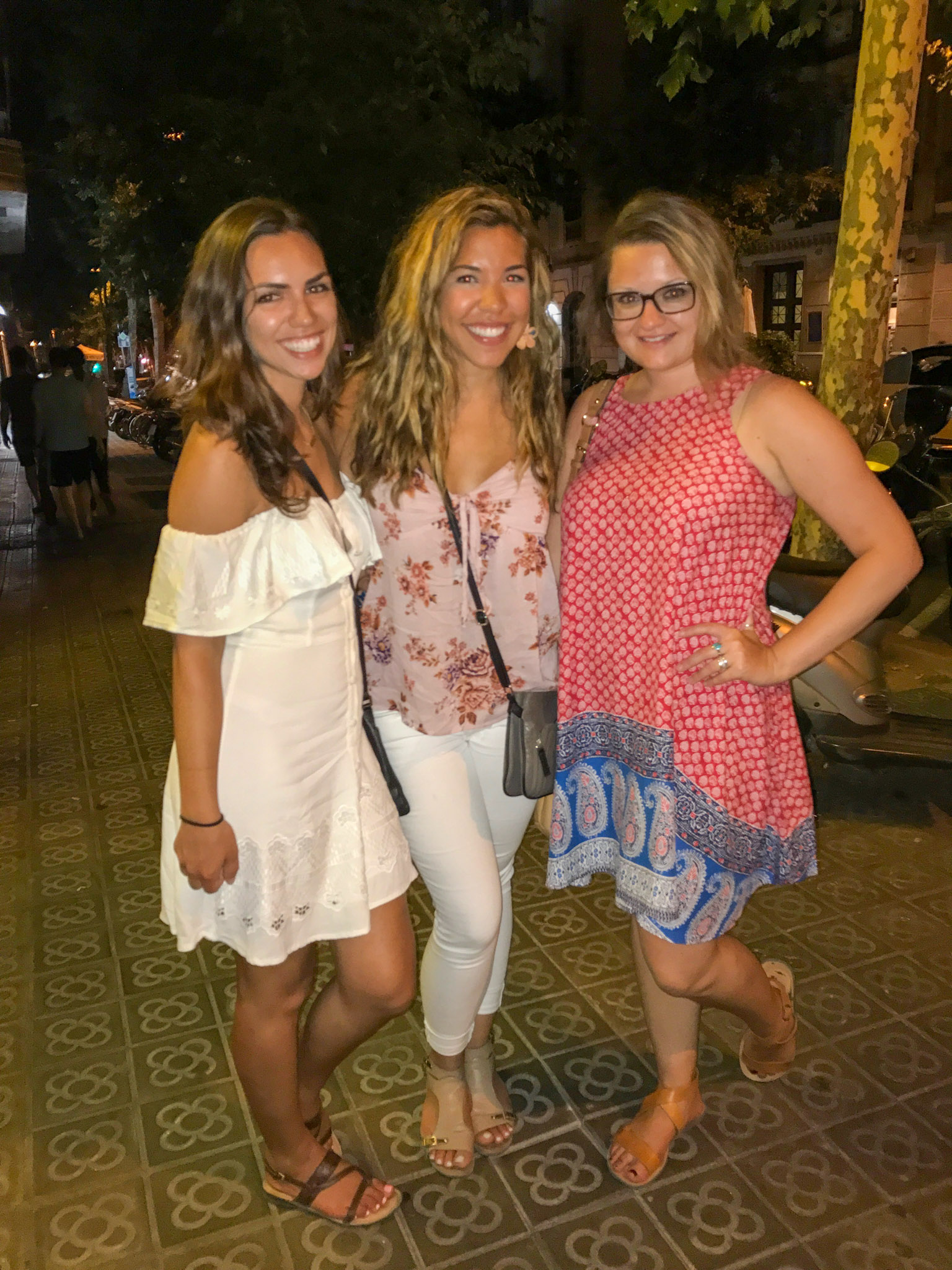

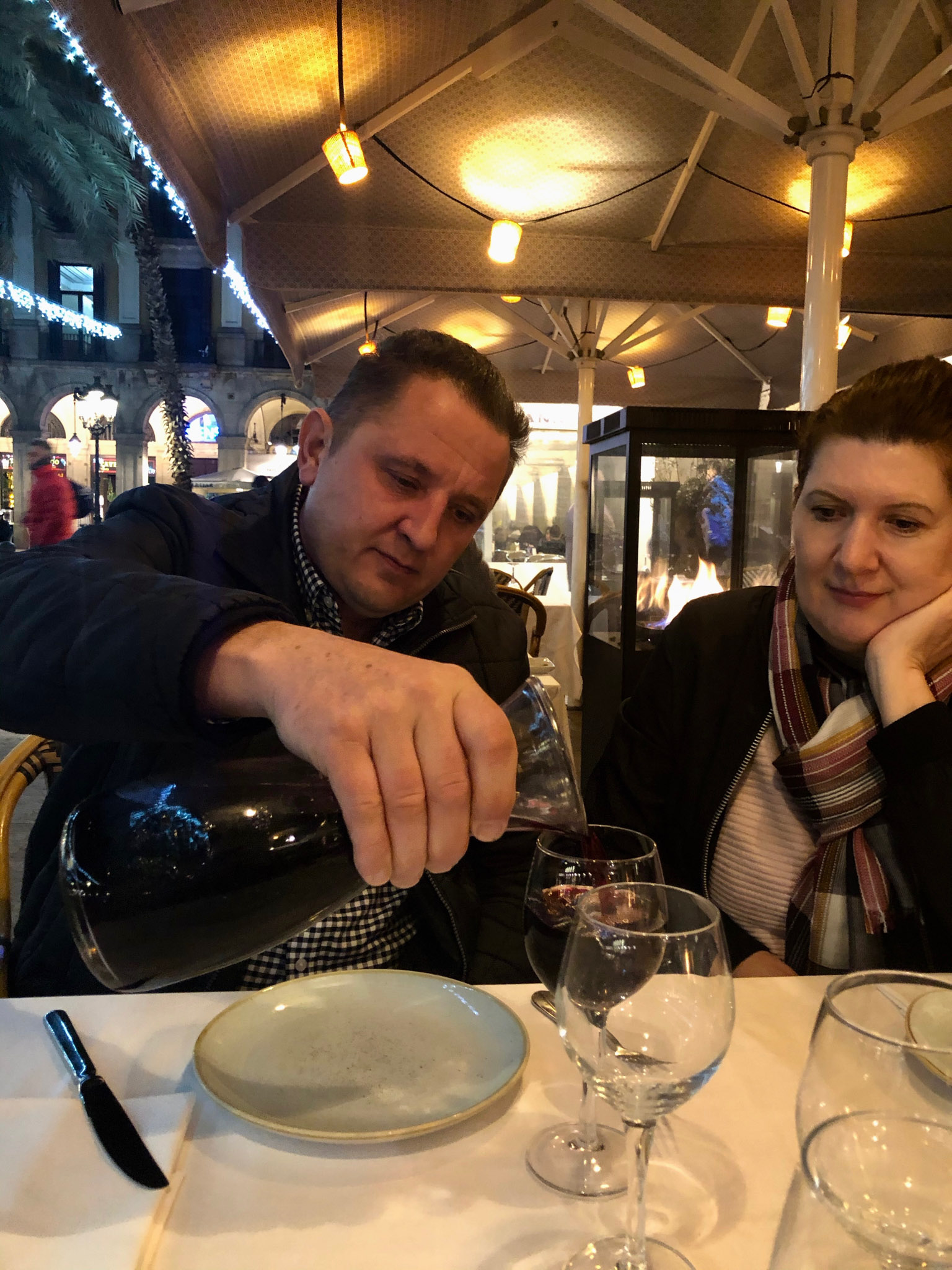

Day 7:
For the last day of your Barcelona itinerary, I will let you choose what you want to see. It’s hard to pick what the absolute must-see places are on a 3-day stay. I was lucky to see this city multiple times and each time I find something new and fascinating to do. The only advice that I have is to not try to do everything because you will miss out on enjoying what you’re looking at. In a true Spanish fashion, take it slow and soak it in.
Here are your options for the last day of your week in Spain:
Tibidabo
If there is anything awesome that I would recommend for your last day in Barcelona, it’s this “hidden gem.” Tibidabo is a hill overlooking all of Barcelona and even though it will take some effort to get there, it’s an unforgettable view. There is a really beautiful church Sagrat Cor, which you can visit but there is also an amusement park along with some walking sites. The unlimited amusement park entrance is pricey but there are some rides that you can pay for a single ride.
To get there, you can take a direct bus from Placa de Catalunya or the L7 line to the Tibidabo to the Tramvia Blay and then the Funicular. When I visited last in 2019, the funicular was under construction so we had to take a taxi on the last leg.
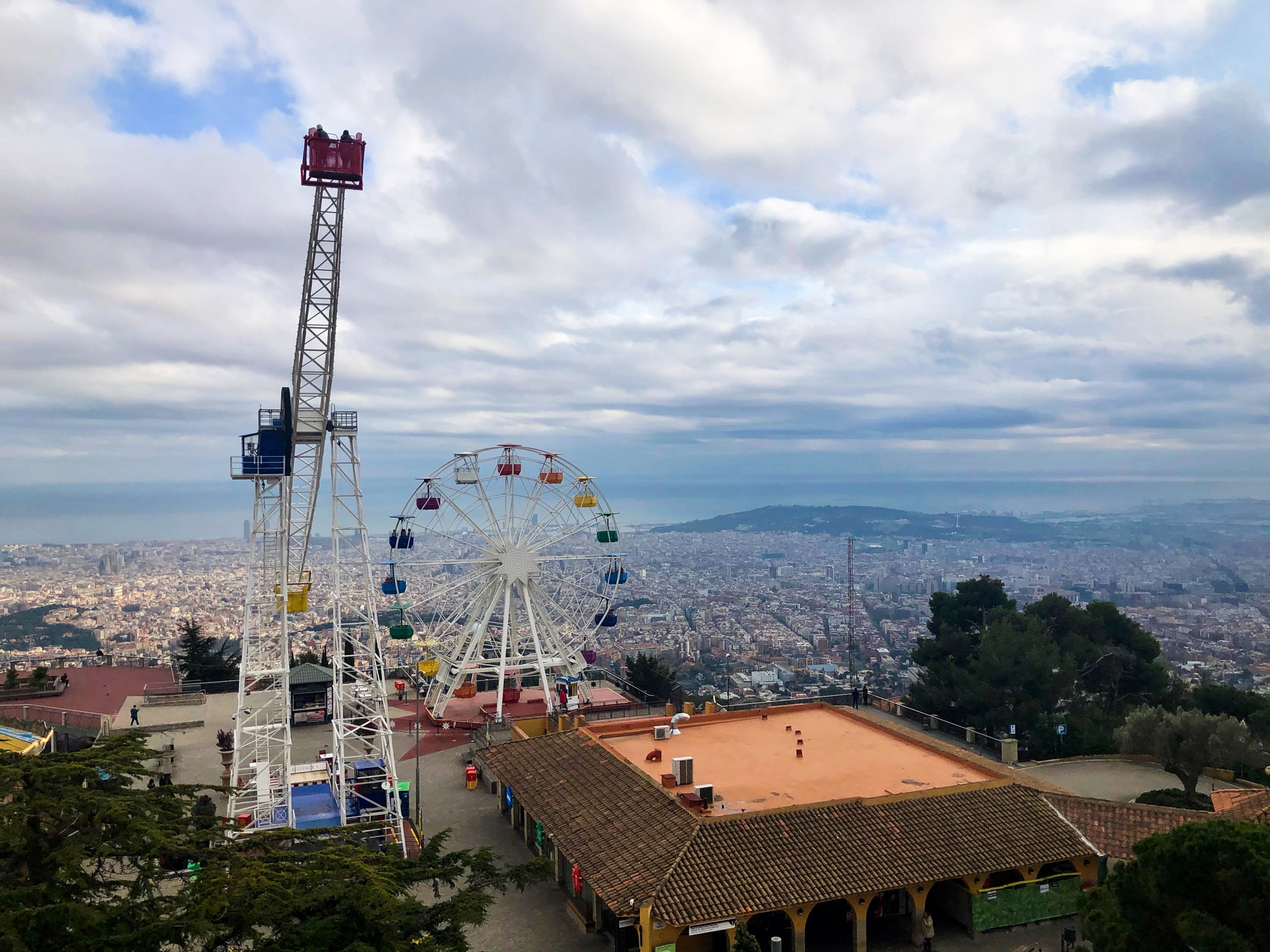





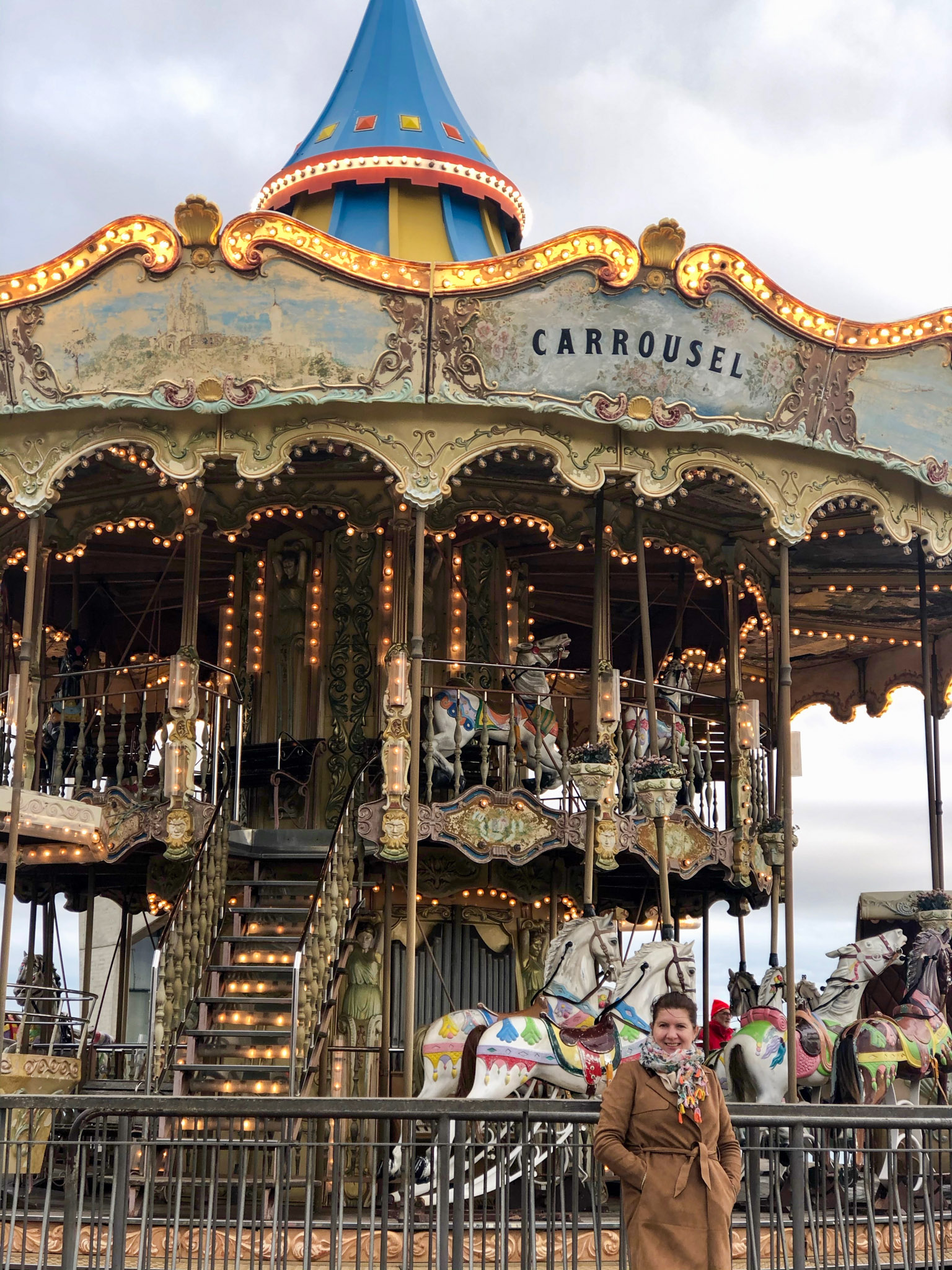

Beach time
Barcelona has a nice beach scene so if you prefer to spend your last day lounging around, make sure to head in that direction. Barceloneta is the most popular one and the most crowded one. You if don’t want to be a sardine, perhaps don’t choose that one. A more quiet beach would be Platja Sant Sebastian but feel free to check out the complete list here.
Make sure to spend time in the Barceloneta neighborhood and walk along the beachfront area that has restaurants and clubs. It’s a pretty area and it’s worth visiting. If you’re planning to hit up the clubs at night, this is where you would go too.
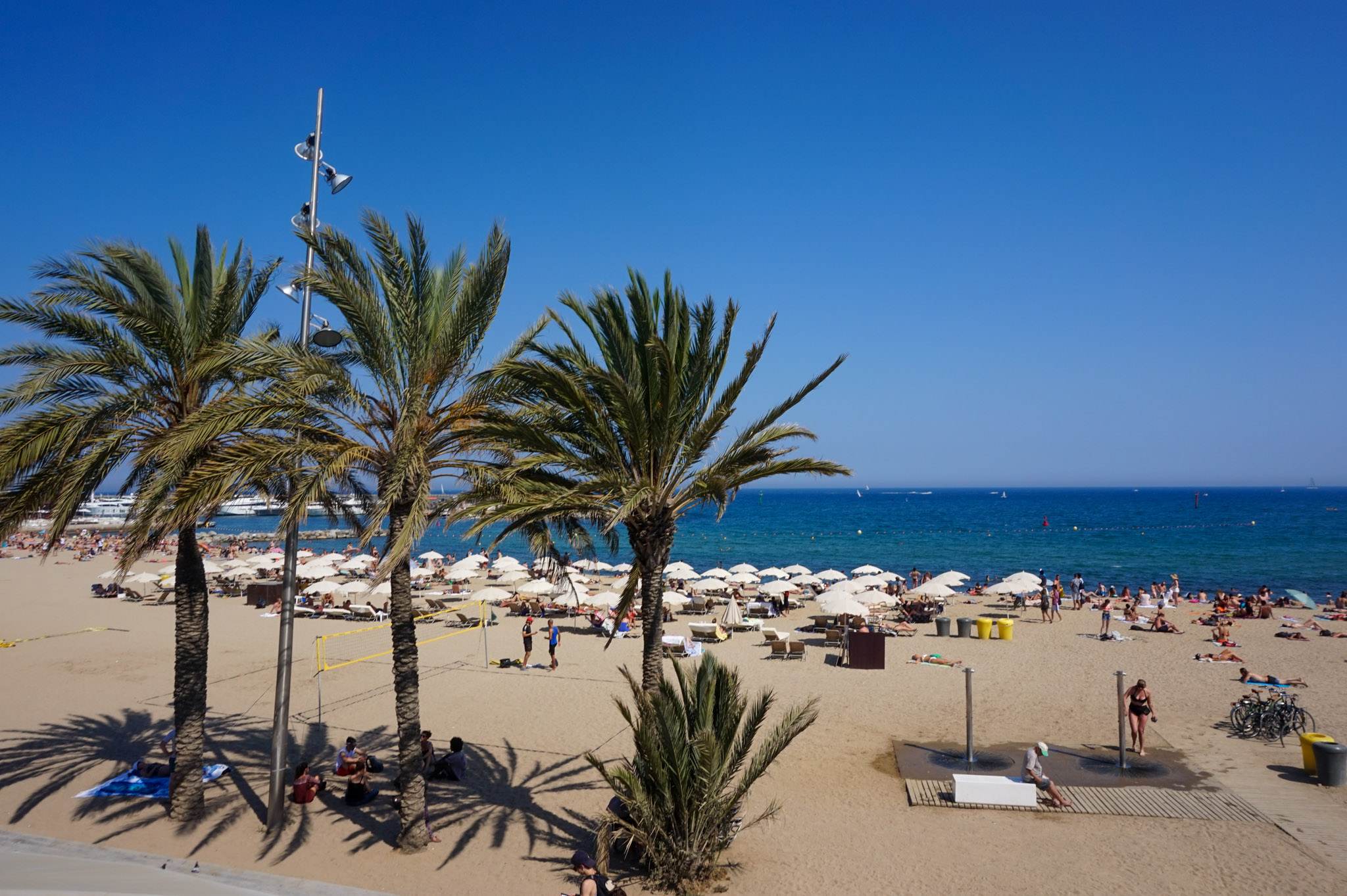

More Gaudi
Gaudi’s style is undoubtedly super unique. I personally took a Gaudi walking tour in addition to the free walking one because I wanted to see more of his work. Whether you choose a tour or not, in addition to Parc Guell and Sagrada Familia, he is also famous for the following structures:
- Casa Mila: Known as La Pedrera or “The stone quarry” this house has a very unique appearance. There is a stunning terrace up top and tickets start at 25 euros.
- Casa Batllo: Located not too far from Casa Mila, this building is just another instance masterpiece. There is also a rooftop terrace. Tickets sell out a week in advance and even further out in the high season. They also start at 35 euros.
- Casa Vicens: Gaudi’s first major project is located in the Gracia neighborhood. It’s less popular than the two above but not any less impressive. Tickets start at 21 euros.
If the prices of the above are a little much, especially after seeing Parc Guell and Sagrada Familia don’t worry, the houses are also stunning to look at from the outside. And if you take a Gaudi tour you’ll get the history behind them too. Remember that most major cities have apps with history audioguides which you can simply download and listen to outside the building without taking any tours.
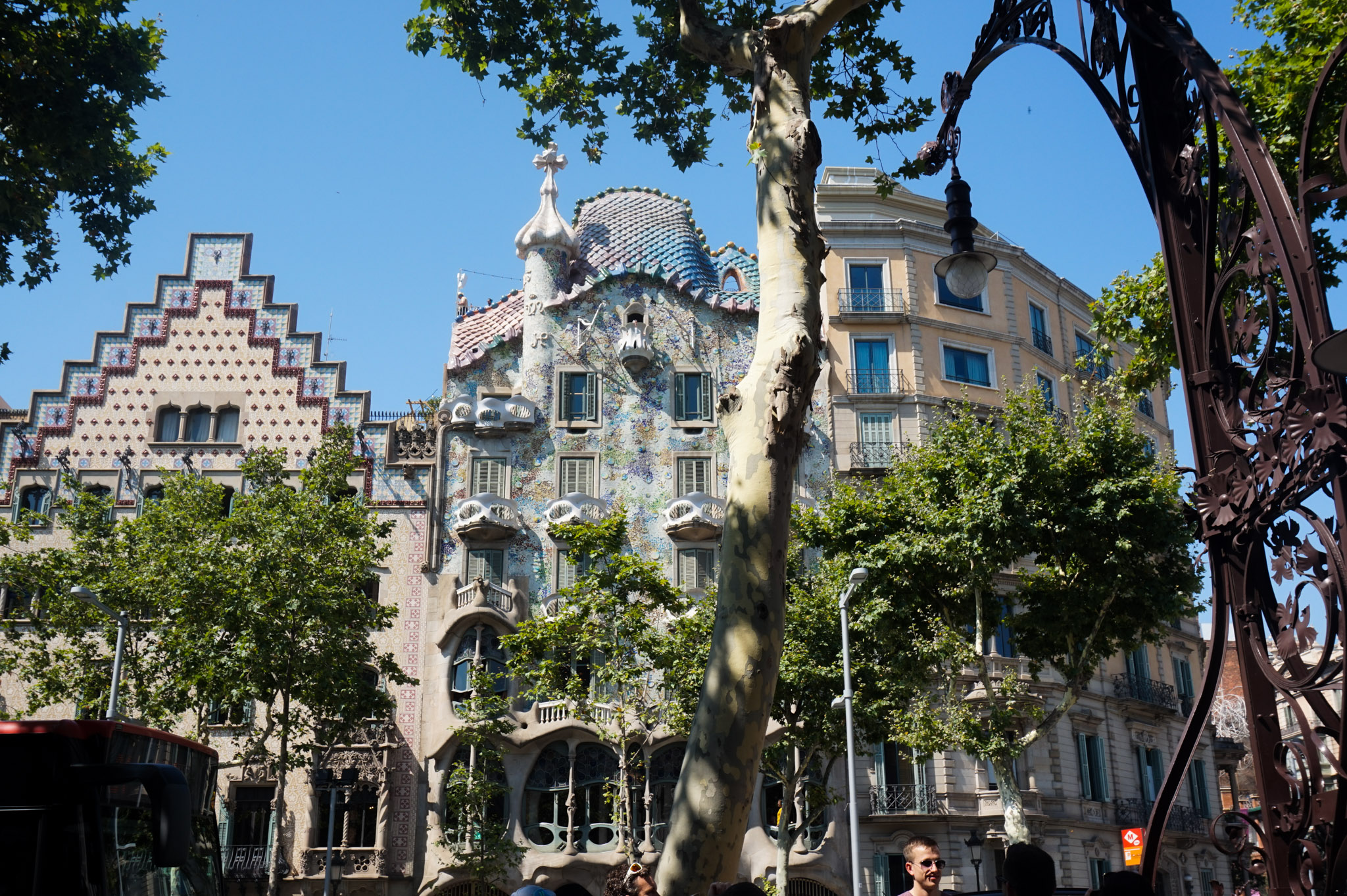

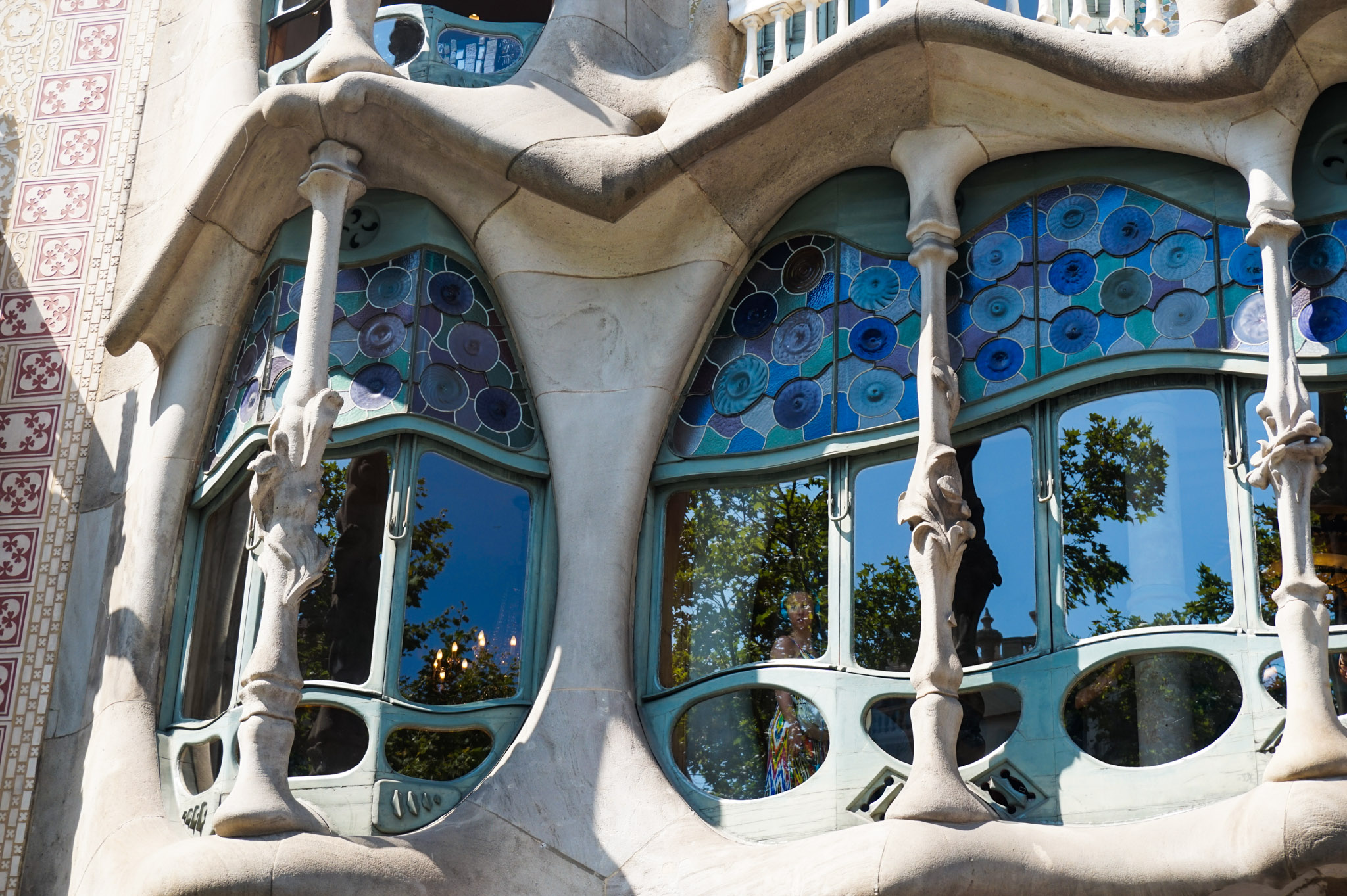




Tapas Tour
Food tours are always my favorite way to see the city. Although they tend to be pricey, I feel like I personally learn and experience the city better compared to a free walking tour. As much as I recommend and love free walking tours, sometimes they can run pretty long. With food tours, you can eat your way through the city, try foods you wouldn’t have thought to do yourself, and get a little bit of history in between.
Here are some examples of tours you can take:
Camp Nou
The last time I visited Barcelona, I went with my parents. My dad’s only request for his entire week in Spain was to see Camp Nou, the official football stadium of FC Barcelona. To be honest, I had very little interest in seeing a stadium but nonetheless, it ended up being a fun experience and something I would have never done myself. Rather than visiting the stadium though, I would consider attending the match if you happen to be there during one.






Miscellaneous Places
- If you haven’t had a chance to stroll through Ciutadella Park, which houses the beautiful Arc de Triomf, make sure to make your way there.
- Passeig de Gràcia: A long picturesque street full of high-end shopping stores.
- Picasso Museum: If you’re a fan of Picasso, don’t miss this museum as it houses some of his best work. Admission is only 12 euros too.
- Montserrat: This would be a day trip to the neighboring mountain region. There are many trips that take you on a wine tasting and exploration of this region.
Final Thoughts
A week in Spain is nowhere near enough to experience the country. I spend 2 short months there and then returned multiple times since, and I still find new things to do each time. One of my favorite things about Spain is how distinct each region is and how it almost feels like you’re visiting a different country at each stop.
I hope that my itinerary for a week in Spain gives you a solid introduction to this amazing country. Although the Spaniards might love their siestas, you will be busy exploring 7/7 days of your trip. If you have any questions or comments, leave them below.
A Map and downloadable itinerary
Don’t forget to download the week in Spain itinerary and save the map for your stay!
Remember that the itinerary is a very high-level summary of everything described above. Before you download it, make sure to read the blog post above for the best trip preparation.
More Guides
And if you liked this guide, don’t forget to check out other amazing neighboring places!
An Exciting 4-Day Ibiza Itinerary Without (Too Much) Partying
Ibiza has been on my radar my entire travel life. When I was younger I always imagined partying at numerous clubs all night. However, when you visit Ibiza in your 30s and realize how much more the island has to offer than sweaty parties, you end up loving it for so many other reasons. With…
Continue Reading An Exciting 4-Day Ibiza Itinerary Without (Too Much) Partying
First Timers Guide to Tomorrowland – The Best Festival in the World
I vividly remember the first time I saw a Tomorrowland after-movie. That day, I knew that one day I had to experience this festival for myself. I was lucky enough to attend Tomorrowland in 2023 and it was by far one of the most amazing festivals of my life. If you’re thinking about going in…
Continue Reading First Timers Guide to Tomorrowland – The Best Festival in the World
Copenhagen Solo Travel: An Exciting Weekend Itinerary
Demark is known for having the happiest people around. I could certainly tell you that after only a couple of days there I myself was happier too. My solo weekend in Copenhagen was awesome! There is a reason why this city is so often recommended for traveling solo. It’s beautiful, chic, easy to navigate, has…
Continue Reading Copenhagen Solo Travel: An Exciting Weekend Itinerary
How to Spend 2 Days in Budapest: Itinerary & Map
Whenever I had convos about the best cities in Europe, Budapest always came up. I knew it would be an awesome city to visit but I didn’t realize just how awesome. After seeing it for the first time this summer, I only regretted not staying longer. It’s such a wildly underrated city in my opinion.…
Continue Reading How to Spend 2 Days in Budapest: Itinerary & Map
How to Visit The Blue Lagoon on Your Iceland Layover
With travel back in full swing, our summer flight budgets were pushed over the edge. After 3 weeks in Europe, I needed a cheap one-way flight back to New York. I found a nice $400 connection from Copenhagen through Keflavik with an 8-hour layover. I did not want to spend that time at the airport…
Continue Reading How to Visit The Blue Lagoon on Your Iceland Layover
3 Day Lisbon Itinerary: A Perfect Introduction to the City
Back in 2012 when I first visited Lisbon, this city was somewhat of a hidden gem. It was filled with backpackers, cheap drinks, and most importantly, an incredible atmosphere. I returned a couple of months ago, and even off-season, the city has now been modern-day colonized by tourists, digital nomads, and Airbnbs. And no, it…
Continue Reading 3 Day Lisbon Itinerary: A Perfect Introduction to the City

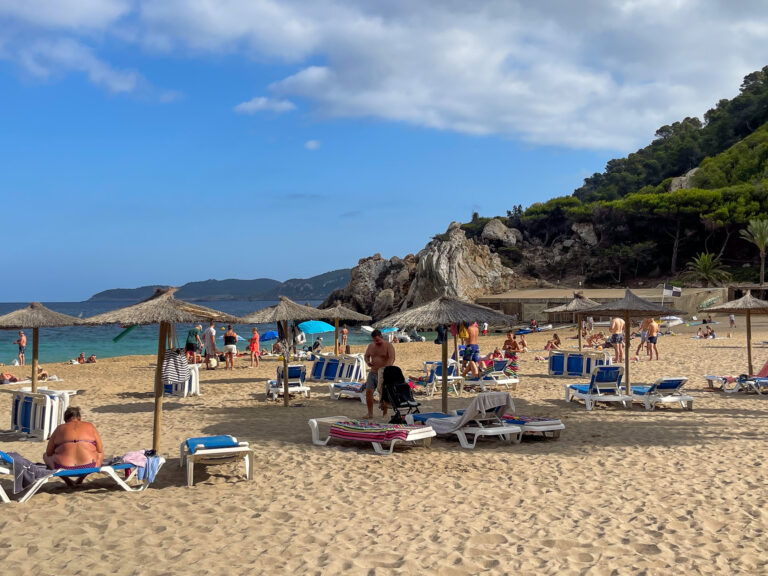

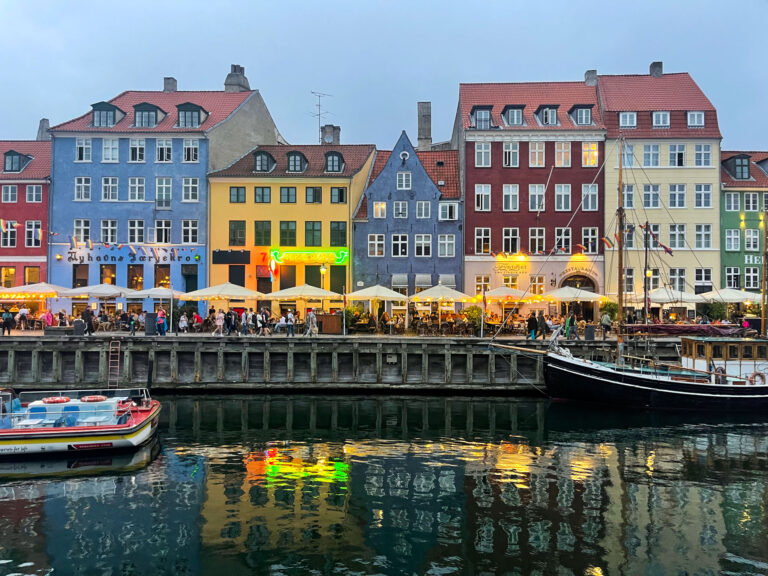
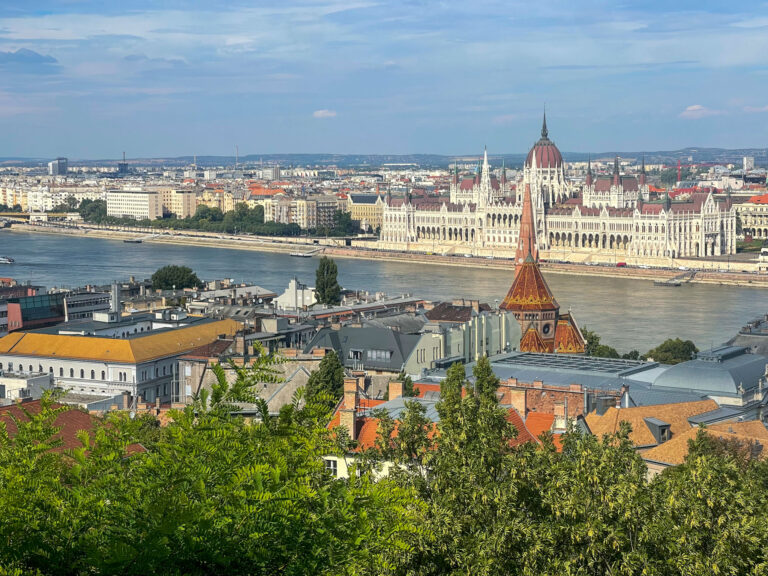
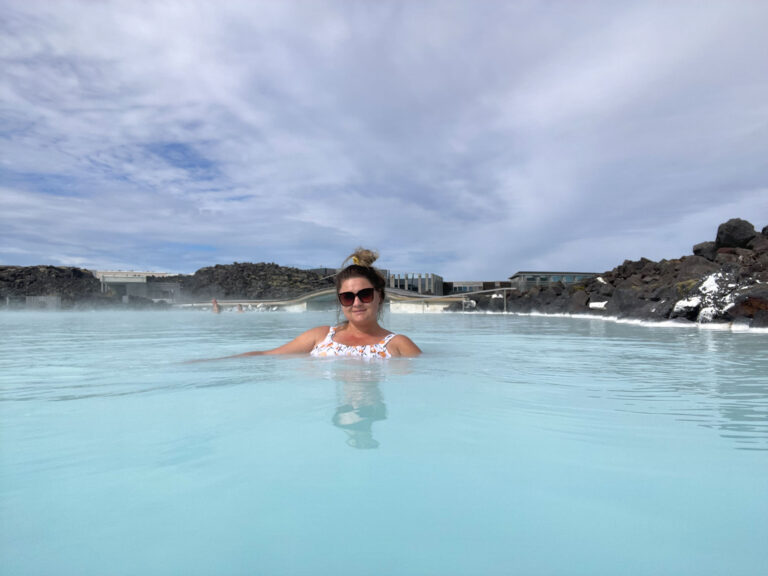
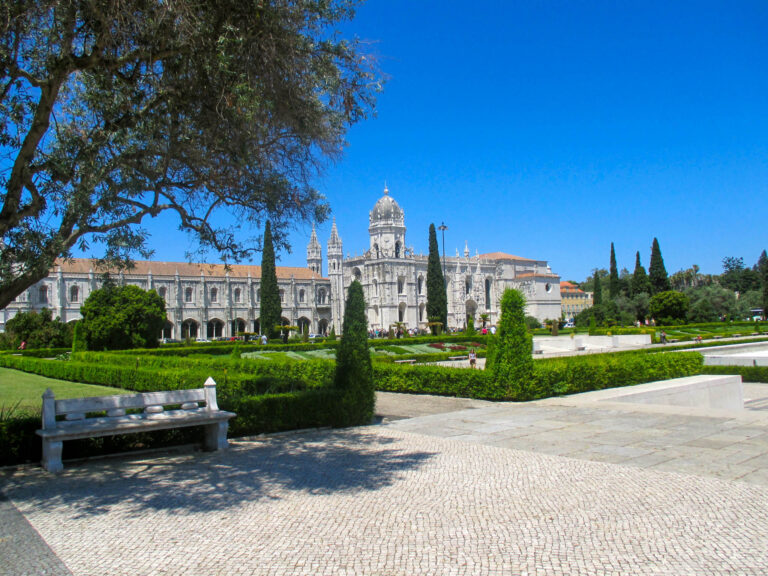
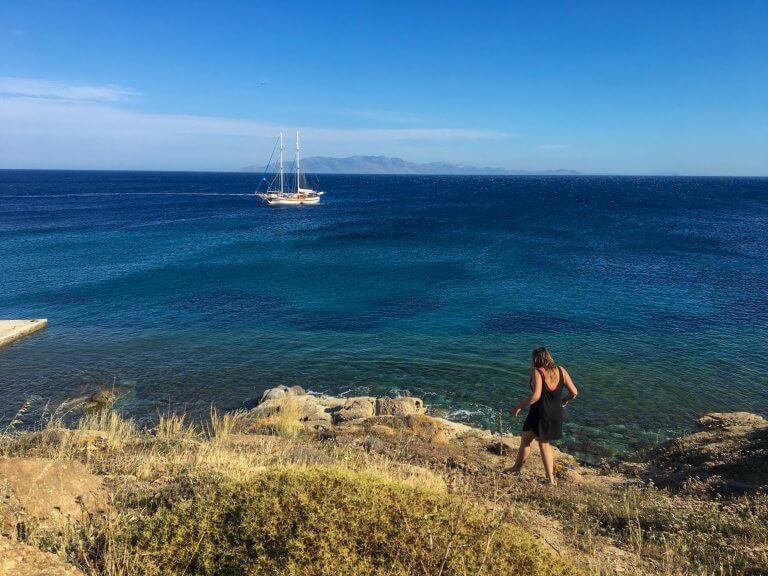
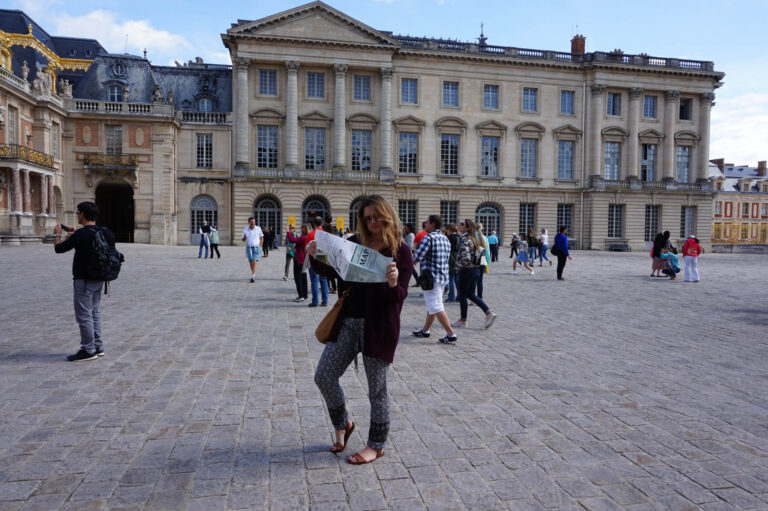
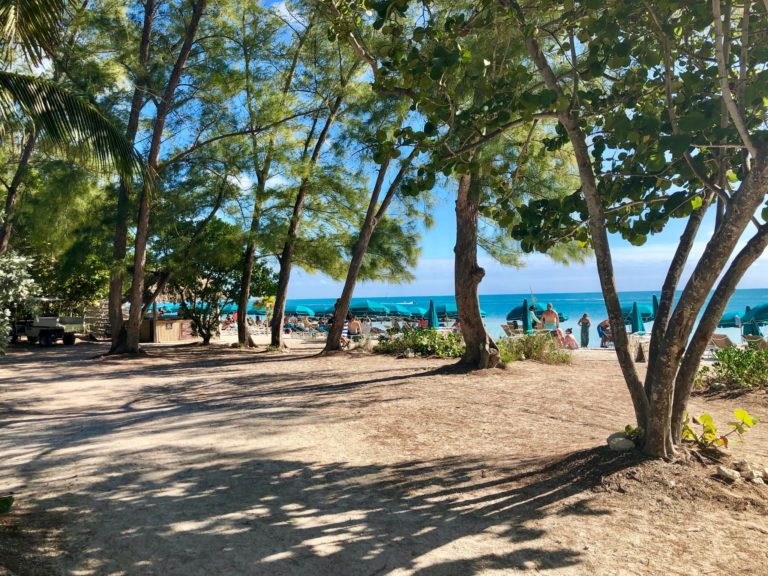
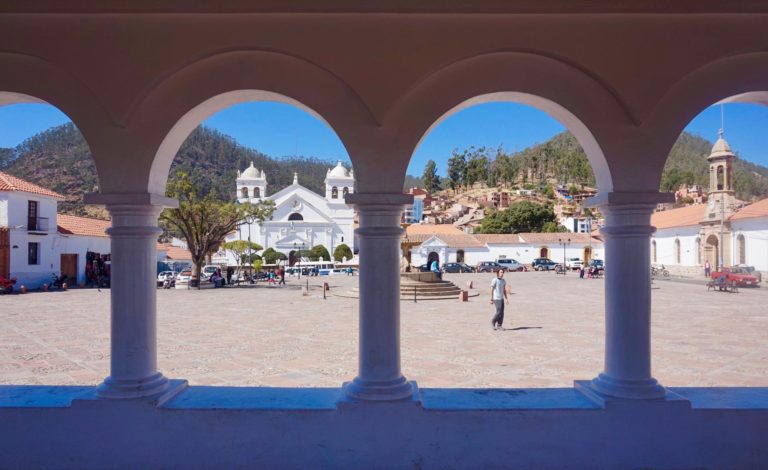
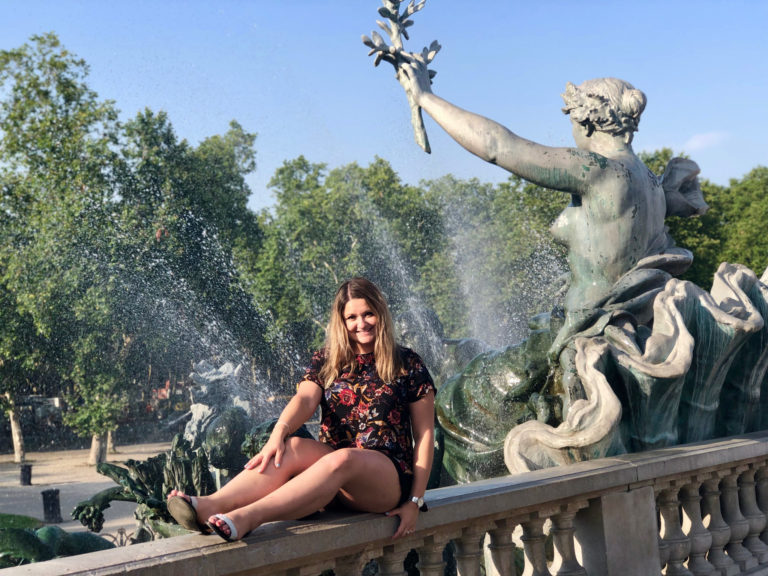
2 Comments